Inbox and Environment News: Issue 488
March 21 - 27, 2021: Issue 488
Captive Trees At Mona Vale
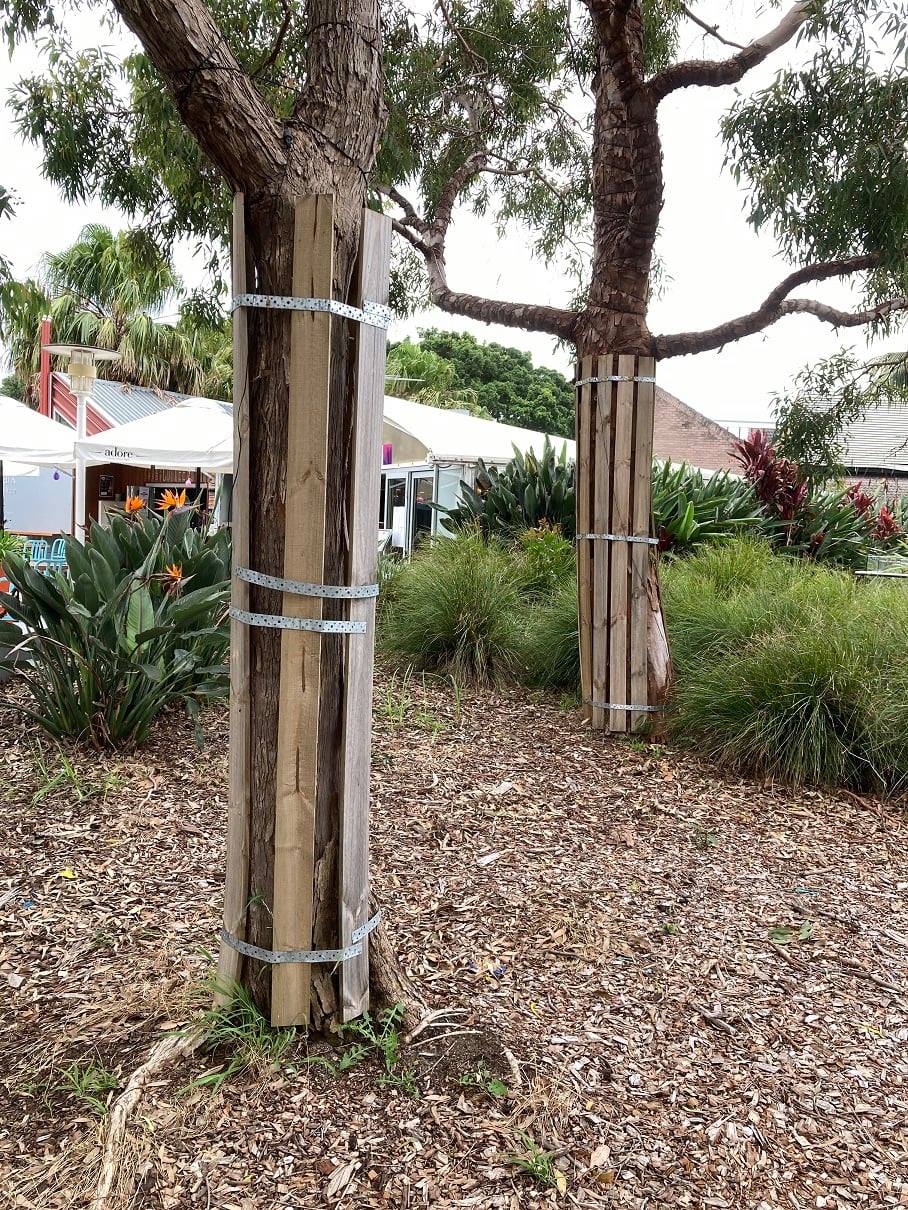
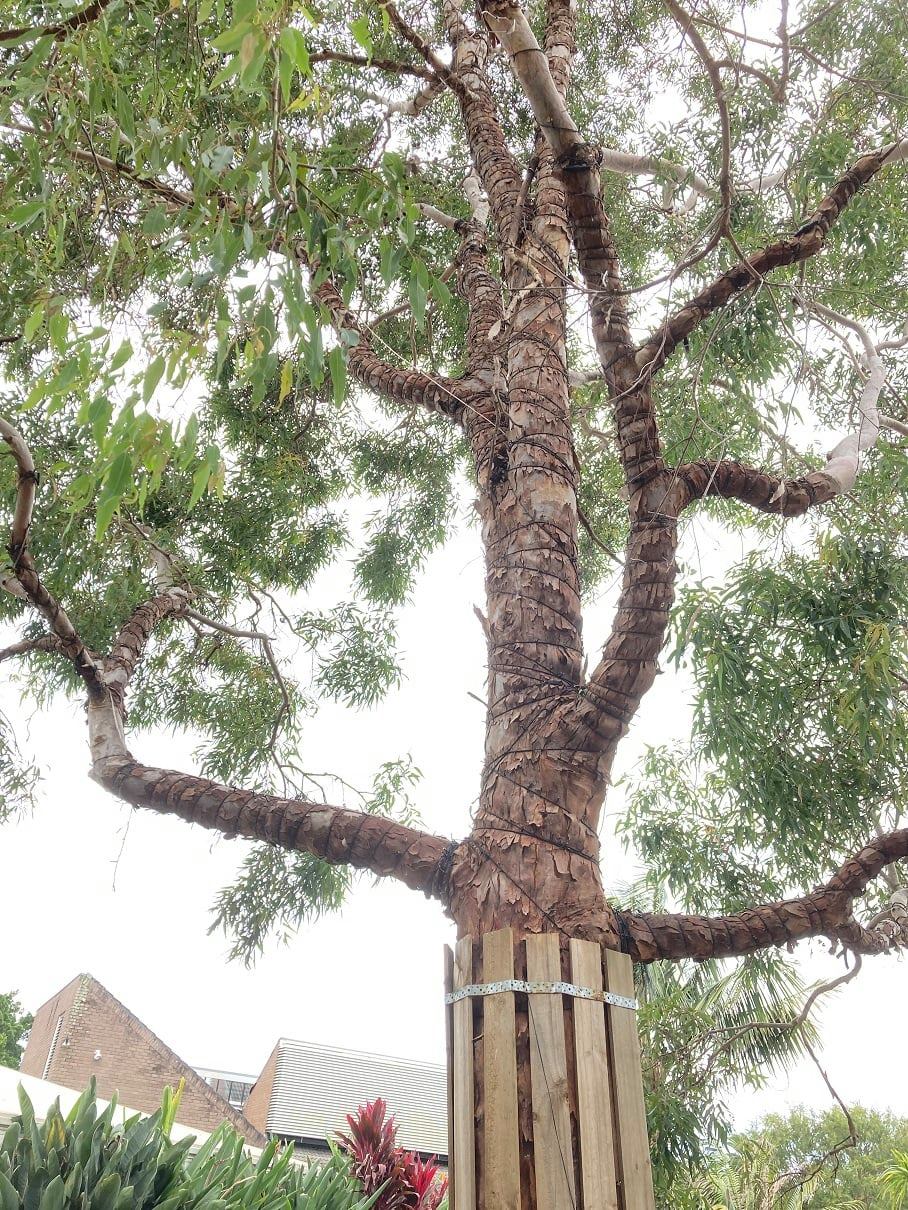
Avalon Golf Course Bushcare Needs You


Earth Hour 2021: 8.30PM Saturday 27th March
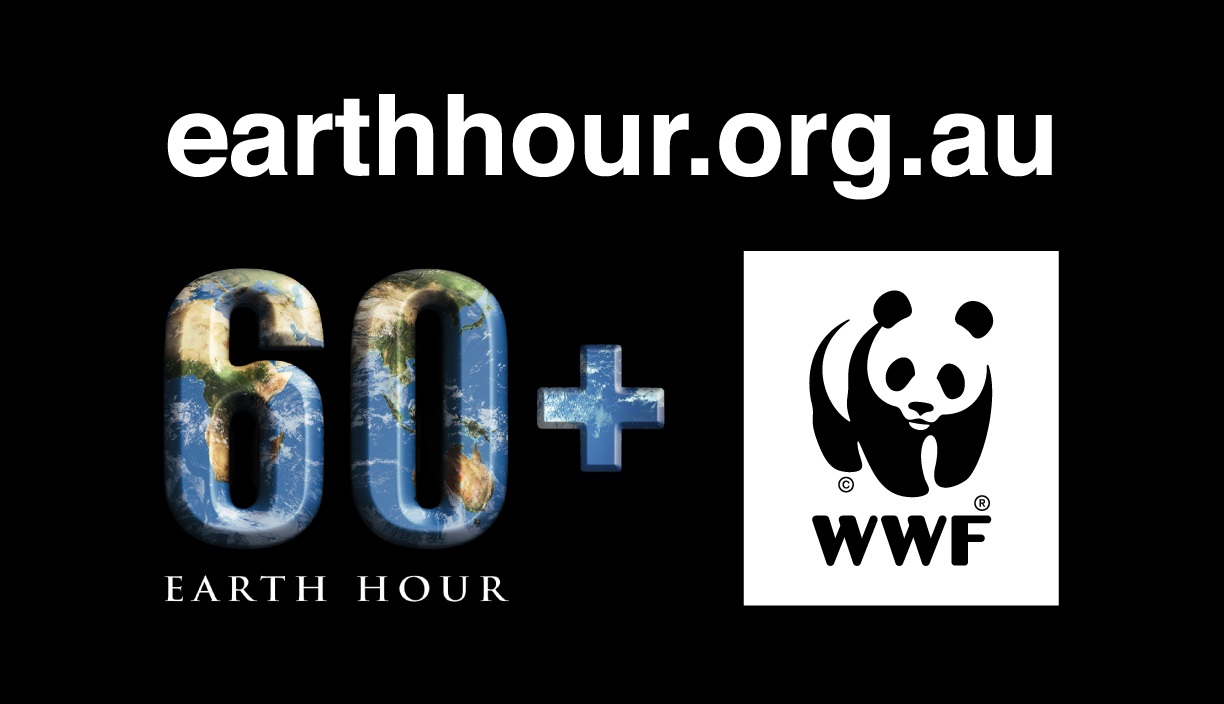
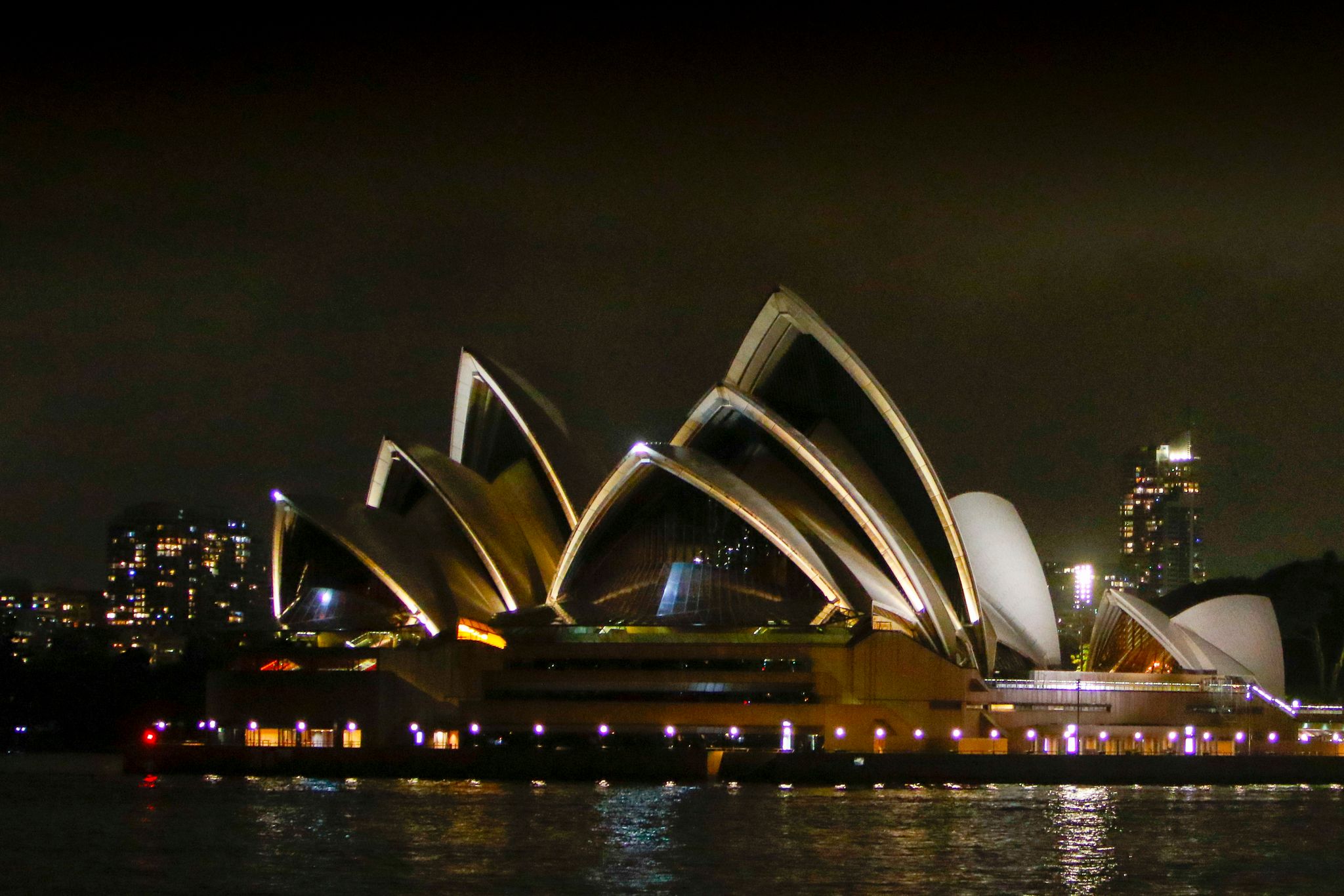
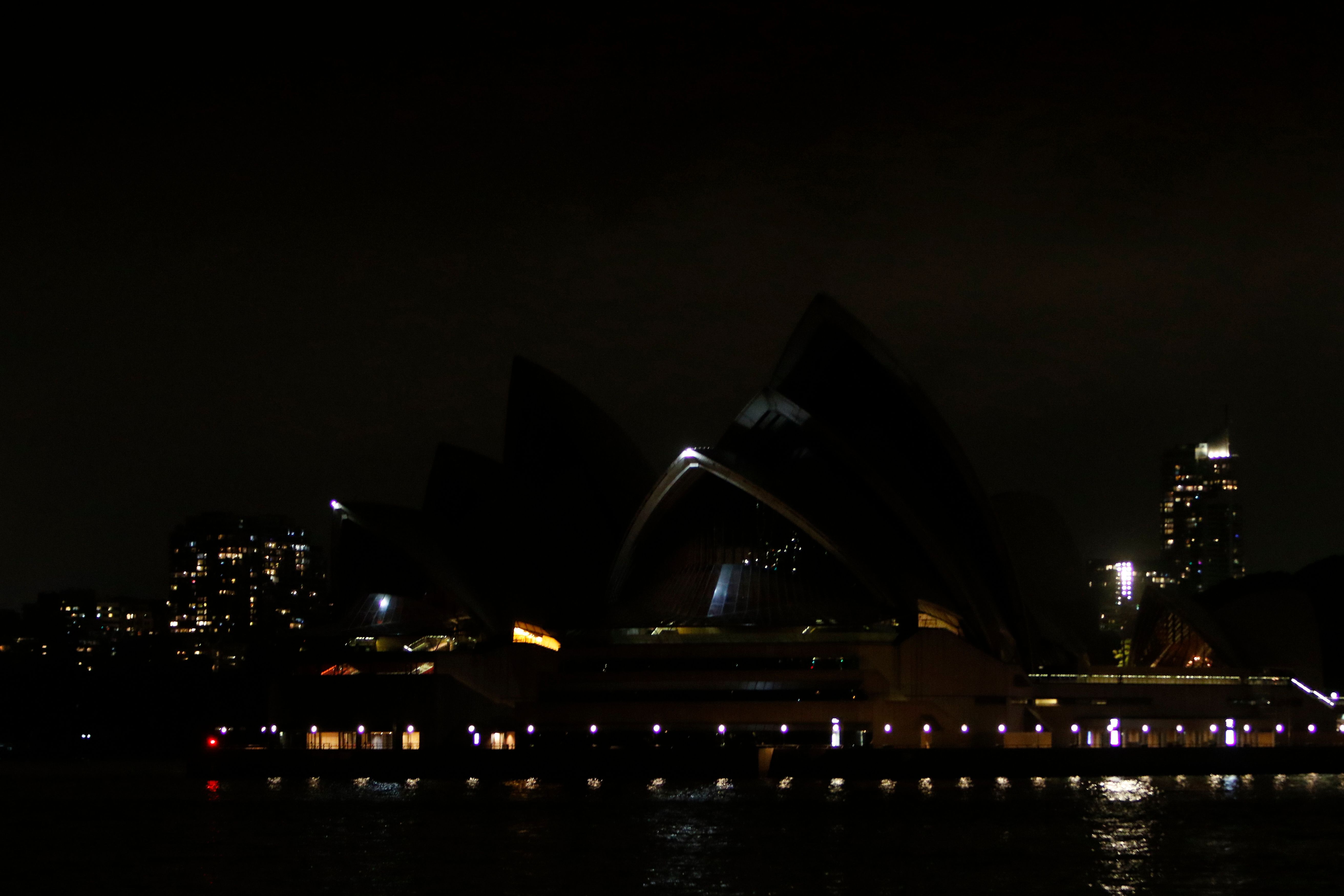
Narrabeen Rockshelf

Newport Community Garden A TV Star
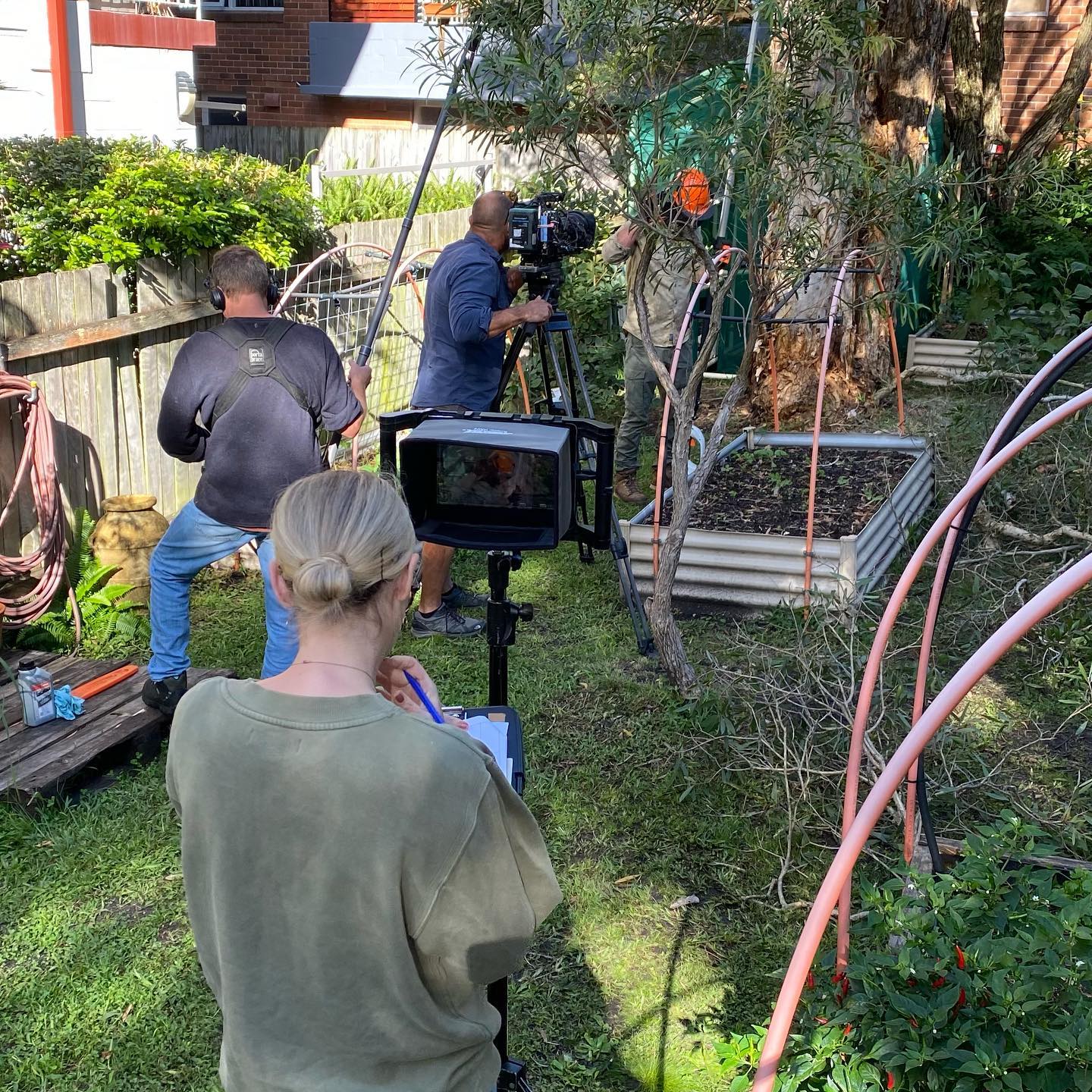
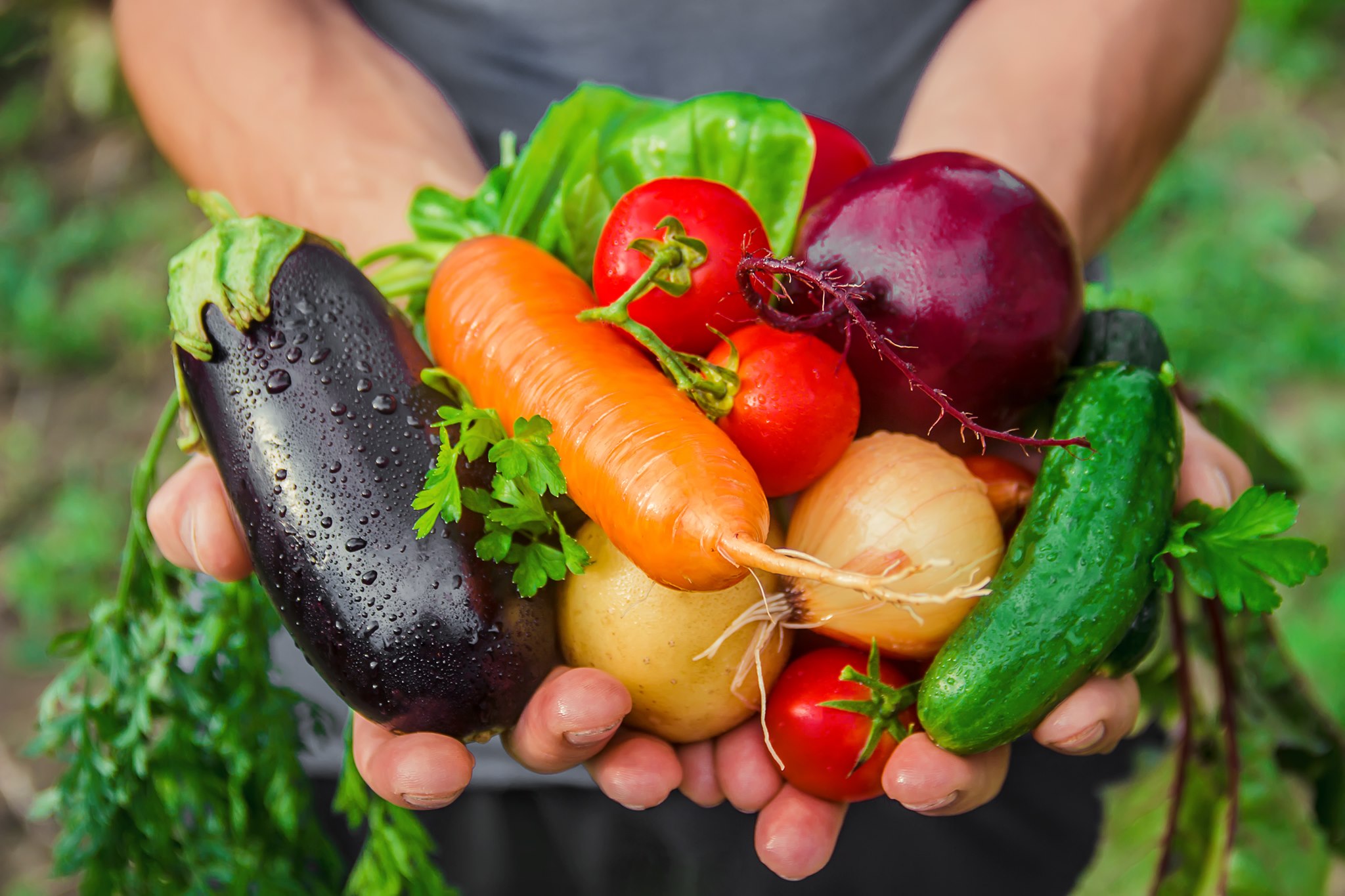
Avalon Community Garden
Avalon Community Garden’s primary purpose is to foster, encourage and facilitate community gardening in Pittwater on a not-for-profit basis.
The garden was started in 2010 by a group of locals who worked in conjunction with the support of Barrenjoey High School to develop a space that could be used by the local community, to grow
vegetables, herbs, plants and flowers, and practice sustainable gardening techniques to benefit its members and the community overall.
The garden has been very successful and has grown and developed since its inception, in terms of its footprint, infrastructure, variety of produce and diversity of members. The garden welcomes new members all year round. Levels of contribution range from multiple times a week, to once a month. Your contribution is always welcome, and it is acknowledged people will have varying levels of commitment.
We encourage you to join and start enjoying the following benefits associated with community gardening:
They provide benefits for individuals and for the community as a whole. Community gardens provide education on gardening, recycling and sustainable use of natural resources.
They develop community connections and provide a means of engaging youth, children, the elderly and the disabled and otherwise marginalised individuals in mutually enjoyable and rewarding activities, thus helping to develop more functional and resilient communities.
People involved in community gardens say they improve wellbeing by increasing physical activity and reducing stress, providing opportunities to interact meaningfully with new friends, give time for relaxation and reflection as well as an opportunity to improve their interconnectedness with nature.
To get involved take a look around the site, join the Facebook group and come along and visit on a Sunday morning between 10 and 12 at the garden within Barrenjoey High School on Tasman Road, North Avalon.
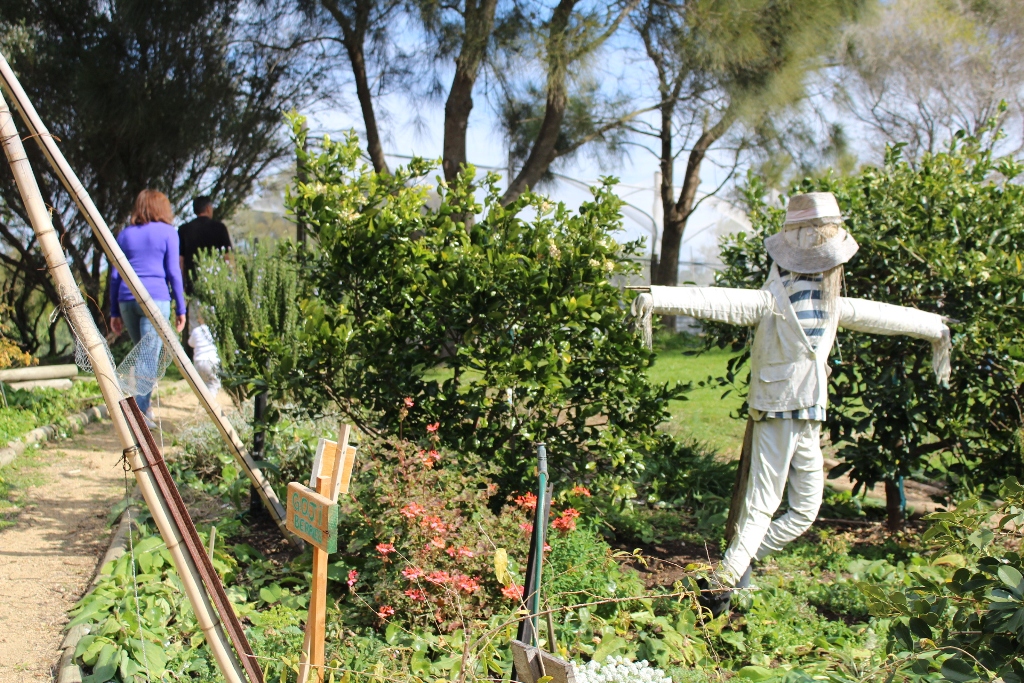
WITHOUT OLD HOLLOW TREES...
THIS, Would Not Be.
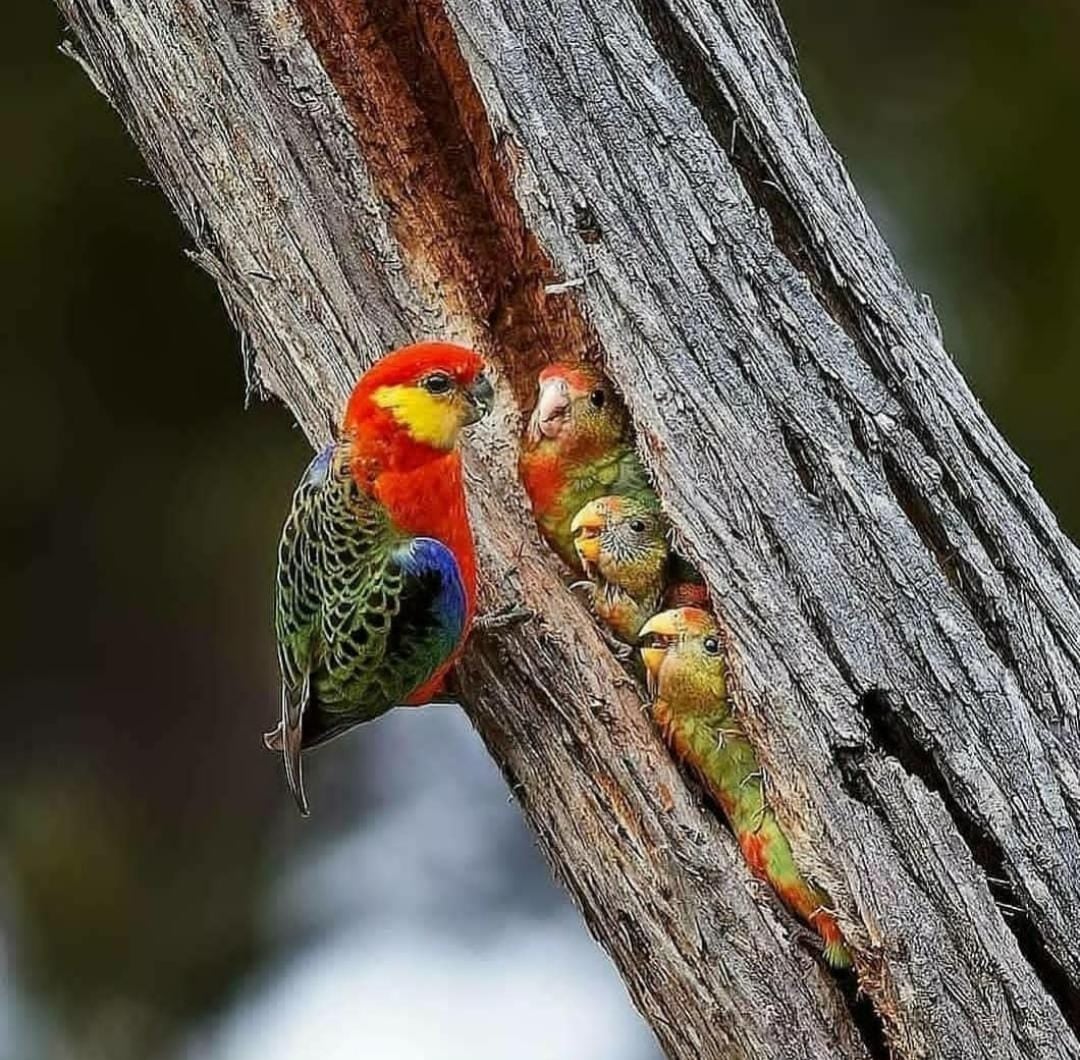
BirdLife Australia Autumn Survey Time
- Breeding behaviours - If you see a bird carrying nesting materials, sitting on a nest or feeding chicks, let us know. Select the option under 'Breeding Activity' that best matches your observation (remember to keep your distance though from birds who are breeding. We don't want to disturb any nests. Be sure to limit your observations and don't get close enough to scare a bird off it's nest.)
- Aggressive interactions – Let us know if you have observed any species initiate interactions with other birds and whether this interaction could be classed as aggressive – you can do this in the sighting details tab using the specific species interactions option.
- Have you seen any birds feeding on the native plants in your garden? If so – who was dining on what? – you can tell us in the notes section when you record the species you have observed under “sighting details”
- Have any birds been dabbling in some Oscar-worthy acting? – tell us about the weird and wonderful things your backyard birds have been up to you using the notes section in the sighting details tabs.
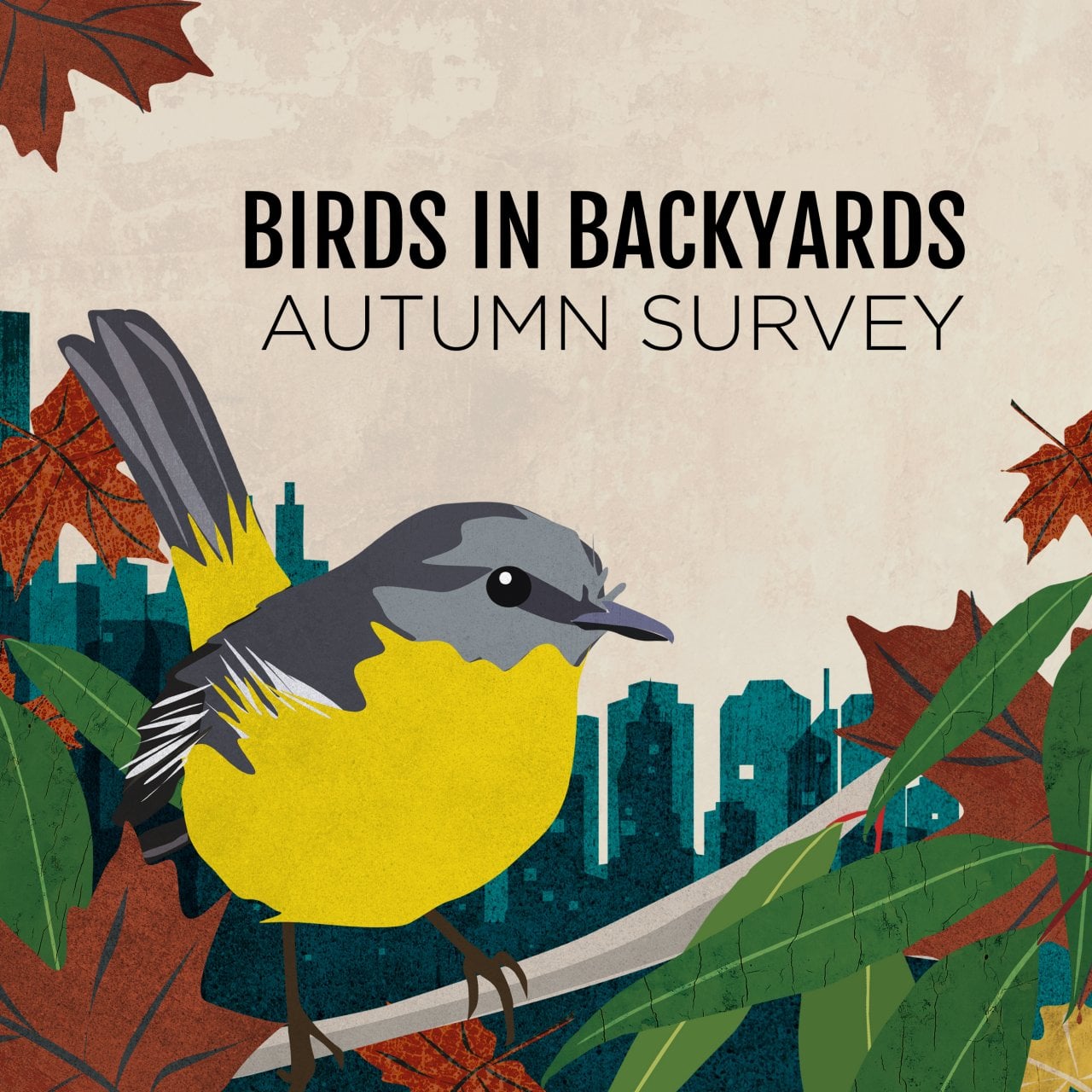
Narrabeen Lagoon Clean Up: March 28
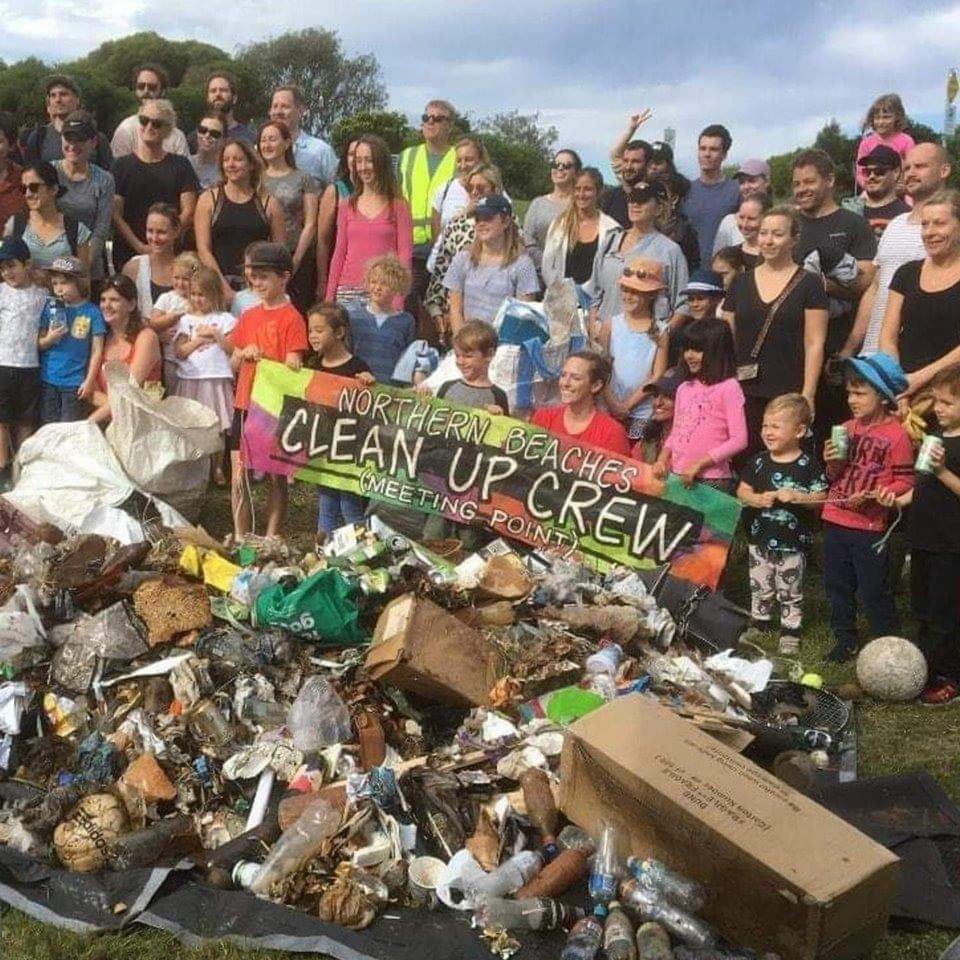
Inquiry Into Declining Numbers Of Macropods
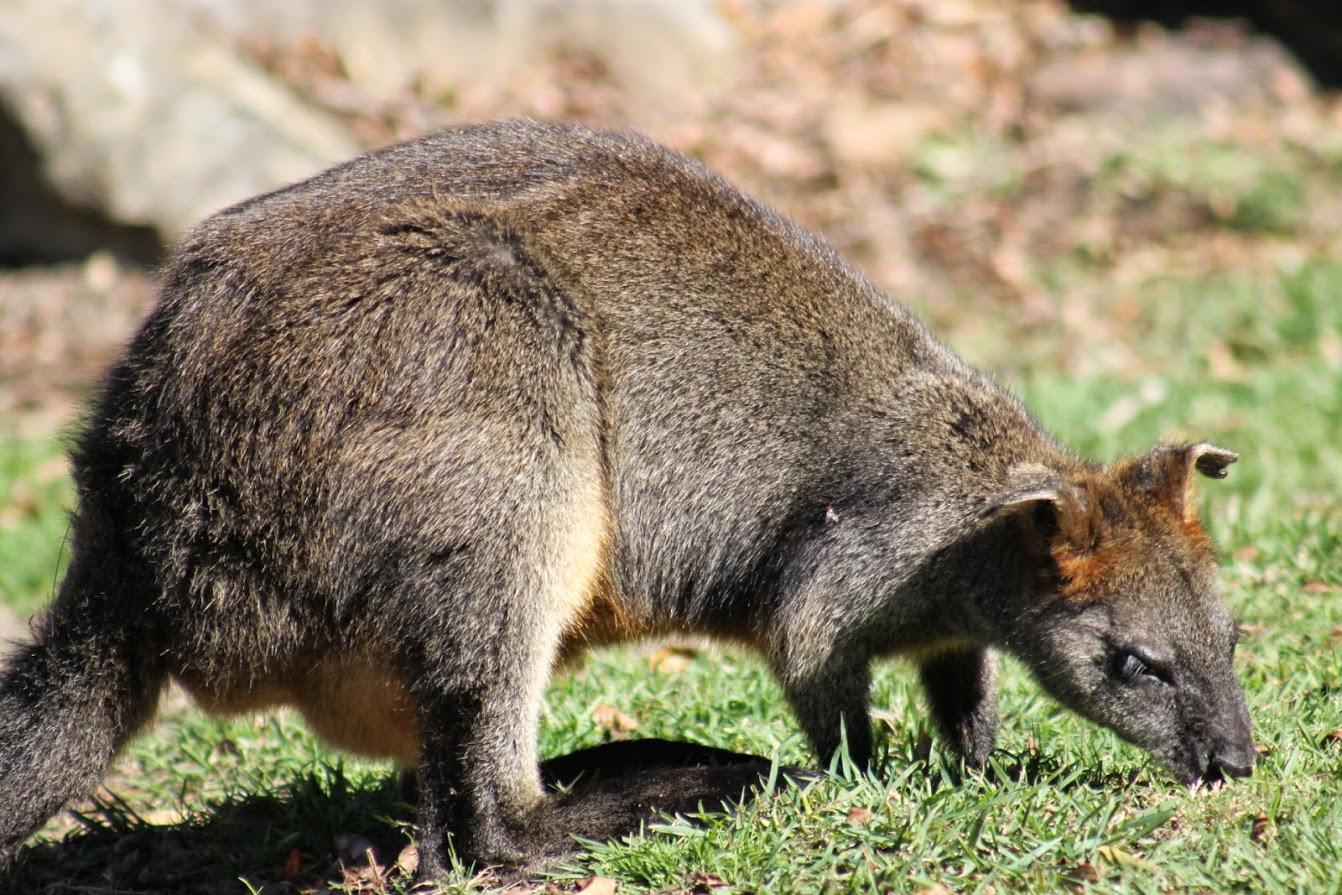
Design And Place State Environmental Planning Policy (SEPP): Open For Feedback Until March 31
'The Design and Place SEPP puts place and design quality at the forefront of development. Our shared responsibility to care for Country and sustain healthy, thriving communities underpins the policy. The SEPP spans places of all scales, from precincts, significant developments, and buildings to infrastructure and public space. ''The public exhibition will allow us to work closely with state government, local councils, industry peak bodies and communities. This process will inform the development of the Design and Place SEPP and safeguard our shared values for future development in NSW. We will draft the policy in 2021, following the review of the formal submissions and feedback. Submissions are open from now until 31 March 2021. 'The final Design and Place SEPP will go on public exhibition later in 2021 to provide more opportunities for feedback. We will also develop supporting guidance and tools alongside the policy. These include a revision to the Apartment Design Guide, improvements to the Building Sustainability Index (BASIX) tool and the development of a new Public Space and Urban Design Guide. '
Worth Noting: Australian Car Sales Statistics 2020
- There were 1,062,867 new vehicles sold in Australia 2019
- New car sales in Australia dropped 8% down from 2018, making it the lowest since 2011
- Toyota was the top-selling car brand in 2019, with 205,766 total sales
- SUVs accounted for 45.5% of new car sales in 2019
NSW Department Of Planning Projects On Exhibition: Open For Comment
- your name and address, at the top of the letter only;
- the name of the application and the application number;
- a statement on whether you ‘support’, ‘object’ to the proposal or are only making a comment;
- the reasons why you support or object to the proposal; and
- a declaration of any reportable political donations you made in the previous two years.
Bushcare In Pittwater
Where we work Which day What time
Avalon
Angophora Reserve 3rd Sunday 8:30 - 11:30am
Avalon Dunes 1st Sunday 8:30 - 11:30am
Avalon Golf Course 2nd Wednesday 3 - 5:30pm
Careel Creek 4th Saturday 8:30 - 11:30am
Toongari Reserve 3rd Saturday 9 - 12noon (8 - 11am in summer)
Bangalley Headland 2nd Sunday 9 to 12noon
Bayview
Winnererremy Bay 4th Sunday 9 to 12noon
Bilgola
North Bilgola Beach 3rd Monday 9 - 12noon
Algona Reserve 1st Saturday 9 - 12noon
Plateau Park 1st Friday 8:30 - 11:30am
Church Point
Browns Bay Reserve 1st Tuesday 9 - 12noon
McCarrs Creek Reserve Contact Bushcare Officer To be confirmed
Clareville
Old Wharf Reserve 3rd Saturday 8 - 11am
Elanora
Kundibah Reserve 4th Sunday 8:30 - 11:30am
 Mona Vale
Mona Vale Mona Vale Beach Basin 1st Saturday 8 - 11am
Mona Vale Dunes 2nd Saturday +3rd Thursday 8:30 - 11:30am
Newport
Bungan Beach 4th Sunday 9 - 12noon
Crescent Reserve 3rd Sunday 9 - 12noon
North Newport Beach 4th Saturday 8:30 - 11:30am
Porter Reserve 2nd Saturday 8 - 11am
North Narrabeen
Irrawong Reserve 2nd Saturday 2 - 5pm
Palm Beach
North Palm Beach Dunes 3rd Saturday 9 - 12noon
Scotland Island
Catherine Park 2nd Sunday 10 - 12:30pm
Elizabeth Park 1st Saturday 9 - 12noon
Pathilda Reserve 3rd Saturday 9 - 12noon
Warriewood
Warriewood Wetlands 1st Sunday 8:30 - 11:30am
Whale Beach
Norma Park 1st Friday 9 - 12noon
Western Foreshores
Coopers Point, Elvina Bay 2nd Sunday 10 - 1pm
Rocky Point, Elvina Bay 1st Monday 9 - 12noon
Gardens And Environment Groups And Organisations In Pittwater
Pittwater Reserves

Forest Harvesting To Recommence On South Coast And Eden
Also In 2021:
Forestry Corporation Fined $33K For Failing To Keep Records, Endangering Parrots
Forestry Corporation Fined For Failing To Mark Out A Prohibited Logging Zone
EPA Statement - Update On Forestry Regulation
NSW State Water Strategy: Have Your Say
Sydney Water Convicted And Fined $175k For Significant Sewage Spill
A Win For Menindee Lakes And Lower Darling-Baaka Communities
- Keeping the river running along its whole length by slashing water extraction for irrigation to ecologically sustainable levels that are realistic about the effects of climate change.
- Limiting floodwater harvesting to ecologically sustainable levels by strictly limiting the issuing of new licences.
- Listing the Menindee Lakes under the Ramsar Convention for wetlands of international significance.
- Putting Indigenous water needs ahead of irrigation industry demands.
Darling-Baaka River Delegation Puts Water Back On The Political Agenda
- Keeping the river running along its whole length by slashing water extraction for irrigation to ecologically sustainable levels that are realistic about the effects of climate change.
- Limiting floodwater harvesting to ecologically sustainable levels by strictly limiting the issuing of new licences.
- Keeping Menindee Lakes and the Great Anabranch alive. Abandon engineering works that will reduce their ecological, economic and community value, and list them under the Ramsar Convention.
- Putting Indigenous water needs ahead of irrigation industry demands.
- Enforce laws that require Indigenous cultural, drinking and environmental water be delivered ahead of irrigation water.
- Install gauges at Wilcannia and Menindee to ensure promised water flows are actually delivered.
- Nominate Menindee Lakes as a wetland of international significance under the Ramsar Convention.
- Scrap the engineering works planned at Menindee Lakes that will limit the amount of water getting to the lakes and make the lakes empty faster than they do now.
- Stop irrigators at the top of the basin pumping if and when the river stops flowing along its whole length.
- Support voluntary water licence buybacks to reduce the amount of water extracted for irrigation.
- Limit the issuing of floodplain harvesting licences to ecologically sustainable levels.
- Order the removal of illegal private dams, channels and levies that are trapping floodwaters and preventing water getting to wetlands, watering floodplains, recharging aquifers.
Only the lonely: an endangered bird is forgetting its song as the species dies out
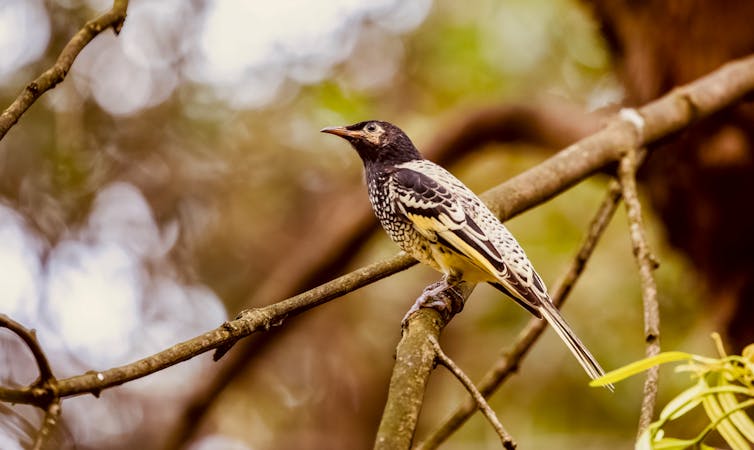
Just as humans learn languages, animals learn behaviours crucial for survival and reproduction from older, experienced individuals of the same species. In this way, important “cultures” such as bird songs are passed from one generation to the next.
But global biodiversity loss means many animal populations are becoming small and sparsely distributed. This jeopardises the ability of young animals to learn important behaviours.
Nowhere is this more true than in the case of regent honeyeaters. In a paper published today, we describe how a population crash to fewer than 300 has caused the species’ song culture to break down.
In healthy populations, the song of adult male honeyeaters is complex and long. But where the population is very small, the song is diminished and, in many cases, the birds have adopted the song of other species. Sadly, this makes the males less attractive to females, which may increase the chance the regent honeyeater will become extinct.
A Soft, Warbling Song
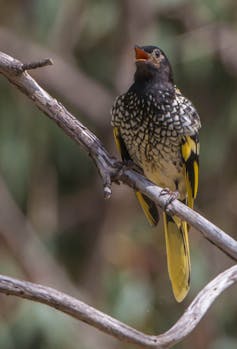
Since 2015, we have monitored the regent honeyeater – a critically endangered, nectar-feeding songbird. The birds once roamed in huge flocks between Adelaide and Queensland’s central coast, tracking eucalyptus blossom.
As recently as the 1950s, regent honeyeaters were a common sight in suburban Melbourne and Sydney but are now extremely rare in both cities.
Extensive postwar land clearing has destroyed regent honeyeater habitat and caused the population to plummet. Most breeding activity is now restricted to the Blue Mountains and Northern Tablelands in New South Wales.
Regent honeyeaters are most vocal during the early stages of their breeding season. Before the population decline, the birds were known for their soft, warbling song produced with characteristic head-bobbing. But with few birds left in the wild, their song is changing – with potentially tragic consequences.
Finding Their Voice
Birdsong is one of the most well-studied examples of animal culture. Young songbirds learn to sing by listening to, repeating and refining the songs of older flockmates.
Song-learning is often completed in first year of life, after which a birds’ song is “fixed”.
Despite the increasing number of endangered bird species, there is surprisingly little research into how declines in population size and density might damage song culture in wild birds. We sought to explore whether this link existed in regent honeyeater populations.
Male regent honeyeaters sing to secure breeding territories and attract mates. We classified the songs of 146 male regent honeyeaters between 2015 and 2019. We made or obtained high-quality recordings of 47 of these in the wild, and more in captivity. This included wild birds found by the general public and reported to BirdLife Australia. We quickly chased up these public sightings to record the birds’ songs before they moved on.
We noted the location of each male and tracked its breeding success. We also recorded the songs of captive-bred regent honeyeaters that were part of a reintroduction program.
Changing Tunes
Our research showed the songs of remaining wild males vary remarkably across regions. For example, listen to the “proper” song of regent honeyeaters occurring in the Blue Mountains west of Sydney, where most of the remaining population occur:
You’ll notice they sound noticeably different to the small number of males hanging on 400km to the north, near Glen Innes. Although these males still sound like a regent honeyeater, their songs are slower and have a different melody:
Across the species’ entire range, we found 18 males whose songs sounded nothing like a regent honeyeater. Instead, they closely resembled those of other bird species. Five male regent honeyeaters had learned the song of the little wattlebird:
Four males had learned songs of the noisy friarbird. Others sounded like pied currawongs, eastern rosellas or little friarbirds:
There are isolated cases of individual songbirds mistakenly learning the song of a different species. But to find 12% of males singing only other species’ songs is unprecedented in wild animal populations.
We believe regent honeyeaters are now so rare in the landscape, some young males are unable to locate adult males from which to learn their song. Instead, the young males mistakenly learn the songs of different bird species they’ve associated with when developing their repertoires.
Evidence suggests this song behaviour is distinct from the mimicry common in some Australian birds. Mimicry involves a bird adding the songs of other birds to its own repertoire – and so, not losing its original song. But the regent honeyeaters we recorded never sang songs that resembled that of their species.
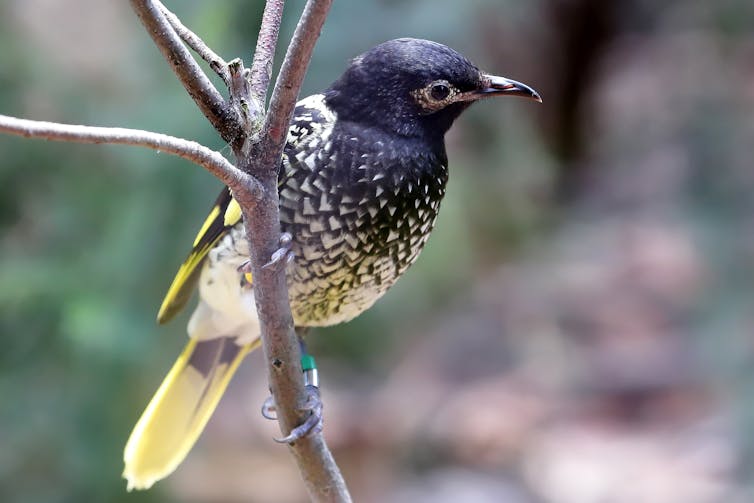
Also, mimicry in other species has typically evolved because it increases breeding success. However in regent honeyeaters, we found the opposite. Even among males that sounded like a regent honeyeater, those whose songs were unusual for the local area were less likely to impress, and be paired with, a female. Females that did couple up to males with unusual songs were less likely to lay eggs.
These data suggest the loss of song culture is associated with lower breeding success, which could be exacerbating regent honeyeater population decline.
A captive-breeding program is a key component of the regent honeyeater recovery plan. However our research showed the songs of captive-bred regent honeyeaters were shorter and less complex than their wild counterparts:
This may affect the breeding success of captive-bred males once they’re released to the wild. Consequently, we’re teaching captive juveniles to sing correctly by playing them our recordings of “proper” songs from wild birds in the Blue Mountains.
The Honeyeaters’ Final Song?
Maintaining animal cultures in both wild and captive populations is increasingly recognised as crucial to preventing extinctions. These cultures include not just song, but also other important behaviours such as migration routes and feeding strategies.
The loss of the regent honeyeater song culture may be a final warning the species is headed for extinction. This is an aspect of species conservation we can’t ignore.
We must urgently restore and protect breeding habitats, protect nests from predators and teach captive-bred birds to sing. We must also address climate change, which threatens the species’ habitat. Otherwise, future generations may never hear the regent honeyeater’s dulcet tones in the wild.
Read more: Birds that play with others have the biggest brains - and the same may go for humans ![]()
Ross Crates, Postdoctoral fellow, Australian National University; Dejan Stojanovic, Postdoctoral Fellow, Australian National University; Naomi Langmore, Research Fellow, Australian National University, and Rob Heinsohn, Professor of Evolutionary and Conservation Biology, Australian National University
This article is republished from The Conversation under a Creative Commons license. Read the original article.
Mangroves from space: 30 years of satellite images are helping us understand how climate change threatens these valuable forests

Australia is home to around 2% of the world’s mangrove forests and is the fifth most mangrove-forested country on Earth. Mangroves play a crucial role in the ecosystem thanks to the dizzying array of plants, animals and birds they feed, house and protect.
Mangrove forests help protect coastal communities from cyclones and storms by absorbing the brunt of a storm’s energy. They help our fight against climate change by storing vast amounts of carbon that would otherwise be released as greenhouse gases.
In other words, mangroves are some of our most precious ecosystems. Despite their importance, there is much we don’t know about these complex wetland forests. For example, when does their growing season start? And, how long does it last?
Usually, answering these types of questions requires frequent data collection in the field, but that can be costly and time-consuming. An alternative is to use satellite images. In the future, this will allow us to track the impacts of climate change on mangroves and other forests.
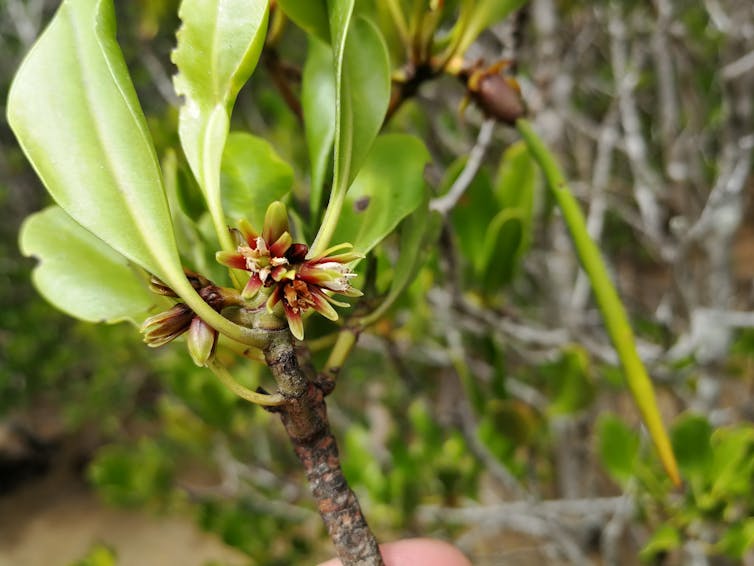
What Is Phenology?
Our research used satellite images to study the life cycles of mangrove forests in the Northern Territory, Queensland, and New South Wales. We compared the satellite images with field data collected in the 1980s, 1990s and 2000s, and found a surprising degree of variation in mangrove life cycles.
We’re using the phrase life cycle, but the scientific term is “phenology”. Phenology is the study of periodic events in the life cycles of plants and animals. For example, some plants flower and fruit during the spring and summer, and some lose their leaves in autumn and winter.
Phenology is important because when plants are growing, they absorb carbon from the atmosphere and store it in their leaves, trunks, roots, and in the soil. As phenology is often affected by environmental conditions, studying phenology helps us understand how climate change is affecting Australian ecosystems such as mangrove forests.
So how can we learn a lot in a short amount of time about mangrove phenology? That’s where satellite imagery comes in.
How We Use Satellites To Study Mangrove Phenology
Satellites are an excellent tool to study changes in forest health, area, and phenology. Some satellites have been taking images of Earth for decades, giving us the chance to look back at the state of mangrove forests from 30 years ago or more.
You can think of satellite images much like the photo gallery in your smartphone: you can see many of your family members in a single image, and you can see how everyone grows and “blooms” over time. In the case of mangroves, we can see different regions and species in a single satellite image, and we can use past images to study the life cycles of mangrove forests.
For example, satellite images depicted below, which use data from the Australian government’s National Maps website, show how mangroves forests have changed in the Kimberley region of Western Australia between 1990 and 2019. You can see how the mangrove forest has reduced in some areas, but expanded in others. Overall, this mangrove forest seems to be doing pretty well thanks in large part to the fact this area has a reasonably small human population.
Our study of satellite images of mangrove forests in the Northern Territory, Queensland, and New South Wales - and how they compared with data collected on the ground - found not all mangroves have the same life cycles.
For instance, many mangrove species grow new leaves only once per year, while other species grow new leaves twice a year. These subtle, but important differences will allow us to track the impacts of climate change on mangroves and other forests.
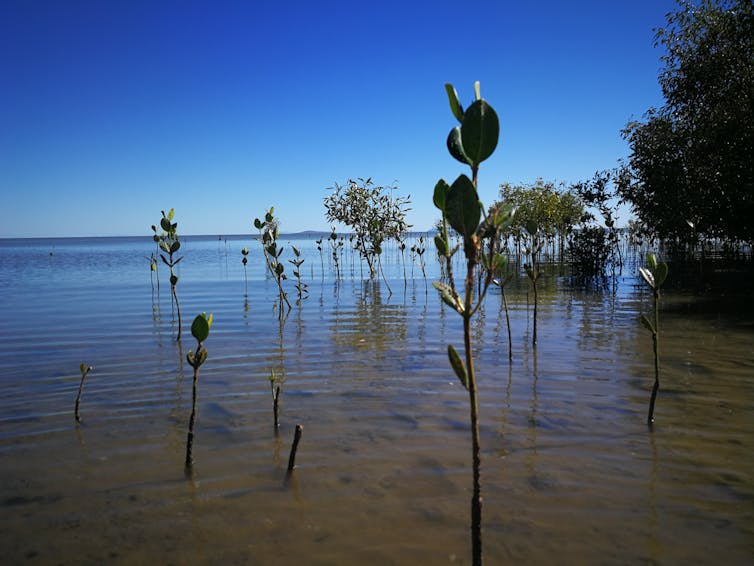
How Climate Change Affects Mangrove Phenology
Climate change is changing the phenology of many forests, causing them to flower and fruit earlier than expected.
Science cannot yet tell us exactly how mangrove phenology will be affected by climate change but the results could be catastrophic. If mangroves flower or fruit earlier than expected, pollinators such as bats, bees and birds may starve or move to a different forests. Without pollinators, mangroves may not reproduce and can die.
The next step in our research is to figure out how climate change is affecting the life cycles of mangroves. To do this, we will use satellite images of mangroves across Australia and factor in data on temperature and rainfall.
We think rising temperatures are causing longer periods of leaf growth, a theory we plan to test by studying data from now with satellite images from the 80s and 90s.
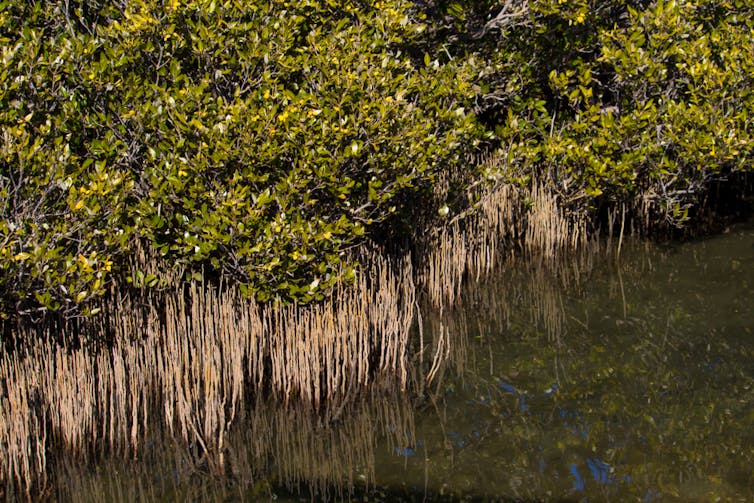
Satellite Monitoring Can’t Do It All
Satellites can tell us a lot about how a mangrove forest is faring. For example, satellite images captured a dieback event (depicted below, using data from the Australian government’s National Maps website) that happened between 2015 and 2016, when around 7,400 hectares of mangroves died in the Gulf of Carpentaria due to drought and unusually high air and sea temperatures.
But satellite monitoring is not enough on its own and cannot capture the detail you can get on the ground. For example, satellites cannot capture the flowering or fruiting of mangroves because flowers are often too small and fruits are often camouflaged. Also, satellites cannot capture what happens under the canopy.
It is also important to recognise the work of researchers on the ground. Ground data allows us to validate or confirm the information we see in satellite images. When we noted some mangrove forests were growing leaves twice per year, we validated this observation with field data, and confirmed with experts in mangrove ecosystems. Field data is crucial to understand the life cycles of ecosystems worldwide and how forests are responding to changes in the climate.![]()
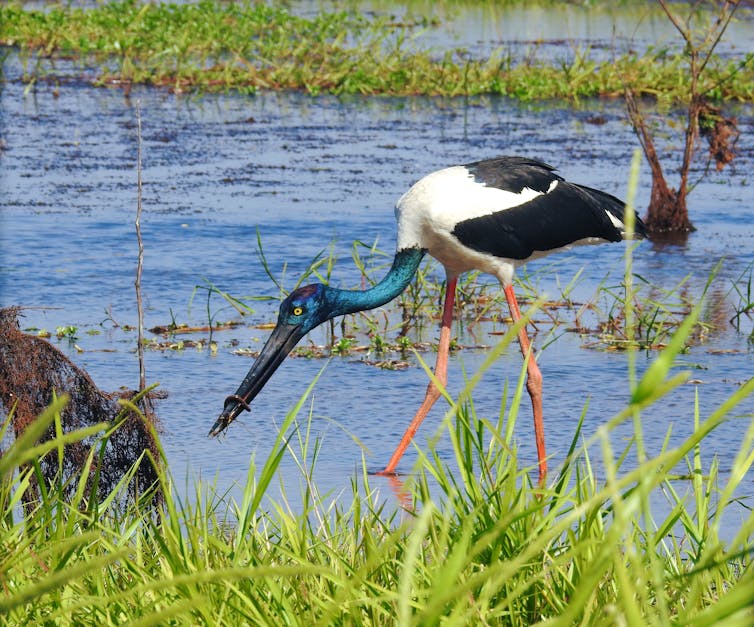
Nicolás Younes Cárdenas, Postdoctoral research fellow, James Cook University; Karen Joyce, Senior Lecturer - Remote sensing and spatial information, James Cook University, and Stefan W Maier, Adjunct Research Fellow, James Cook University
This article is republished from The Conversation under a Creative Commons license. Read the original article.
Wake up, Mr Morrison: Australia's slack climate effort leaves our children 10 times more work to do
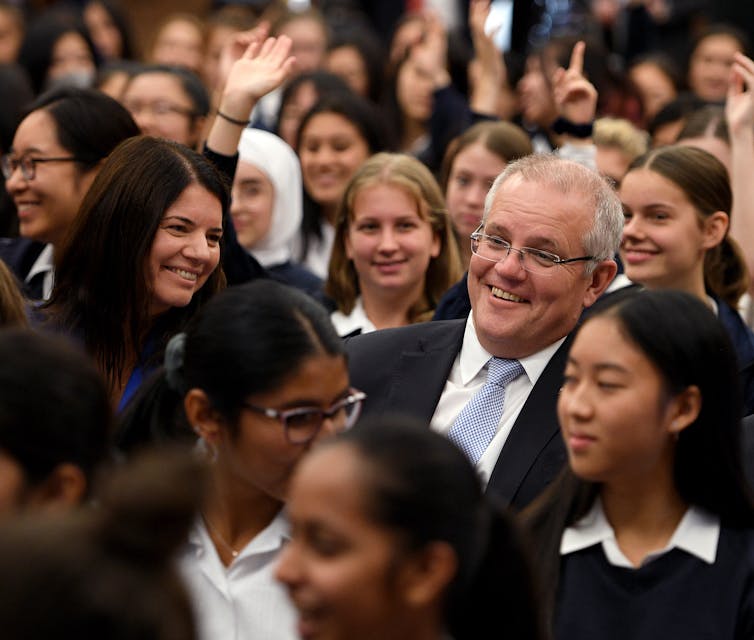
There is much at stake at the highly anticipated United Nations climate summit in Glasgow this November. There, almost 200 nations signed up to the Paris Agreement will make emissions reduction pledges as part of the international effort to avoid catastrophic climate change.
Many countries recognise the urgent task at hand. Ahead of the meeting, more than 110 governments have already pledged to achieve net-zero emissions by 2050. So where is Australia in terms of global ambition?
We, some of Australia’s most senior climate change scientists and policymakers, have come together to address these and other pressing questions, informed by sound science and policy.
Our report, released today, pinpoints the emissions reduction burden Australians will bear in future decades if our Paris targets are not increased. Alarmingly, people living in the 2030s and 2040s could be forced to reduce emissions by ten times as much as people this decade, if Australia is to keep within its 2℃ “carbon budget”.
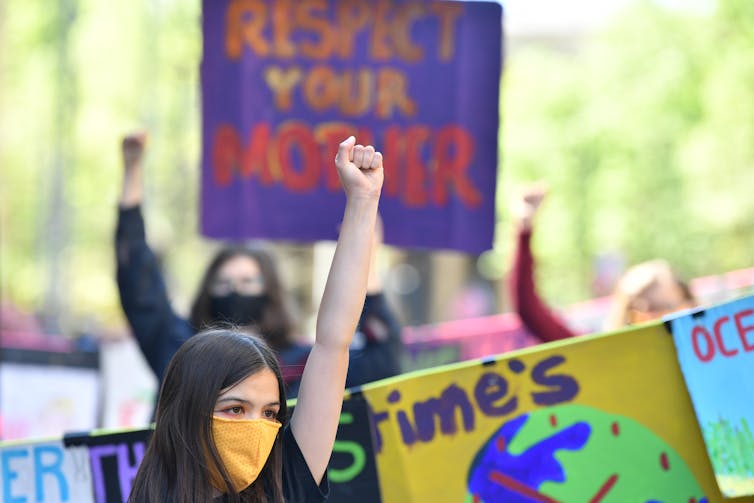
‘Manifestly Inadequate’
A “carbon budget” identifies how much carbon dioxide (CO₂) the world can emit if it’s to limit global temperature rise to internationally agreed goals. Those goals include keeping warming to well below 2℃ – and preferably below 1.5℃ – this century.
National emissions reduction targets are key to staying within a carbon budget. Australia’s target, under the Paris Agreement, is a 26-28% reduction between 2005 and 2030.
In a report released in January, we showed how that target is manifestly inadequate. To remain within its 2°C carbon budget, Australia must cut emissions by 50% between 2005 and 2030, and reach net-zero emissions by 2045.
To remain inside the 1.5°C budget, we must reduce emissions by 74% between 2005 and 2030, and reach net zero emissions by 2035.
Since that report was released, the Australian government has doubled down on its 2030 target. But Prime Minister Scott Morrison appears to be inching closer to a net-zero commitment. Last month he declared his government’s goal was “to reach net-zero emissions as soon as possible, and preferably by 2050”.
Our latest report set out to determine how the burden of emissions reduction would be spread after 2030 if Australia’s 2030 target is not increased.
Read more: Scott Morrison has embraced net-zero emissions – now it's time to walk the talk

What We Found
Our analysis used the methodology adopted by the Climate Change Authority. This statutory body was established by the Gillard Labor government in 2012, and was charged with providing independent expert policy advice.
In 2014, the authority identified the level of climate ambition required for Australia to do its fair share in the global effort. It recommended a 30% emissions reduction between 2000 and 2025, reaching 40-60% by 2030.
But the Abbott Coalition government ignored this advice. Instead, it pledged the far weaker target of 26-28% emissions reduction.
We wanted to determine what happens if Australia sticks to that inadequate target – and so delays substantive climate action until later decades.
To meet the weak Paris target, Australia need only reduce emissions by 1.2% each year from 2020 to 2030. If Australia persists with this target but still decides to stay inside the 2℃ carbon budget, that leaves just 1,329 million tonnes of greenhouse gases we can emit after 2030.
Keeping to this limit would be extremely challenging. If done in a straight-line trajectory, it would mean a 12.9% cut in emissions each year from 2030, until net-zero emissions were reached in 2037.
This represents an annual challenge ten times greater than what’s needed in each year this decade to meet the current 2030 goals. It would require an annual emissions reduction of 66.8 million tonnes of greenhouse gases – more than every car and light commercial vehicle on Australia’s roads emits in a year.
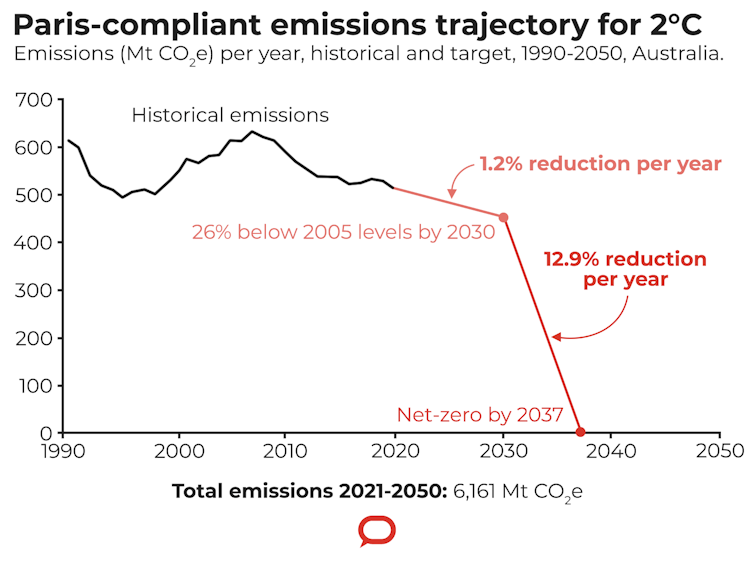
Second, we looked at the emissions trajectory if Australia was to achieve net-zero emissions by 2050, while still keeping the inadequate 2030 Paris targets. We found people living in the 2030s and 2040s would have to reduce emissions by three times more than what’s required this decade.
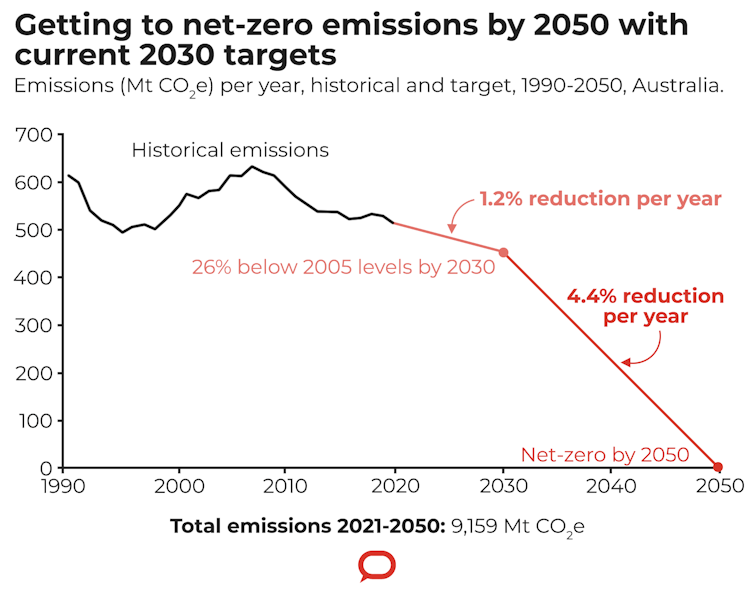
Clearly, the inadequate 2030 target is the source of the problem. By requiring very little emissions reduction this decade, the Morrison government is kicking the climate can down the road for our children to pick up. It means Australia is also failing on its moral obligation to do its fair share in the global climate effort.
Australia Trails The World
This sad state of affairs is not news to the rest of the world. Australia is widely viewed as an international climate laggard. In the 2020 Climate Change Performance Index, it received the lowest rating of 57 countries and the European Union. It also ranked second-worst on climate action, out of 177 countries, in the 2020 UN Sustainable Development Report.
The Glasgow climate summit, known as the 26th Conference of the Parties or COP26, seeks to hold governments to account for their climate pledges. Nations are expected to front up with ambitious short-term plans for emissions reduction.
Many nations have risen to the challenge. Countries to adopt a target of net-zero by 2050 include the United States, Japan, South Korea and the European Union. China will aim to achieve this target by 2060.
Even more importantly, some governments have ramped up their 2030 targets. For example the European Union will now reduce emissions by 55% and the United Kingdom by 68% – both on 1990 levels.
Read more: Biden’s Senate majority doesn't just super-charge US climate action, it blazes a trail for Australia

A Critical Decade
The importance of COP26 cannot be overstated. Under current global pledges, an average temperature rise of 3℃ or more is distinctly possible this century. This increases the risk of abrupt and irreversible changes in the Earth’s climate system - known as tipping points - bringing disastrous consequences for both human and natural systems.
The Morrison government is failing to protect Australia from this devastating future. It’s also ignoring a major economic opportunity that should - in a rational country - bring all sides of politics together.
Over the past decade, renewable energy costs have plummeted and significant advances have been made in electric vehicles and regenerative agriculture. This opens up vast new opportunities for Australia.
These days, few in the federal Coalition would deny climate science outright. But the government’s softer form of denial – failing to grasp the need for urgent action – will have the same tragic outcome.
Read more: Against the odds, South Australia is a renewable energy powerhouse. How on Earth did they do it? ![]()
Lesley Hughes, Professor, Department of Biological Sciences, Macquarie University; John Hewson, Professor and Chair, Tax and Transfer Policy Institute, Crawford School of Public Policy, Australian National University; Malte Meinshausen, A/Prof., School of Earth Sciences, The University of Melbourne, and Will Steffen, Emeritus Professor, Fenner School of Environment & Society, Australian National University
This article is republished from The Conversation under a Creative Commons license. Read the original article.
5 remarkable stories of flora and fauna in the aftermath of Australia’s horror bushfire season
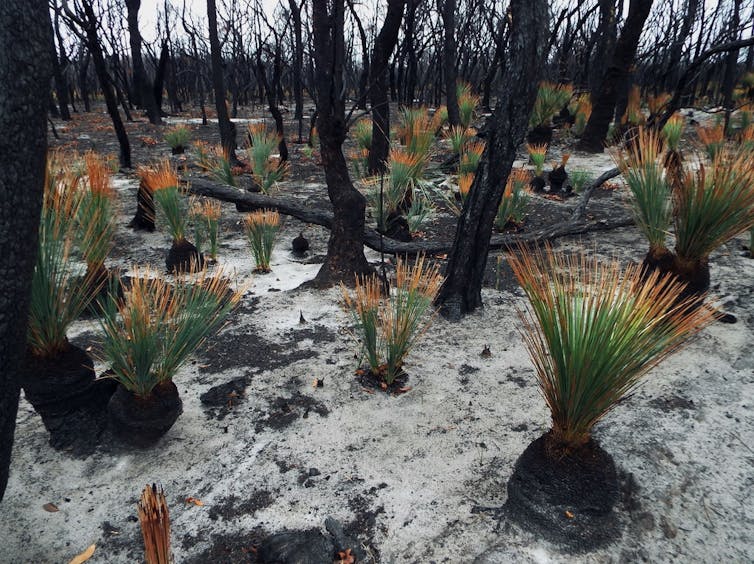
Around one year ago, Australia’s Black Summer bushfire season ended, leaving more than 8 million hectares across south-east Australia a mix of charcoal, ash and smoke. An estimated three billion animals were killed or displaced, not including invertebrates.
The impact of the fires on biodiversity was too vast for professional scientists alone to collect data. So in the face of this massive challenge, we set up a community (citizen) science project through the iNaturalist website to help paint a more complete picture of which species are bouncing back — and which are not.
Almost 400 community scientists living near or travelling across the firegrounds have recorded their observations of flora and fauna in the aftermath, from finding fresh wombat droppings in blackened forests, to hearing the croaks of healthy tree frogs in a dam choked with debris and ash.
Each observation is a story of survival against the odds, or of tragedy. Here are five we consider particularly remarkable.
Greater Gliders After Australia’s Largest Ever Fire
The Gospers Mountain fire in New South Wales was the biggest forest fire in Australian history, razing an area seven times the size of Singapore. This meant there nothing in history scientists could draw from to predict the animals’ response.
So it came as a huge surprise when a community scientist observed greater gliders deep within the heart of the Gospers Mountain firegrounds in Wollemi National Park, far from unburned habitat. Greater gliders are listed as “vulnerable” under national environment law. They’re nocturnal and live in hollow-bearing trees.
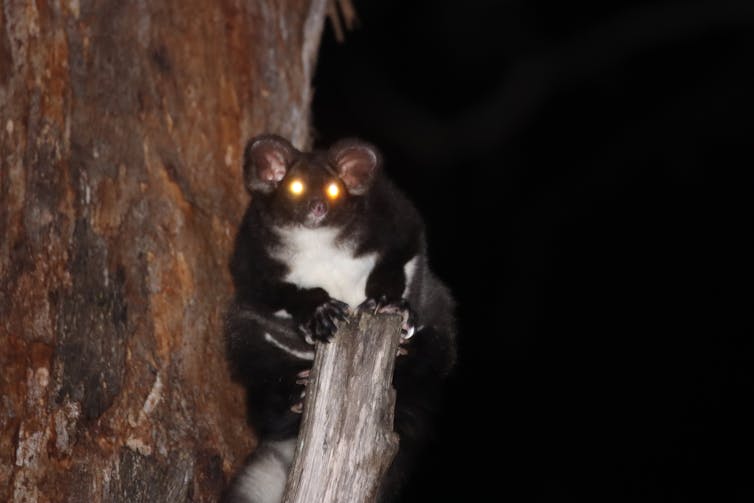
How gliders survived the fire is still unknown. Could they have hidden in deep hollows of trees where the temperature is relatively cooler while the fire front passed? And what would they have eaten afterwards? Greater gliders usually feed on young leaves and flowers, but these foods are very rare in the post-fire environment.
Finding these gliders shows how there’s still so much to learn about the resilience of species in the face of even the most devastating fires, especially as bushfires are forecast to become more frequent.
Rare Pink Flowers Burnishing The Firegrounds
The giant scale of the 2019-20 fires means post-fire flowering is on display in grand and gorgeous fashion. This is a feature of many native plant species which need fire to stimulate growth.
Excitingly, community scientists recorded a long-dormant species, the pink flannel flower (Actinotus forsythii), that’s now turning vast areas of the Blue Mountains pink.
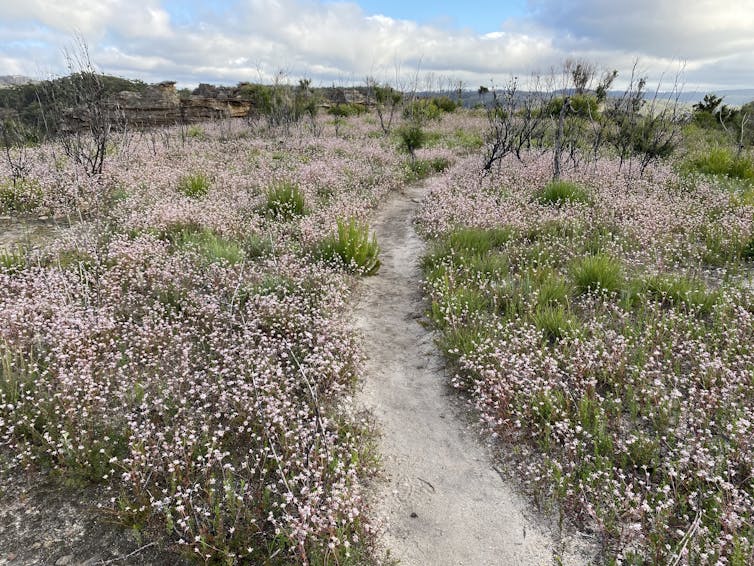
Pink flannel flowers are not considered threatened, but they are very rarely seen.
Individuals of this species spend most of their life as a seed in the soil. Seeds require a chemical found in bushfire smoke, and the right seasonal temperatures, to germinate.
Rediscovering The Midge Orchid
Much of Australia’s amazing biodiversity is extremely local. Some species, particularly plants, exist only in a single valley or ridge. The Black Summer fires destroyed the entire range of 100 Australian plant species, incinerating the above-ground parts of every individual. How well a species regenerates after fire determines whether it recovers, or is rendered extinct.
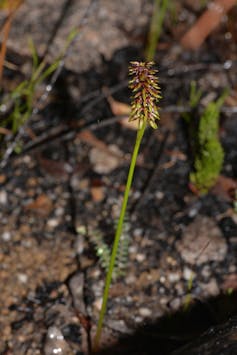
One of these is a species of midge orchid, which grows in a small area of Gibraltar Range National Park, NSW.
All of the midge orchid’s known sites are thought to have burned in late 2019. The species fate was unknown until two separate community scientists photographed it at five sites in January 2021, showing its recovery.
Like many of Australia’s terrestrial orchids, this species has an underground tuber (storage organ) which may have helped part of it avoid the flames’ lethal heat.
Read more: After last summer's fires, the bell tolls for Australia’s endangered mountain bells
Don’t Forget About Insects
Despite their incredible diversity and tremendous value to society, insects tend to be the forgotten victims of bushfires and other environmental disasters.
Many trillions of invertebrates would have been killed in the fires of last summer. A common sight during and after the bushfire season was a deposit of dead insects washed ashore. Some died from the flames and heat, while others died having drowned trying to escape.

One dead insect deposit — one of hundreds that washed up near Bermagui, NSW on Christmas Eve — included a range of species that have critical interactions with other organisms.
This includes orchid dupe wasps (Lissopimpla excelsa), the only known pollinator of the orchid genus Cryptostylis. Transverse ladybirds (Coccinella transversalis), an important predator of agricultural pests such as aphids, also washed up. As did metallic shield bugs (Scutiphora pedicellata), spectacular iridescent jewel bugs that come in green and blue hues.
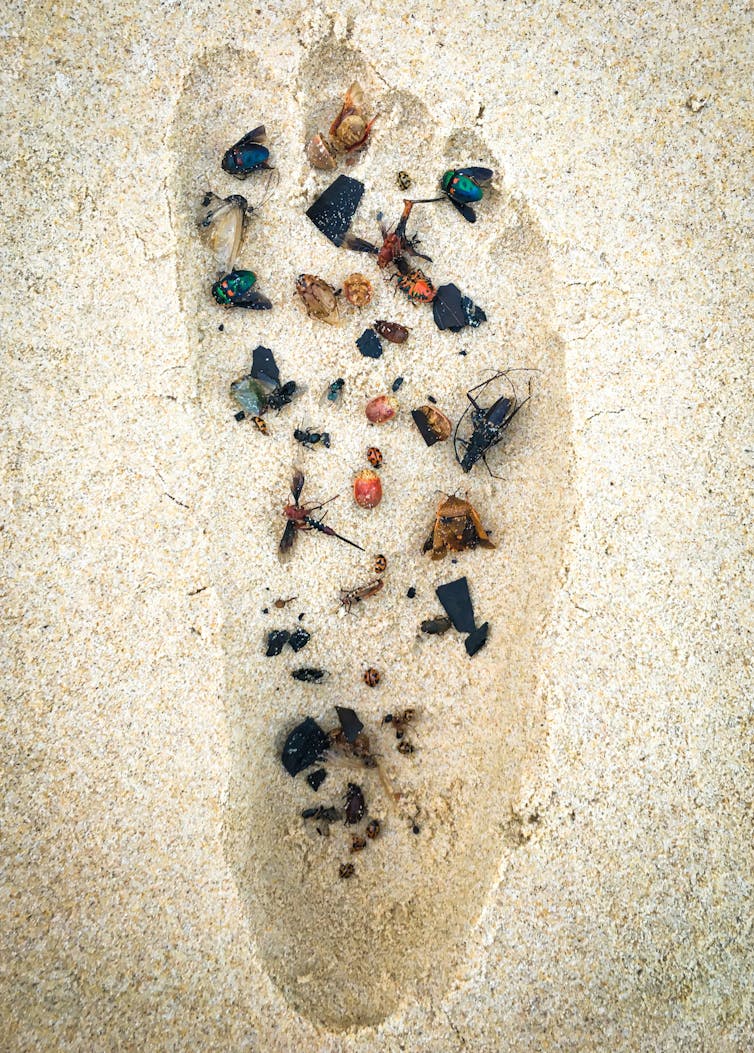
The Unlikely Survival Of The Kaputar Slug
Creatures such as kangaroos or birds have a chance to flee bushfires, but smaller, less mobile species such as native slugs and snails have a much tougher time of surviving.
The 2019-2020 bushfire season significantly threatened the brilliantly coloured Mount Kaputar pink slug, found only on the slopes of Mount Kaputar, NSW. When fires ripped through the national park in October and November 2019, conservationists feared the slug may have been entirely wiped out.
Read more: Photos from the field: zooming in on Australia's hidden world of exquisite mites, snails and beetles
But park ranger surveys in January 2020 found at least 60 individuals managed to survive, likely by sheltering in damp rock crevices. Community scientists have spotted more individuals since then, such as the one pictured here found in September 2020.
But the slug isn’t out of the woods yet, and more monitoring is required to ensure the population is not declining.
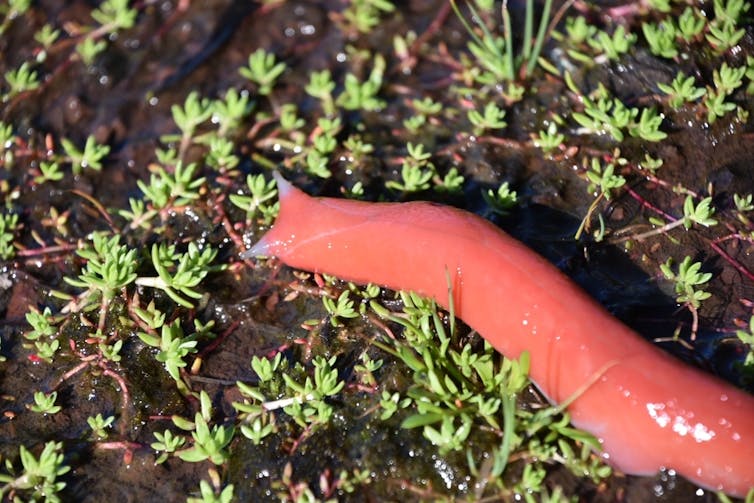
Continuing This Work
While community scientists have been documenting amazing stories of recovery all across Australia, there are still many species which haven’t been observed since the fires. Many more have been observed only at a single site.
The Snowy River westringia (Westringia cremnophila), for instance, is a rare flowering shrub found on cliffs in Snowy River National Park, Victoria. No one has reported observing it since the fire.
So far these community scientist observations have contributed to one scientific paper, and three more documenting the ability for species to recover post-fire are in process.
Recovery from Black Summer is likely to take decades, and preparing a body of scientific data on post-fire recovery is vital to inform conservation efforts after this and future fires. We need more observations to continue this important work.
Read more: Summer bushfires: how are the plant and animal survivors 6 months on? We mapped their recovery ![]()
Will Cornwell, Associate Professor in Ecology and Evolution, UNSW; Casey Kirchhoff, PhD Candidate, UNSW, and Mark Ooi, Senior Research Fellow, UNSW
This article is republished from The Conversation under a Creative Commons license. Read the original article.
Sea levels are rising fastest in big cities – here's why
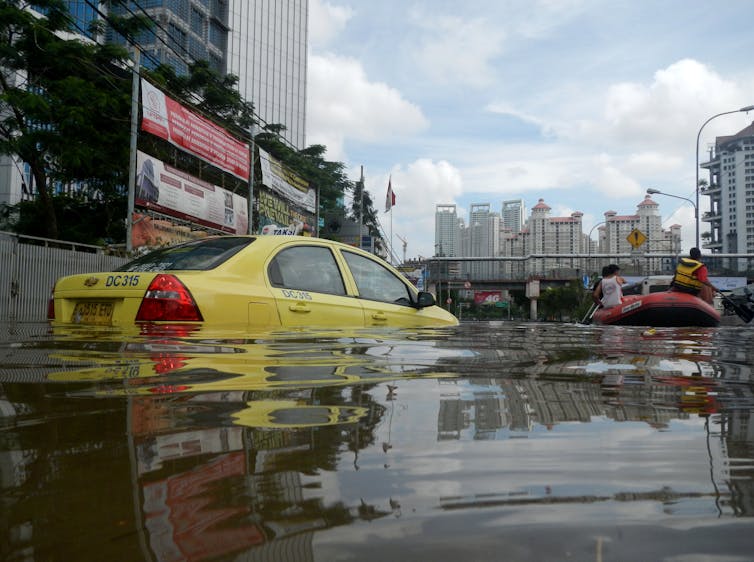
It is well known that climate-induced sea level rise is a major threat. What is less well know is the threat of sinking land. And in many of the most populated coastal areas, the land is sinking even faster than the sea is rising.
Parts of Tokyo for instance sank by 4 metres during the 20th century, with 2 metres or more of sinking reported in Shanghai, Bangkok, and New Orleans. This process is known as subsidence. Slow subsidence happens naturally in river deltas, and it can be accelerated by the extraction of groundwater, oil or gas which causes the soil to consolidate and the surface to lose elevation.
Subsidence leads to relative sea level rise (sea level rise plus land sinking). It turns croplands salty, damages buildings, causes widespread flooding and can even mean the loss of entire coastal areas.
Subsidence can threaten flooding in low-lying coastal areas, much more so than rising sea levels, yet scientists are only just realising the global implications of the threat with respect to coastal cities.
In fact, while the average coastal area experiences relative sea level rise of less than 3mm per year, the average coastal resident experiences a rise of around 8mm to 10mm per year. This is because so many people live in deltas and especially cities on deltas that are subsiding. That’s the key finding of our new research, where we analysed how fast cities are sinking across the world and compared them with global subsidence data including less densely populated coastlines.

Our finding reflects that people often choose to live in river deltas, floodplains and other areas that were already prone to sinking, and in doing so will further enhance subsidence. In particular, subsiding cities contain more than 150 million people in the coastal zone – that’s roughly 20% of people in the world who live by the sea. This means relative sealevel rise will have a more sudden and more severe impact than scientists had originally thought.
Here are a few of the most affected cities:
Jakarta
The Indonesian capital Jakarta is home to 10 million people, and is built on low-lying land next to the sea. Groundwater extraction caused the city to sink more than three metres from 1947 to 2010 and much of the city is still sinking by 10cm or more each year.
Subsidence does not occur evenly, leading to uneven risks that make urban planning difficult. Buildings are now flooded, cracks are appearing in infrastructure which is being abandoned.
Jakarta has built higher sea walls to keep up with the subsidence. But since groundwater pumping continues, this patching-up policy can only last so long before the same problems occur again. And the city needs to keep pumping since groundwater is used for drinking water. Taking water, the very thing that humans need to survive, ultimately puts people at risk from inundation.
The battle against subsidence is slowly being lost, with the government proposing in 2019 to move the capital to a purpose-built city on the island of Borneo more than 1,000km away, with subsidence being one of many reasons.
Shanghai
Developing rapidly in the past few decades, and now with a population of 26 million, Shanghai is another sinker. The city has maximum subsidence rates of around 2.5cm a year. Again this is mostly caused by lowering groundwater levels, in this case thanks to drainage to construct skyscrapers, metro lines and roads (for instance Metro Line 1, built in the 1990s, caused rapid subsidence).

If no additional protection is built, by 2100 this rate of subsidence and sea level rise mean that a storm surge could flood around 15% of the city.
New Orleans
In New Orleans, centuries of embankments and ditches had effectively drained the city and sunk it, leaving about half of it below sea level.
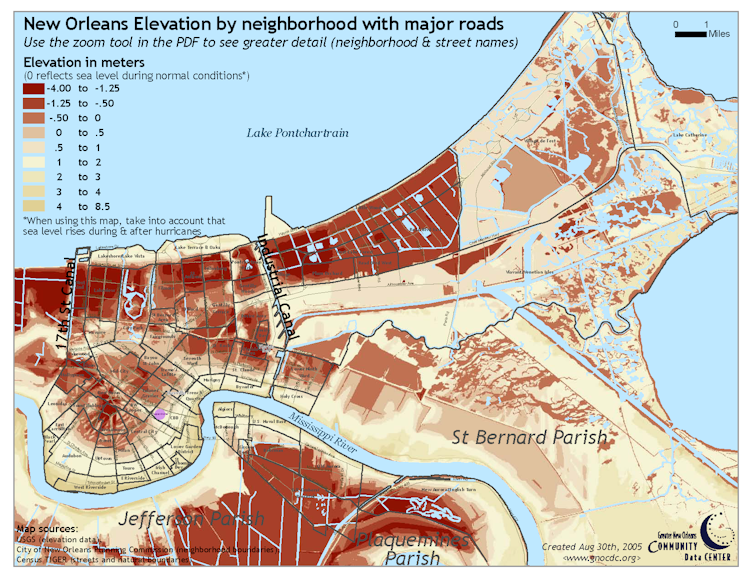
When Hurricane Katrina breached the levees in 2005, the city did not stand a chance. The hurricane caused at least US$40 billion (£29 billion) in damage and particularly took its toll on the city’s African American community. More than 1,570 people died across the state of Louisiana.
If the city had not subsided, damage would have been greatly reduced and lives would have been saved. Decisions that were made many decades or more ago set the path for the disasters that are seen today, and what we will see in the future.
There Are No Simple Solutions
So what can be done? Building a sea wall or dike is one immediate solution. This of course stops the water coming in, but remember that the sea wall is sinking too, so it has to be extra large in order to be effective in the long-term. In urban areas, engineers cannot raise ground easily: that can take decades as buildings and infrastructure are renewed. There is no simple solution, and large-scale urban subsidence is largely irreversible.
Some cities have found “solutions”. Tokyo for instance managed to stop subsidence from about 1960 onwards thanks to stronger regulations on water pumping, but it cannot get rid of the overall risk as parts of city are below sea level and depend on dikes and pumps to be habitable. Indonesia’s bold proposal to move its capital city may be the ultimate solution.
Increased urbanisation especially in deltas areas and the demand for freshwater means subsidence will remain a pressing issue in the coming decades. Dealing with subsidence is complementary to dealing with climate-induced sea level rise and both need to be addressed. A combination of rising seas and sinking lands will increasingly leave coastal cities at risk.![]()
Sally Brown, Scientist, Bournemouth University and Robert James Nicholls, Professor of Climate Adaptation, University of East Anglia
This article is republished from The Conversation under a Creative Commons license. Read the original article.
When 1 in 3 users are tourists, that changes the bike-share equation for cities

Bike-share programs have in the past been designed and operated with residents as the main focus. These shared bikes have mainly been regarded as a way to solve the “last mile problem” – the distance between the final destination and the closest public transport stop that’s seen as too far to walk and too close to drive.
My new research published in the Journal of Sustainable Tourism challenges this position. The study findings from the Pacers Bikeshare program in the US city of Indianapolis demonstrate the incredible demand tourists can provide for bike-share programs. In turn, the community gains extra value from tourism and the overall enriched visitor experience. Visitors incurred more than twice the user fees of residents.
This all adds up to substantial revenue for the program and an economic benefit for the city. It changes the calculations about the viability and value of bike-share schemes, which provide wide economic benefits to cities.
Read more: Billions are pouring into mobility technology – will the transport revolution live up to the hype?
A COVID-Driven Bike Boom
Share bikes and other forms of micromobility such electric scooters (e-scooters) and e-bikes have emerged as an ideal means of transport and outdoor recreation for both residents and visitors in a COVID (and post-COVID) world.
Read more: Why e-bikes can succeed where earlier bike-share schemes failed
People are working from home, travelling less and have pandemic-related safety concerns. Public transport patronage has generally declined as a result.

Amid COVID-19 lockdowns and outbreaks, communities across Australia and overseas are experiencing a cycling boom. Bike shops everywhere are overwhelmed and used bikes are hard to find. Bike-share use has risen as people look for affordable alternatives to public transport and ways to be active outdoors safely.
Bike-share programs have their time to shine, not just as transport for residents but for tourism purposes too.
Read more: Coronavirus recovery: public transport is key to avoid repeating old and unsustainable mistakes
Tourists Are An Important User Group
This major shift in transport patterns includes tourists. We found they are a major and lucrative user group. In our study, tourists accounted for more than a third of all users of the bike-share system over more than four years.
Bike-share allows for freedom in exploring a city. Tourists use these programs to explore urban destinations in a leisurely way. They stop frequently at popular tourist attractions and at local retail outlets, restaurants and bars along the way.
This means the economic and social benefits of tourism activity can be distributed more widely throughout a community – into neighbourhoods and away from city centres and tourism hot spots – compared to cars and mass transit systems.
Further, when visitors use bike-share schemes, they get a more local, authentic and environmentally sustainable experience. The bikes allow for better access to local neighbourhoods, cultural areas, tourist sites and businesses than tour buses, ride-share operators and public transport can provide.
Read more: To bolster our fragile road and rail system we need to add a 'micro-mobility' network
Ensuring A COVID-Safe Ride
Share bikes provide a relatively contact-free and socially distanced alternative to buses, trains and ride-share cars.
Bike-share operators everywhere are responding to the increased concerns about the need for safe alternative transport. The range of strategies to ensure COVID safety include:
- increased cleaning and disinfection
- distribution of bikes at docking stations to allow for social distancing
- contact-free transactions
- promotion of public health guidelines such as wearing masks and social distancing
- even anti-viral handlebars.
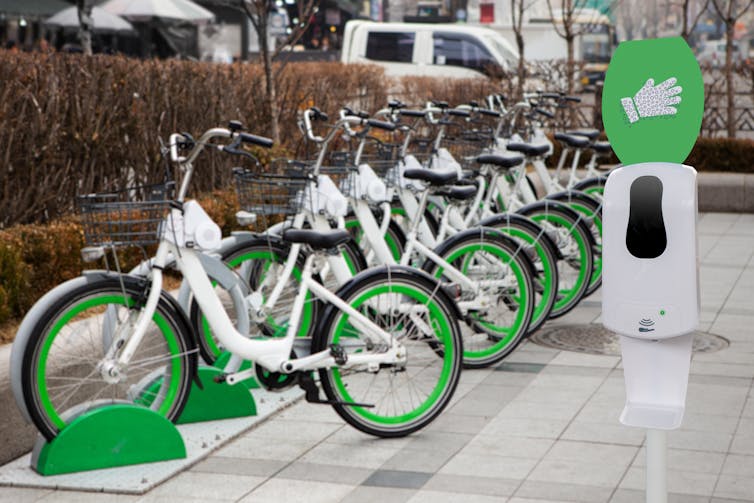
Some programs have actually adapted to the shift from public tranport to bike sharing by offering essential workers and healthcare workers free or discounted memberships. In New York, as subway use has dropped, the city has constructed bike-share stations near hospitals.
The Future Of Micromobility
Bike-share schemes offer diverse community-wide benefits for city residents throughout the world. They are a flexible, convenient, cheap, active and sustainable transport option for both residents and visitors. These schemes help cut travel times, reduce carbon emissions, increase physical activity and connect people to their community.
Micromobility options including bike-share programs will continue to gain popularity well into the future as communities look to improve urban mobility in a sustainable and active manner. The rise of e-scooters and dockless bike programs marks a transition from government-based bike-share initiatives to entrepreneurial ventures. It has fuelled rapid growth in the industry worldwide.
Read more: Limes not lemons: lessons from Australia’s first e-scooter sharing trial
The challenge now is for cities to keep up with this upward trend by developing the necessary physical infrastructure such as bike lanes, bike paths and so on.
Reaping the full benefits of bike-share programs and tourism depends on encouraging visitors to use these bikes. Ways to do this include developing aids to increase ease of use, such as digital cycling guides, maps, apps and companion programs with local businesses.![]()
Richard Buning, Lecturer in Tourism, School of Business, The University of Queensland
This article is republished from The Conversation under a Creative Commons license. Read the original article.
New Shorebirds WingThing For Youngsters Available To Download
A Shorebirds WingThing educational brochure for kids (A5) helps children learn about shorebirds, their life and journey. The 2021 revised brochure version was published in February 2021 and is available now. You can download a file copy here.
If you would like a free print copy of this brochure, please send a self-addressed envelope with A$1.10 postage (or larger if you would like it unfolded) affixed to: BirdLife Australia, Shorebird WingThing Request, 2-05Shorebird WingThing/60 Leicester St, Carlton VIC 3053.

 Shorebird Identification Booklet
Shorebird Identification Booklet
The Migratory Shorebird Program has just released the third edition of its hugely popular Shorebird Identification Booklet. The team has thoroughly revised and updated this pocket-sized companion for all shorebird counters and interested birders, with lots of useful information on our most common shorebirds, key identification features, sighting distribution maps and short articles on some of BirdLife’s shorebird activities.
The booklet can be downloaded here in PDF file format: http://www.birdlife.org.au/documents/Shorebird_ID_Booklet_V3.pdf
Paper copies can be ordered as well, see http://www.birdlife.org.au/projects/shorebirds-2020/counter-resources for details.
Download BirdLife Australia's children’s education kit to help them learn more about our wading birdlife
Shorebirds are a group of wading birds that can be found feeding on swamps, tidal mudflats, estuaries, beaches and open country. For many people, shorebirds are just those brown birds feeding a long way out on the mud but they are actually a remarkably diverse collection of birds including stilts, sandpipers, snipe, curlews, godwits, plovers and oystercatchers. Each species is superbly adapted to suit its preferred habitat. The Red-necked Stint is as small as a sparrow, with relatively short legs and bill that it pecks food from the surface of the mud with, whereas the Eastern Curlew is over two feet long with a exceptionally long legs and a massively curved beak that it thrusts deep down into the mud to pull out crabs, worms and other creatures hidden below the surface.
Some shorebirds are fairly drab in plumage, especially when they are visiting Australia in their non-breeding season, but when they migrate to their Arctic nesting grounds, they develop a vibrant flush of bright colours to attract a mate. We have 37 types of shorebirds that annually migrate to Australia on some of the most lengthy and arduous journeys in the animal kingdom, but there are also 18 shorebirds that call Australia home all year round.
What all our shorebirds have in common—be they large or small, seasoned traveller or homebody, brightly coloured or in muted tones—is that each species needs adequate safe areas where they can successfully feed and breed.
The National Shorebird Monitoring Program is managed and supported by BirdLife Australia.
This project is supported by Glenelg Hopkins Catchment Management Authority and Hunter Local Land Services through funding from the Australian Government’s National Landcare Program. Funding from Helen Macpherson Smith Trust and Port Phillip Bay Fund is acknowledged.
The National Shorebird Monitoring Program is made possible with the help of over 1,600 volunteers working in coastal and inland habitats all over Australia.
The National Shorebird Monitoring program (started as the Shorebirds 2020 project initiated to re-invigorate monitoring around Australia) is raising awareness of how incredible shorebirds are, and actively engaging the community to participate in gathering information needed to conserve shorebirds.
In the short term, the destruction of tidal ecosystems will need to be stopped, and our program is designed to strengthen the case for protecting these important habitats.
In the long term, there will be a need to mitigate against the likely effects of climate change on a species that travels across the entire range of latitudes where impacts are likely.
The identification and protection of critical areas for shorebirds will need to continue in order to guard against the potential threats associated with habitats in close proximity to nearly half the human population.
Here in Australia, the place where these birds grow up and spend most of their lives, continued monitoring is necessary to inform the best management practice to maintain shorebird populations.
BirdLife Australia believe that we can help secure a brighter future for these remarkable birds by educating stakeholders, gathering information on how and why shorebird populations are changing, and working to grow the community of people who care about shorebirds.
To find out more visit: http://www.birdlife.org.au/projects/shorebirds-2020/shorebirds-2020-program
Aussie Bread Tags Collection Points

SLEEPING OUT.
A Storm At Night.
Wailing comes the south breeze, heralding the gale,
The awning on my balcony is cracking like a sail,
Cracking like a topsail, while beneath the din
My heart is singing to the tune of "No, I won't go in!"
White-maned horses gallop in the bay beneath;
The trumpet blast has maddened them, the bit between their teeth;
Now the rain has caught them with a whiplash hiss—
And who would shut himself away from pageantry like this?
Watching drowsy-warm, 'twixt ranked verandah bars
The charging, massed cloud-cavalry come blotting out the stars,
Streaming manes and pennons swept across the sky—
I ponder, "Some would rather sleep, perhaps, but never I!"
Just beyond the rain's reach, safe I wait what comes
To shrieking bugle-blasts of wind and thunder's rolling drums,
Purring in my white bed, huddled soft and warm,
While on the whole horizon flares the splendour of the storm.
—Dorothea Mackellar, Pittwater, 1933

Dorothea Mackellar in 1918
Dorothea Mackellar Poetry Competition 2021 Entries Now Open
2021 OPTIONAL THEME: "RICH AND RARE"
''Our poets are encouraged to take inspiration from wherever they may find it, however if they are looking for some direction, competition participants are invited to use this year's optional theme to inspire their entries."
In 2021, the Dorothea Mackellar Memorial Society has chosen the theme “Rich and Rare.” As always, it is an optional theme, so please write about whatever topic sparks your poetic genius.
For a copy of the wonderful theme poster, please click here.
HOW TO ENTER
*PLEASE NOTE: If you're registering as an individual student, put your HOME address in your personal details and not your SCHOOL'S address! The address you list is where your participation certificate will be posted!*
ONLINE SUBMISSION
(primary school and secondary school, anytime during the competition period)
Teacher/parent - registration completed online (invoice will be emailed within 2 weeks of registration)
Log in to your page.
Enter student details and submit poem(s) (cut and paste or type in poem content direct to the webpage) PLEASE DO NOT UPLOAD POEMS AS ATTACHMENTS AS THAT FUNCTION IS FOR POSTAL ENTRIES ONLY.
Repeat step 3 for every student/individual poem.
PLEASE SEE HERE FOR A DETAILED PDF ON ENTRY INSTRUCTIONS FOR TEACHERS AND PARENTS.
USEFUL TIPS
Have a read of the judges' reports from the previous year. They contain some very helpful advice for teachers and parents alike!
It is recommended for schools to appoint a coordinator for the competition.
Only a teacher/parent can complete the registration form on behalf of the student/child.
Log-in details: username is the email address and a password of your choice.
Log-in details can be given to other teachers/students for poem submission in class/at home.
Log-in as many times as necessary during the competition period.
Teachers can view progress by monitoring the number and content of entries.
Individual entries are accepted if the school is not participating or a child is home schooled. Parent needs to complete the registration form with their contact details. Please indicate 'individual entry' under school name and home postal address under school address.
Invoice for the entry fee will be sent to the registered email address within 2 weeks.
‘Participation certificate only’ option available for schools where pre-selection of entries has been carried out. Poems under this option will not be sent to judges, students will still receive participation certificate for their efforts.
Please read the Conditions of Entry before entering. Entries accepted: March 1 to June 30, results announced during early September.
Visit: https://www.dorothea.com.au/How-to-Enter-awards
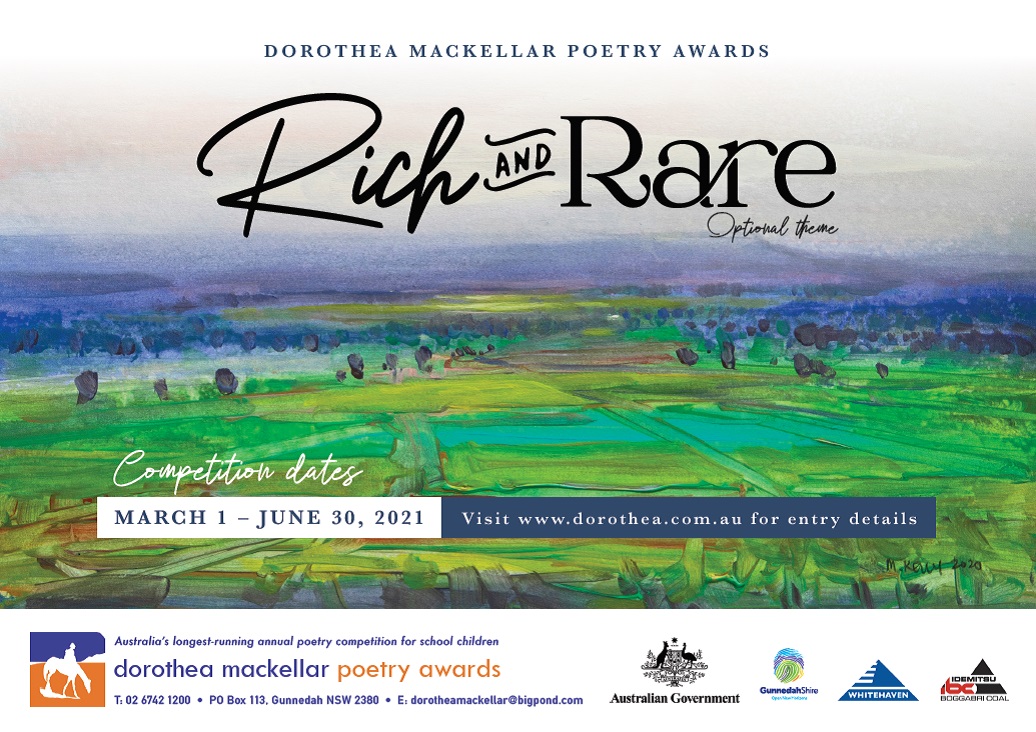
Full Steam Ahead For Iconic Locomotive 3801
A defining part of Australia’s steam train history returned to the rails last weekend after more than a decade.
Minister for Regional Transport and Roads Paul Toole said the widely adored steam locomotive 3801 is returning to passenger service after a $3.5 million dollar NSW Government funded overhaul, offering customers a unique view of our steam rail history.
“From this weekend, 3801 will offer customers the chance to go back in time with regular one-hour shuttle rides departing from Central Station,” Mr Toole said.
“No other steam engine in Australia has captured the imagination of rail enthusiasts and the public as much as 3801, so this is an exciting opportunity for people across NSW to take a trip on the State’s most iconic steam locomotive.
“This starts a new chapter in the life of the historic and much loved locomotive.
“I would like to thank the volunteers and staff who have worked closely with Transport Heritage NSW in the past decade to make this all possible.”
In the next few months 3801 will also make trips to the Southern Highlands, Albury, Wagga Wagga, Junee, the Blue Mountains and towns in western and northern NSW, sharing the magic of the steam era right across the state.
When 3801 first launched in 1943, it instantly changed the image of the NSW Railways with its streamlined art-deco style.
3801 made its first journey from Central Station in 1943 and operated as an express passenger locomotive and later as a freight locomotive until being formally withdrawn from service in 1962.
It became famous for being the only steam locomotive to have travelled to all mainland Australian states and territories.
For more information on the 3801 and the regional tour visit HERE
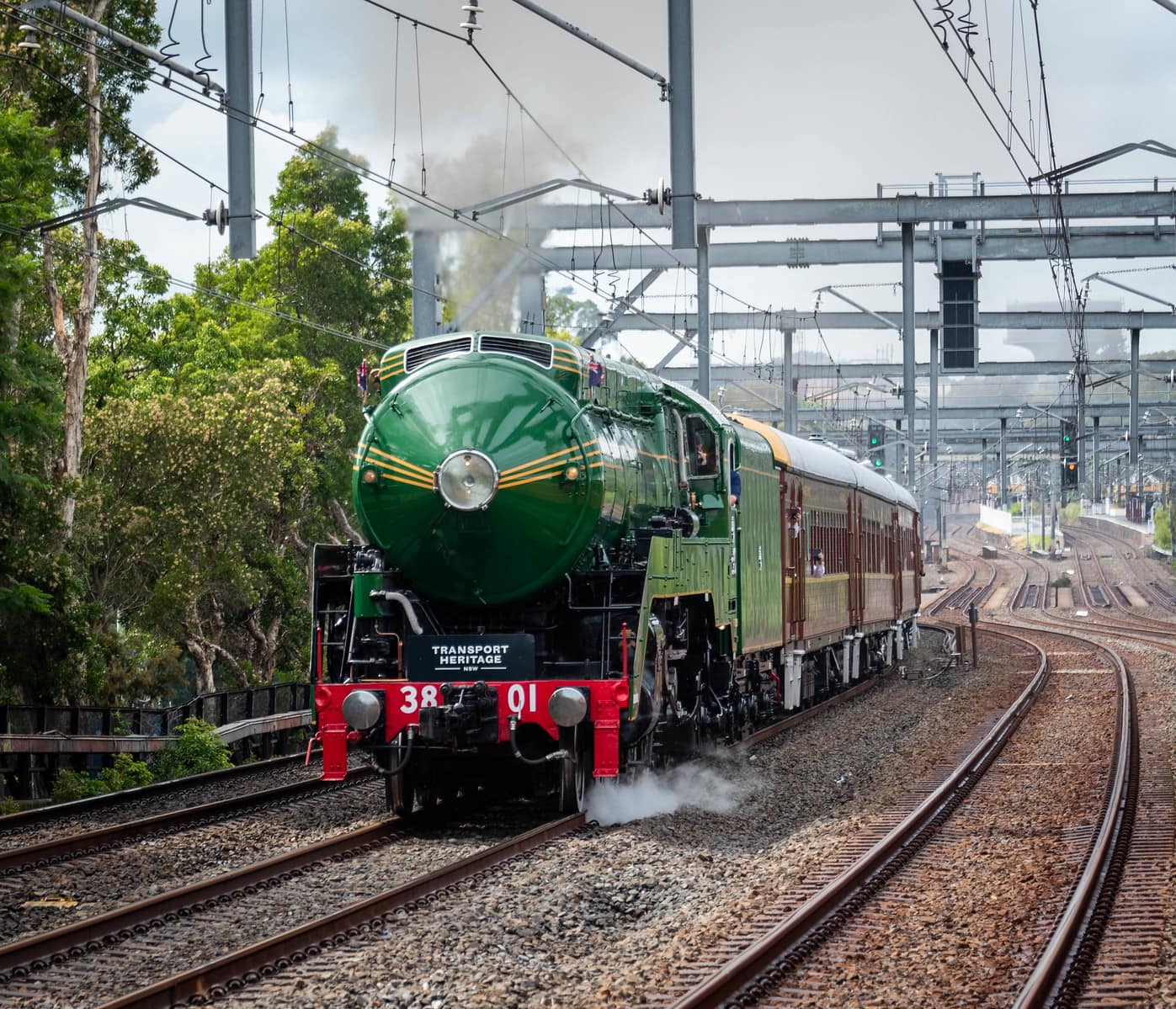
World-Class Standard For Vocational Education And Training
March 18, 2021
The NSW Government will embark on a new reform as part of accepting and implementing all five recommendations from the Gonski-Shergold Review of the NSW Vocational Education and Training (VET) sector.
The NSW Government has committed to:
- Establishing Careers NSW
- Establishing a new form of tertiary education known as NSW Institute of Applied Technology (IAT)
- Advocating for VET student loans, similar to the Higher Education Contribution Scheme (HECS), to be established. Work will continue with the Federal Government on the scheme
- Improving the quality of vocational education made available in high schools
- Consulting with industry experts on VET course curriculums.
Premier Gladys Berejiklian thanked Mr David Gonski AC and Professor Peter Shergold AC who led the extensive review into the VET sector.
“Mr Gonski and Professor Shergold have provided the government with new and innovative recommendations to ensure our training industry remains at the cutting edge and is relevant to a post COVID-19 economy,” Ms Berejiklian said.
“The government’s record $107 billion spend in infrastructure has created a huge demand for tradies but we also need to upskill the workforce for emerging industries like 3D printing, robotics and other technology industries.
“If we are serious about having the best skilled workforce in the world, we have to do things a bit differently.
“The exciting new model of education will see industry and universities partner with TAFE at Meadowbank and Kingswood campuses to ensure NSW is set up to take advantage of the changing workforce requirements.”
The NSW Government will use the report’s findings to advocate for the Commonwealth’s VET Student Loan scheme to be expanded to put VET study on an even financial playing field with university studies.
The IAT will be a new model of tertiary education that will fully integrate the theoretical study of university with the practical training of vocational education. Students will be able to study flexibly for example, a student can complete a Certificate IV in year one, progress to a diploma in year two and have the option of achieving a Bachelor in Applied Technology in year three.
Minister for Skills and Tertiary Education Geoff Lee said the recommendations will elevate the NSW VET system to an enviable standard.
“Our VET sector has already led the way in training frontline workers who have safeguarded our economy from the effects of a global pandemic and today’s announcement will further bolster the sector to a world-class standard.”
“The report highlights the skills industry needs are evolving and our VET sector must continue to evolve and remain accessible to ensure the people of NSW continue to undertake vocational education to drive NSW forward.”
Mr David Gonski AC said the recommendations were developed with a number of stakeholders.
“Consultation was undertaken with academics, industry associations, government and non-government school sectors and training providers to provide a holistic review of the challenges the sector is facing,” Mr Gonski said.
Professor Peter Shergold AC said the recommendations will also seek to enhance the status and improve the quality and accessibility of vocational education in high schools.
“Furthering the relevance and breadth of VET available in high schools is a significant step towards getting students interested in pursuing a vocational career,” Professor Shergold said.
Today’s announcements are in addition to the establishment of Careers NSW announced yesterday.
Support To Help Young People In Online Or Digital Employment Services Into Work
March 17, 2021
The Australian Government is providing more opportunities for thousands of young Australians to get into work and training.
Until 30 June 2022, the Australian Government’s Youth Advisory Sessions initiative will help connect up to 15,000 young people with youth employment specialists.
This assistance will help them remain connected to the labour market and encourage them to stay motivated and resilient when looking for work.
Minister for Employment, Skills, Small and Family Business, Senator the Hon Michaelia Cash, says these specialists will help young people aged 15 to 24 stay connected to the workforce.
“We know young people have been hit hard by the COVID-19 pandemic, and we want to help as many of them as possible to find work,” Minister Cash said.
“That’s why we’re providing access to free Youth Advisory Sessions to help young people stay engaged and supported.”
Assistant Minister for Youth and Employment Services, the Hon Luke Howarth MP, said up to three one-hour advisory sessions are free for young people with a Transition to Work provider.
“We want to ensure that young people are supported, can access help to stay motivated, and are ready to take up job opportunities as the economy continues to recover,” Assistant Minister Howarth said.
“These sessions will also help young people identify jobs in industries locally, and who are expecting the most employment growth in the medium term.”
These sessions are part of the $21.9 million Faster Connections and Greater Support for Young People measure, which was unveiled in the 2020-21 Budget.
“The Australian Government is providing unprecedented support for young people who are looking for work, including the $4 billion JobMaker Hiring Credit and the $1.2 billion Boosting Apprenticeship Commencement wage subsidy,” Minister Cash said.
Attending a Youth Advisory Session (YAS) can help you:
- improve your job search skills
- write a resume that will get you noticed
- prepare for a great interview
- connect with education, training and other support services
For more information on Youth Advisory Sessions, visit jobactive.gov.au/YAS
New Skipper For Breakers In Fire Double
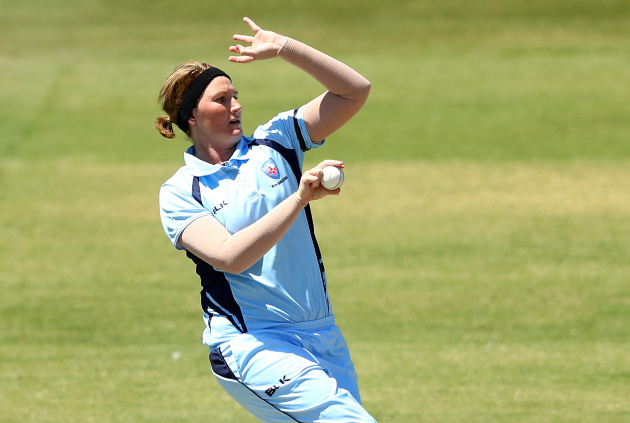 All-rounder Sammy-Jo Johnson has been named to lead NSW just six games into her Breakers career, taking the reigns from Alyssa Healy who is on international duty.
All-rounder Sammy-Jo Johnson has been named to lead NSW just six games into her Breakers career, taking the reigns from Alyssa Healy who is on international duty.
Johnson, 28, who is from northern NSW but had until this summer played all her senior cricket for Queensland and the Brisbane Heat, will captain a 13-player squad in crucial matches against her former side at North Sydney Oval on Friday and Sunday.
With Healy, Rachael Haynes, Ash Gardner and Hannah Darlington all part of the Australian squad in New Zealand, there are four changes to the Breakers contingent that beat the ACT in back to back matches earlier this month.
Experienced all-rounder Lisa Griffith, keeper/batter Maddy Darke and rising star Phoebe Litchfield all re-join the squad, while Dubbo’s exciting fast bowling prospect Emma Hughes is in line to make her Breakers debut.
Powerful hitting opening bowler Johnson becomes NSW’s 30th women’s captain and said she felt privileged to have been given the honour.
“I have played a lot of cricket in Queensland but I'm very proud to finally be wearing the Baggy Blue because that was a childhood dream," Johnson said.
"I'm extremely excited about the opportunity to lead this team and it's something I will treasure.
“These next two matches against Queensland are really important and I believe this squad has the talent and belief to play the brand of cricket we as the Breakers wish to showcase.
"If we put that on the park the results will hopefully lead to us having the opportunity to fight for the trophy in the final."
The Breakers (17 points) currently sit third on the WNCL ladder with three consecutive wins, a tie, three bonus points and two losses from their opening six games. They trail second placed Tasmania by just two points but the Breakers have a game in hand.
Queensland are just a point adrift of NSW in fourth.
NSW Breakers squad for fixtures against the QLD Fire (Friday 19 March and Sunday 21 March) at North Sydney Oval:
Sammy-Jo Johnson (C)
Erin Burns
Stella Campbell
Lauren Cheatle
Maddy Darke
Lisa Griffith
Emma Hughes
Anika Learoyd
Phoebe Litchfield
Lauren Smith
Hayley Silver-Holmes
Rachel Trenaman
Tahlia Wilson
Support Staff:
Dom Thornely (Head Coach)
Ben Sawyer (Assistant Coach)
Mark McInnes (Assistant Coach)
Katie Ryan (Physio)
Sean Hardy (Strength and Conditioning)
Follow all the action via cricket.com.au, with Sunday’s game also set to be available on Kayo.

Rorts scandals in politics are rife. So what exactly are the rules?
Anne Twomey, University of SydneyThe sports rorts scandal has flared up again in the public consciousness with a scathing report by a Senate committee. It points to the many failures in governance and the political interference in what was supposed to be a merit-based grants program. It concludes that such behaviour “deepens public cynicism about the integrity of government decision making and expenditure”.
It is not hard to see why. The sports rorts affair was quickly followed by another controversy: the funding of the Safer Communities Program. Home Affairs Minister Peter Dutton was accused of channelling funds to marginal Tasmanian seats during a contentious byelection.
These two programs don’t even scratch the surface of the massive government expenditure on discretionary programs with unimaginative (but suitably vague) titles such as “strengthening communities”, “stronger communities”, “strong and resilient communities”, “community development”, “national stronger regions” and “building better regions”.
Both sides of politics, when in government, use these programs to favour their supporters and influence voters, particularly in marginal seats, with scant regard to public need, fairness or responsible expenditure.
Every time another government rort is exposed, the response is always that the action was “entirely within the rules”. But what actually are “the rules” and does anyone ever enforce them?
Read more: The 'sports rorts' affair shows the need for a proper federal ICAC – with teeth
What The Constitution Says
The first rule is the Constitution. The Commonwealth government cannot spend public money on grants to third parties unless authorised by a law that falls within a subject allocated by the Constitution to the Commonwealth parliament.
Most of these subjects concern international matters (for example, external affairs, defence and immigration), or intergovernmental matters (interstate trade or interstate industrial disputes), or matters that need one common standard across the nation (currency, weights and measures). These are all things that need to be dealt with at the national level.
Local matters, such as resurfacing a football oval, installing street lighting or building swimming pools, are left to the states, which can deal with them through local government bodies.
The constitutionally valid way for the Commonwealth to fund sports programs and community safety programs is through making grants to the states under section 96 of the Constitution. But this is not popular with the Commonwealth because it is unlikely to buy any votes.
So the Constitution is ignored, on the basis that no one with the legal standing to do so is likely to challenge the constitutional validity of such grants. This is dressed up in government circles as addressing “constitutional risk”. It really means “breaching the Constitution because we are confident we can get away with it”.

Financial Legislation
The next rule is section 71 of the Public Governance, Performance and Accountability Act 2013. It says a minister must not approve a proposed expenditure of public money unless satisfied the expenditure would be a proper use of money. “Proper” is defined in the Act as meaning “efficient, effective, economical and ethical”.
Ordinarily, this is satisfied by an assessment made by public servants. But if the public servants advise that certain projects are unsuitable and not value for money (as occurred in relation to the Safer Communities Program), the minister can only overturn this if he or she makes reasonable inquiries resulting in evidence that supports a rational assessment that the projects are “efficient, effective, economical and ethical”.
Does anyone enforce these rules – even though they are imposed by law? It would seem not.
Rules About Commonwealth Grants
The Commonwealth Grants Rules and Guidelines say that, before making grants, the minister must first receive written advice from officials, which sets out the application and selection process and assesses the merits of proposed grants against the guidelines.
This means a minister cannot approve and announce grants during a byelection (as occurred in relation to the Safer Communities Program), before the guidelines were made, applications opened, and any merit assessment was made.
The grant rules also say a minister may approve grants that are not recommended by public servants, but must report annually to the finance minister by March 31, giving reasons for the approval of each grant. The minister must record “the basis for the approval relative to the grant opportunity guidelines and the key principle of achieving value with relevant money”.
If the public servants advise certain grant applications are unsuitable and not value for money, and the minister overrides them, stating merely that the projects “will assist with the safety” of the relevant communities, is this adequate?
Well, no. At the very least, the minister must assess the project against the guidelines and should explain in writing why the grant was an efficient, effective, economical and ethical use of resources when the department had concluded it was not.
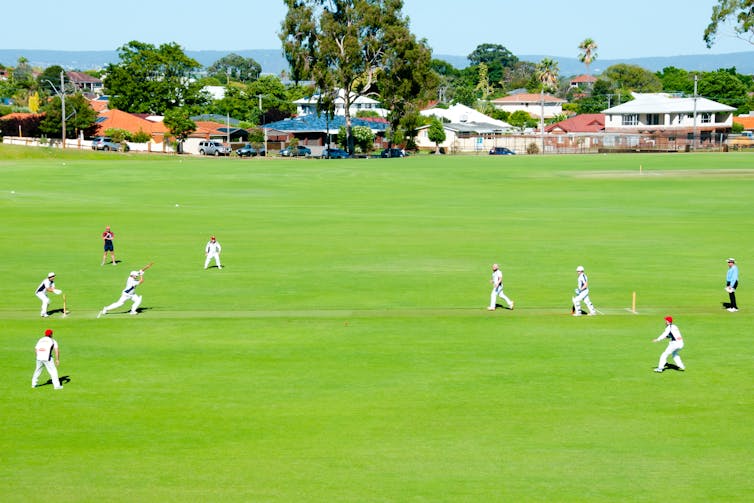
Administrative Law
Under administrative law, decision-makers must act within their legal powers and must not act for an improper purpose or in an irrational manner. They must behave in a manner that is procedurally fair to those affected by the decision.
This includes not acting in a biased manner or a way that might be perceived as biased. The courts look to whether a fair-minded observer might reasonably believe the decision-maker might not be impartial in making the decision.
Announcing the outcome of a decision weeks before the application was even made or assessed against the merit criteria, and then overriding the contrary assessment of public servants who had undertaken a merits assessment, would be strong indicators of “apprehended bias”.
While the courts do sometimes give deference to ministers in making decisions, a fair-minded observer is likely conclude in such a case that there was pre-judgment of the issues and a failure to exercise an impartial mind.
The Statement Of Ministerial Standards
The Statement of Ministerial Standards requires that ministers act in
the lawful and disinterested exercise of the statutory and other powers available to their office.
This standard would be breached if a minister broke any of the laws outlined above. It is also breached if the minister acts in self-interest or the interests of his or her political party, rather than in a “disinterested”, objective manner.
The standards also state:
Ministers are required to ensure that official decisions made by them as Ministers are unaffected by bias or irrelevant considerations, such as considerations of private advantage or disadvantage.
This requirement would be breached if a minister acted for his or her personal or political party’s benefit, rather than acting impartially in the public interest.
Are These Rules Enforced?
There are therefore many rules that limit ministers’ powers to approve grants. The real problem is that most of them are not enforced or enforceable.
The Statement of Ministerial Standards, for example, applies at the whim of the prime minister. There is no penalty for ministers breaching section 71 of the Public Governance, Performance and Accountability Act 2013 or the Commonwealth Grants Rules and Guidelines.
While legal proceedings can be brought to challenge the constitutional validity of the grants or the validity of the decisions under administrative law, it is generally not in the interests of those who could bring such proceedings to do so. All aggrieved grant applicants want the opportunity to get a grant in the future.
Ultimately, this means ministers can breach the rules and get away with it, undermining the rule of law and public confidence in governments.
So when politicians proclaim they have acted entirely within the rules, it may be more accurate to say that the rules cannot, in practice, be enforced against them, because they do their best to make sure this is the case.
The Senate committee clearly saw the consequence:
The failure to hold decision-makers to account gives rise to community anger and resentment about how governments conduct themselves in Australia. It also highlights the glaring disparity between how those in positions of authority are perceived to flout laws or rules with impunity, while ordinary citizens are required to strictly adhere to laws and rules or face severe penalties. This significantly undermines public trust in government and the political system.
Yes, it does, and both sides are to blame.![]()
Anne Twomey, Professor of Constitutional Law, University of Sydney
This article is republished from The Conversation under a Creative Commons license. Read the original article.
Cave of Horror: fresh fragments of the Dead Sea Scrolls echo dramatic human stories
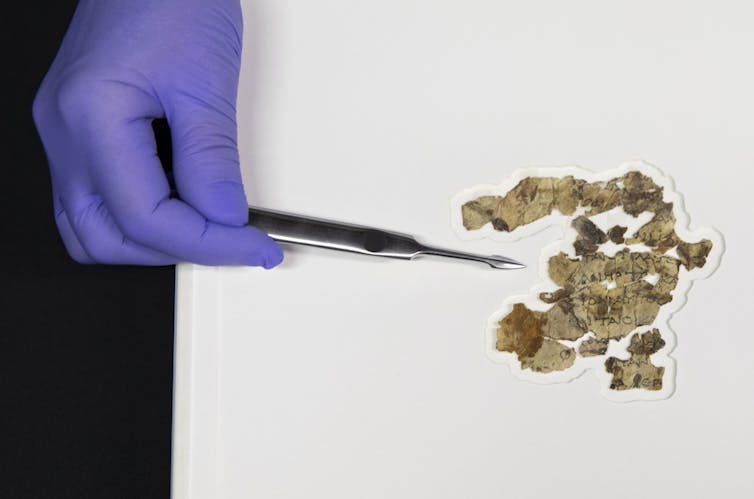
On Tuesday news broke of the discovery of fresh fragments of a nearly 2,000-year-old scroll in Israel. The fragments were said to come from the evocatively named Cave of Horror, near the western shore of the Dead Sea.
The finds were announced with attention-grabbing headlines that these were new fragments of the famous Dead Sea Scrolls and some of our earliest evidence for the biblical books of Zechariah and Nahum.
But more than just remnants of ancient text, the discovery reflects the troubled history of the Dead Sea Scrolls and tells human stories of revolution, a desperate search for safety and archaeological ingenuity.
Read more: Dead Sea Scrolls: how we accidentally discovered missing text – in Manchester
People Of The Scroll
Information is still coming out, but unusually for ancient discoveries of this kind, we know something about the people who hid the scroll.
The Cave of Horror is one of a series of eight caves in the canyon of Naḥal Ḥever, which were used as places of refuge during a Jewish revolt against Rome (132–135 CE)in the time of the emperor Hadrian. The revolt was led by Simon bar Kochba (or Simon bar Kosebah, as he is also known in ancient sources), who was thought by his followers to be the Messiah.
The cave has been known to archaeologists since 1953, but it wasn’t until 1961 that it was excavated by a team led by the Israeli archaeologist, Yonahan Aharoni. The new fragments were found as part of a larger project to search for new manuscripts, which is being conducted by the Israel Antiquities Authority (IAA).
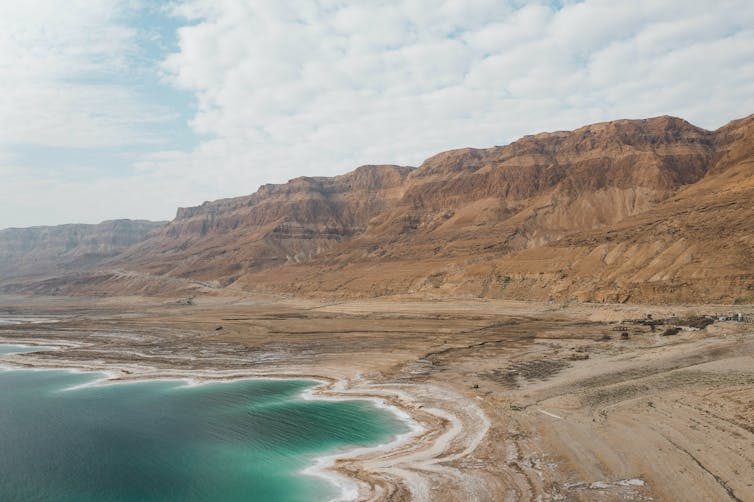
The cave is remote and difficult to access, which is doubtless why it was used as a hiding place. Aharoni describes the entrance as being 80 meters below the edge of the canyon with a drop of hundreds of meters below it. The team who first explored the cave in 1955 had to use a 100-meter-long rope ladder to reach the opening.
The nickname Cave of Horror was given to the cave because of a large number of skeletons, including children’s skeletons, that were found inside. Together with the skeletons were personal documents, a fragmentary copy of a prayer written in Hebrew, and the scroll to which these fragments belong, which was hidden at the back of the cave.
Remains of a Roman camp at the top of the cliff suggests the refugees sheltering there died as a result of a Roman siege. The occupants were determined not to surrender. There were no signs of wounds on the skeletons, suggesting the occupants died as a result of hunger and thirst, or possibly smoke inhalation from a fire in the centre of the cave.
They buried their most prized possessions, including the scroll from which these fragments come, to keep them safe.
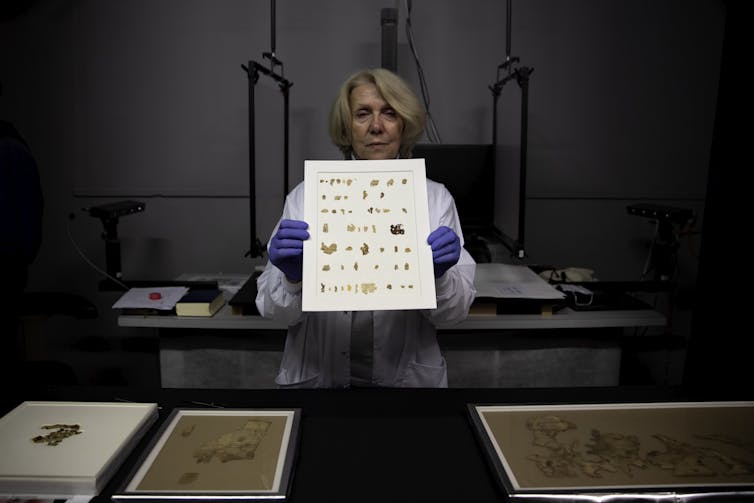
Our Oldest Biblical Texts
The photographs and reports released by the IAA indicate the fragments contain our earliest copy of Zechariah 8:16–17 and one of our earliest copies of Nahum 1:5–6. The fragments appear to be missing pieces of a scroll already known to scholars — the Greek Minor Prophets scroll from Naḥal Ḥever, or 8ḤevXIIgr to give it its official designation.
As the name suggests, the scroll is a copy of the Greek translation of the biblical minor prophets, containing portions of the books of Jonah, Micah, Nahum, Habakkuk, Zephaniah, and Zechariah. The “minor prophets” or “the twelve” customarily describes the books spanning from Hosea to Malachi in the Hebrew Bible and the Christian Old Testament.
Among other things, the minor prophets include the story of Jonah being swallowed by a “great fish”.
Read more: The Dead Sea Scrolls are a priceless link to the Bible's past
Don’t Say His Name
The ancient Hebrew scriptures were first translated into Greek for the benefit of Greek-speaking Jews who had begun to lose contact with their Hebrew roots. Ancient sources, such as the letter of Aristeas, indicate the work of translating the scriptures into Greek probably began in Egypt, some time around 200 years before Christ.
A fascinating feature of the Greek Minor Prophets scroll is the fact the name of God is written in Hebrew, not Greek. This practice stems back to the prohibition in Exodus 20:7 against “taking God’s name in vain”.
The Dead Sea Scrolls attest several practices for avoiding accidentally pronouncing the divine name while reading aloud. These include substituting dots in place of the letters and the use of an archaic form of the Hebrew alphabet.
This custom is the basis for the modern practice of writing Lord in capital letters in modern editions of the Bible.

Beating The Looters
Shortly after the discovery of the first Dead Sea Scrolls in 1947 it became apparent the rare ancient manuscripts had financial value. This led to a race between archaeologists and local Bedouin to discover more scroll fragments.
Consequently, it can be difficult to verify the archaeological provenance of many of the Dead Sea Scrolls remnants.
More recently, fake scrolls have found their way into at least one modern museum collection. A new manuscript discovery with secure archaeological provenance, like the one announced last week, is immensely important.
Perhaps most excitingly, these new fragments leave open the tantalising possibility there are more scrolls out there, waiting to be found.
Read more: Fake scrolls at the Museum of the Bible ![]()
Gareth Wearne, Lecturer in Biblical Studies, School of Theology, Australian Catholic University
This article is republished from The Conversation under a Creative Commons license. Read the original article.
These underwater photos show Norfolk Island reef life still thrives, from vibrant blue flatworms to soft pink corals
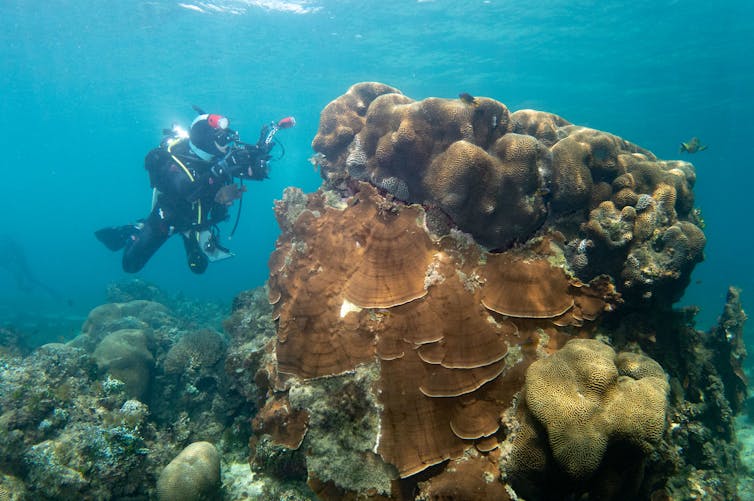
Environmental scientists see flora, fauna and phenomena the rest of us rarely do. In this new series, we’ve invited them to share their unique photos from the field.
Two weeks ago, I found myself hitting the water on Norfolk Island, complete with a survey reel, slate and camera.
Norfolk Island is a small volcanic outcrop located between New Caledonia and New Zealand, 1,400 kilometres east of Australia’s Gold Coast. It’s surrounded by coral reefs, with a shallow lagoon on the south side that looks out on two smaller islands: Nepean and Phillip.
The island is picturesque, but like marine environments the world over, Norfolk Marine Park is subject to pressures from climate change, fishing pressure, habitat change and pollution.
I was diving in the marine park as a volunteer for Reef Life Survey, a citizen science program where trained SCUBA divers survey marine biodiversity in rocky and coral reefs around the world. We first surveyed Norfolk Island in 2009, then again in 2013, with an eight year hiatus before our return this month.
While the scientific analysis of our data is yet to be done, we can make anecdotal observations to compare this year’s findings with prior records and photographs. This time, our surveys turned up several new sightings and observations.
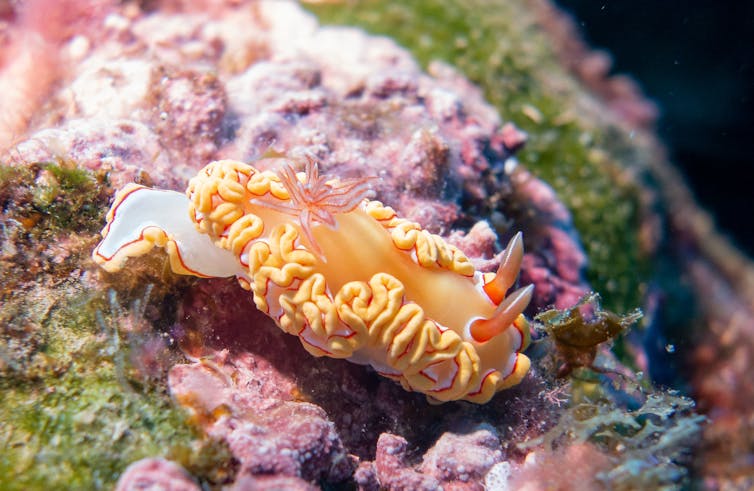
What We Saw
Diving under the waves in Norfolk Marine Park takes you into a world of crackling, popping reef sounds through clear blue water, with darting tropical fish, a tapestry of algae and hard and soft corals in pink, green, brown and red.
In these surveys we record fish species including their size and abundance, invertebrates such as urchins and sea stars, and habitat such as coral cover. This allows us to track changes in marine life using standardised scientific methods.
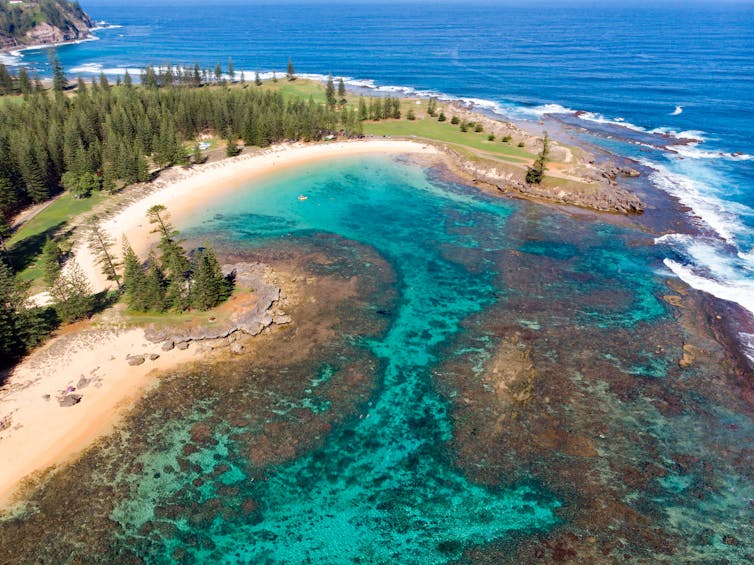
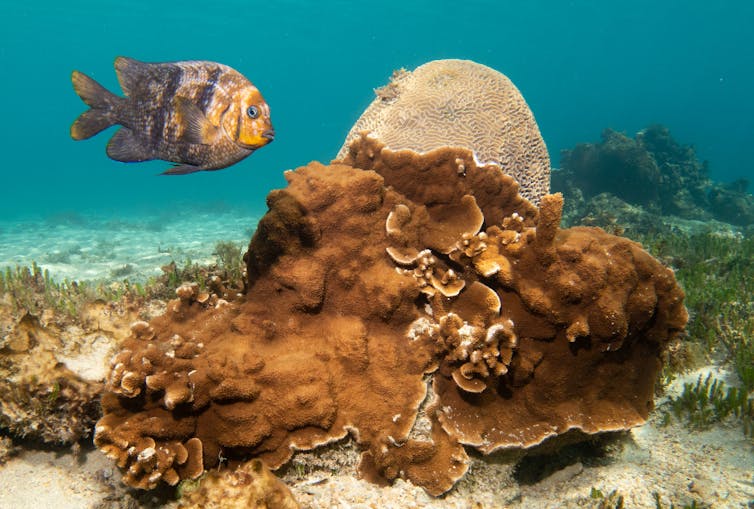
Given recent major marine heatwaves and bleaching events in Australia, we were pleased to see healthy corals on many of our survey sites on Norfolk. We even felt there had been increases in coral cover at some sites.
This may be due to Norfolk’s location. The island is further south than most Australian coral reefs, which means it has cooler seas, and it’s surrounded by deeper water. I’m a marine ecologist involved in soft coral monitoring at the University of NSW, so I particularly noticed the wonderful diversity and size of soft corals.
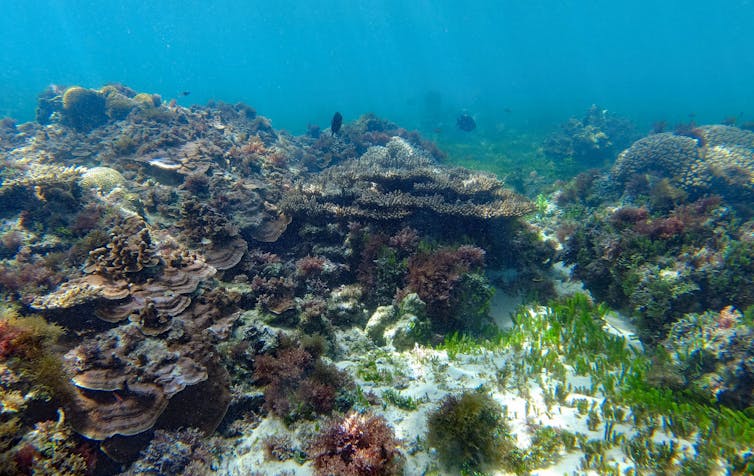
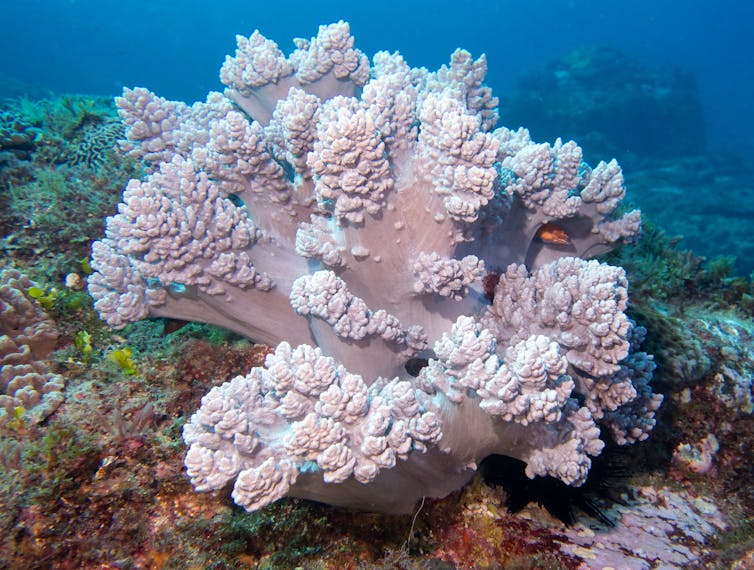

I noticed generally low numbers of large fish such as morwong and sharks on our survey sites. Some classes of invertebrate were also rare on this year’s surveys, particularly sea shell animals like tritons and whelks.
Urchins, on the other hand, were common, particularly the red urchin. Some sites also had numerous black long-spined urchins and large sea lamingtons.
These invertebrate observations follow patterns we see in eastern and southern Australia, where there are declines in the numbers of many invertebrate species, and increases in urchin barrens — regions where urchin populations grow unchecked.
The expansion of urchin barrens can threaten biodiversity in a region, as large numbers of a single species of urchin can out-compete multiple species of other invertebrates, over-graze algae and reduce habitat suitable for fish.

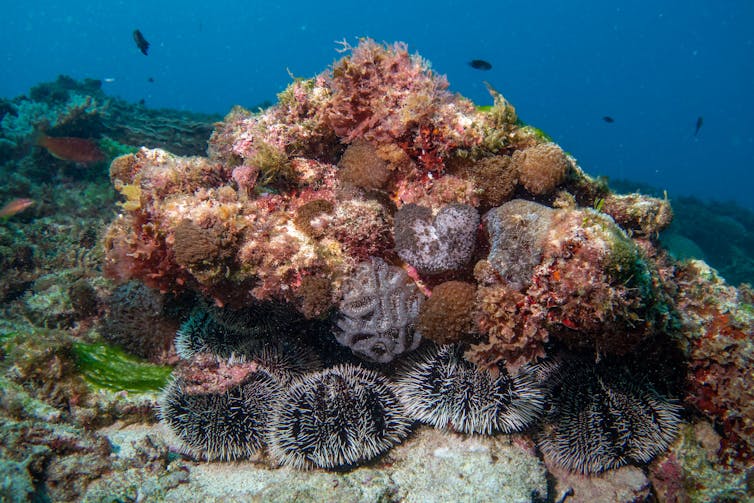

A highlight of any survey dive is when you find an animal you suspect may not have been recorded at a location before, and I had several of those on this trip.
I recorded first sightings for Reef Life Survey of blue mao mao, convict surgeonfish, the blue band glidergoby, sergeant major (a damselfish), chestnut blenny, Susan’s flatworm, red-ringed nudibranch, fine-net peristernia and an undescribed weedfish.
While some of these sightings are yet to be confirmed by specialists, they gave a buzz of excitement each night as we searched the records to confirm our suspicions of a new find.
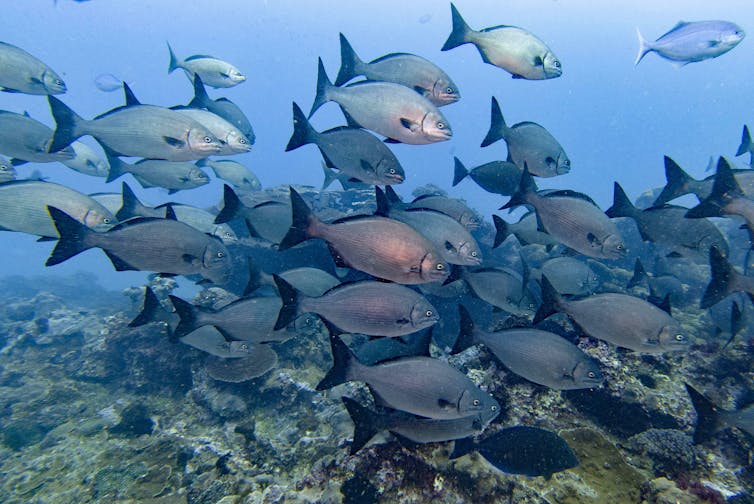
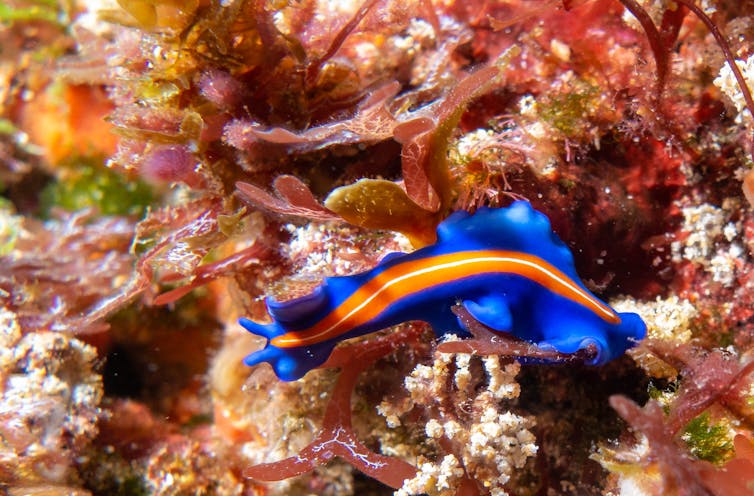
Recruiting The Locals
Other highlights for me included the warm welcome we received from the local community on Norfolk and the great turnout we had at our community seminar. Everyone I spoke to was supportive and encouraging when they heard we were on the island as volunteers doing surveys, and several people expressed interest in getting involved.
This is great news, as the best outcome is for local people to be trained to conduct their own local surveys.
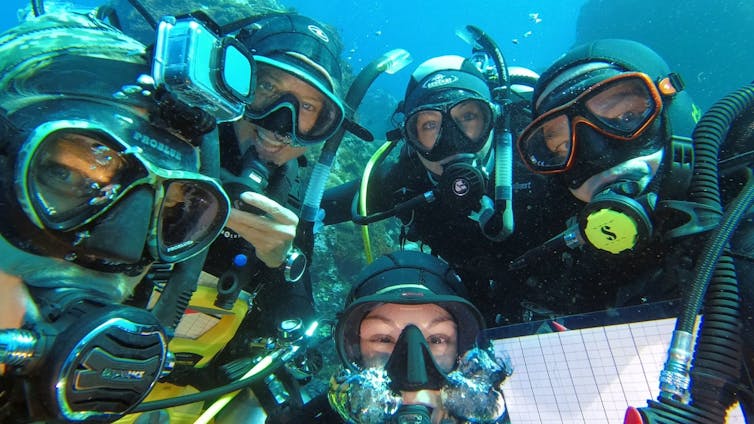
Ideally we will return for comprehensive surveys of our 17 sites every two years or so, allowing us to plot trends over time. Only then can we hope to understand what is really happening in our marine environment, and make evidence-based conservation decisions. Having a skilled local team would make this easier and more likely to happen.
In any case, our 2021 surveys in Norfolk Marine Park, conducted by our team of five dedicated volunteers and supported by many others, give us one more essential point in time in the Norfolk series, and gave me some great memories to boot.
You can view my full photo album from the Norfolk Island survey here.
Read more: Photos from the field: zooming in on Australia's hidden world of exquisite mites, snails and beetles ![]()
John Turnbull, Postdoctoral research associate, UNSW
This article is republished from The Conversation under a Creative Commons license. Read the original article.
Hidden women of history: Catherine Hay Thomson, the Australian undercover journalist who went inside asylums and hospitals

In this series, we look at under-acknowledged women through the ages.
In 1886, a year before American journalist Nellie Bly feigned insanity to enter an asylum in New York and became a household name, Catherine Hay Thomson arrived at the entrance of Kew Asylum in Melbourne on “a hot grey morning with a lowering sky”.
Hay Thomson’s two-part article, The Female Side of Kew Asylum for The Argus newspaper revealed the conditions women endured in Melbourne’s public institutions.
Her articles were controversial, engaging, empathetic, and most likely the first known by an Australian female undercover journalist.
A ‘Female Vagabond’
Hay Thomson was accused of being a spy by Kew Asylum’s supervising doctor. The Bulletin called her “the female vagabond”, a reference to Melbourne’s famed undercover reporter of a decade earlier, Julian Thomas. But she was not after notoriety.
Unlike Bly and her ambitious contemporaries who turned to “stunt journalism” to escape the boredom of the women’s pages – one of the few avenues open to women newspaper writers – Hay Thomson was initially a teacher and ran schools with her mother in Melbourne and Ballarat.

In 1876, she became one of the first female students to sit for the matriculation exam at Melbourne University, though women weren’t allowed to study at the university until 1880.
Going Undercover
Hay Thomson’s series for The Argus began in March 1886 with a piece entitled The Inner Life of the Melbourne Hospital. She secured work as an assistant nurse at Melbourne Hospital (now The Royal Melbourne Hospital) which was under scrutiny for high running costs and an abnormally high patient death rate.
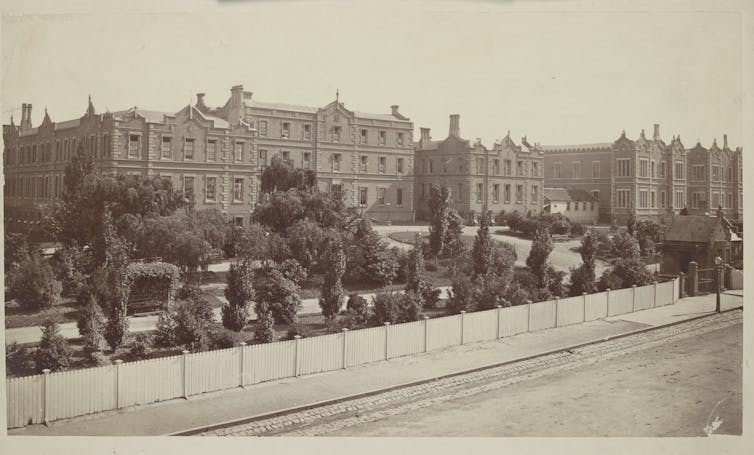
Her articles increased the pressure. She observed that the assistant nurses were untrained, worked largely as cleaners for poor pay in unsanitary conditions, slept in overcrowded dormitories and survived on the same food as the patients, which she described in stomach-turning detail.
The hospital linen was dirty, she reported, dinner tins and jugs were washed in the patients’ bathroom where poultices were also made, doctors did not wash their hands between patients.
Writing about a young woman caring for her dying friend, a 21-year-old impoverished single mother, Hay Thomson observed them “clinging together through all fortunes” and added that “no man can say that friendship between women is an impossibility”.
The Argus editorial called for the setting up of a “ladies’ committee” to oversee the cooking and cleaning. Formal nursing training was introduced in Victoria three years later.
Kew Asylum
Hay Thomson’s next series, about women’s treatment in the Kew Asylum, was published in March and April 1886.
Her articles predate Ten Days in a Madhouse written by Nellie Bly (born Elizabeth Cochran) for Joseph Pulitzer’s New York World.
While working in the asylum for a fortnight, Hay Thomson witnessed overcrowding, understaffing, a lack of training, and a need for woman physicians. Most of all, the reporter saw that many in the asylum suffered from institutionalisation rather than illness.
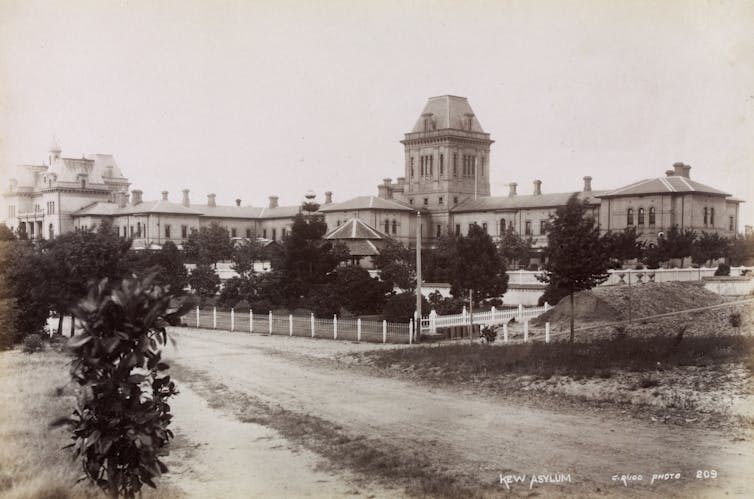
She described “the girl with the lovely hair” who endured chronic ear pain and was believed to be delusional. The writer countered “her pain is most probably real”.
Observing another patient, Hay Thomson wrote:
She requires to be guarded – saved from herself; but at the same time, she requires treatment … I have no hesitation in saying that the kind of treatment she needs is unattainable in Kew Asylum.
The day before the first asylum article was published, Hay Thomson gave evidence to the final sitting of Victoria’s Royal Commission on Asylums for the Insane and Inebriate, pre-empting what was to come in The Argus. Among the Commission’s final recommendations was that a new governing board should supervise appointments and training and appoint “lady physicians” for the female wards.
Suffer The Little Children
In May 1886, An Infant Asylum written “by a Visitor” was published. The institution was a place where mothers – unwed and impoverished - could reside until their babies were weaned and later adopted out.
Hay Thomson reserved her harshest criticism for the absent fathers:
These women … have to bear the burden unaided, all the weight of shame, remorse, and toil, [while] the other partner in the sin goes scot free.
For another article, Among the Blind: Victorian Asylum and School, she worked as an assistant needlewoman and called for talented music students at the school to be allowed to sit exams.
In A Penitent’s Life in the Magdalen Asylum, Hay Thomson supported nuns’ efforts to help women at the Abbotsford Convent, most of whom were not residents because they were “fallen”, she explained, but for reasons including alcoholism, old age and destitution.
Suffrage And Leadership
Hay Thomson helped found the Austral Salon of Women, Literature and the Arts in January 1890 and the National Council of Women of Victoria. Both organisations are still celebrating and campaigning for women.
Throughout, she continued writing, becoming Table Talk magazine’s music and social critic.
In 1899 she became editor of The Sun: An Australian Journal for the Home and Society, which she bought with Evelyn Gough. Hay Thomson also gave a series of lectures titled Women in Politics.
A Melbourne hotel maintains that Hay Thomson’s private residence was secretly on the fourth floor of Collins Street’s Rialto building around this time.
Home And Back
After selling The Sun, Hay Thomson returned to her birth city, Glasgow, Scotland, and to a precarious freelance career for English magazines such as Cassell’s.
Despite her own declining fortunes, she brought attention to writer and friend Grace Jennings Carmichael’s three young sons, who had been stranded in a Northampton poorhouse for six years following their mother’s death from pneumonia. After Hay Thomson’s article in The Argus, the Victorian government granted them free passage home.
Hay Thomson eschewed the conformity of marriage but tied the knot back in Melbourne in 1918, aged 72. The wedding at the Women Writer’s Club to Thomas Floyd Legge, culminated “a romance of forty years ago”. Mrs Legge, as she became, died in Cheltenham in 1928, only nine years later.![]()
Kerrie Davies, Lecturer, School of the Arts & Media, UNSW and Willa McDonald, Senior Lecturer, Macquarie University
This article is republished from The Conversation under a Creative Commons license. Read the original article.
How young LGBTQIA+ people used social media to thrive during COVID lockdowns
Benjamin Hanckel, Western Sydney University and Shiva Chandra, Western Sydney UniversityDuring COVID-19 lockdowns, a major concern for LGBTIQ+ communities, mental health professionals and academics was that young lesbian, gay, bisexual, trans, queer and questioning, intersex and asexual+ people may suffer from being stuck in transphobic, biphobic or homophobic households.
But encouragingly, our research found these young people largely managed to navigate these spaces successfully, by increasing their social media use, exploring identity through digital channels and finding safe ways to maintain family relationships.
We spoke to 65 LGBTQIA+ people aged 16–30 from across Australia, with cultural backgrounds including Indigenous, European, South Asian, Middle Eastern and East Asian. For many, isolation provided an opportunity to reflect and build on their identity.
Surfing The Web During Lockdown
We spoke to queer people who identified as gay, lesbian, bisexual, asexual, pansexual and demisexual — and with various gender identities such as cis male/female, intersex, non-binary, trans, gender-fluid, agender and questioning.
Our respondents expressed having generally increased their social media use during COVID-19 lockdowns, when they were forced to stay home. As a result, they reflected on and explored their gender and sexual identity online more than usual. One interviewee said:
It was definitely a big help just to have a chance to think about it on my own for a bit, instead of having to do other stuff.
The group reported using social mediums such as Instagram, TikTok, Facebook, Snapchat and Discord to find others like them — and to discover language that helped them make sense of their own feelings and desires (which is often absent from classrooms).
Read more: Pages and prejudice: how queer texts could fight homophobia in Australian schools
Maintaining Family Ties And Hobbies
During lockdowns, respondents had to actively decide what information to share with family and how to navigate these relationships online and offline.
This generally didn’t impede their identity work, however. Many said they blocked certain individuals, created multiple social media accounts or strategically shared content with only specific people.
Meanwhile, they also found ways to relate to and safely connect with other LGBTQIA+ people online. This is what experts call online “curation”. One young panromantic demiboy said:
I’m in a lot of private groups that are sort of other people from either Australia or across the world that just describe their experiences […] having a lot of other people around you that are in the same boat is just, you know, just really reassuring.
Online friends helped build an important sense of community, which then created space for discussions on gender and sexuality which may not have been possible with families.
Some respondents curated their online spaces with family in mind. For example, they would deliberately not be explicit about gender and sexual identity on certain platforms, due to concerns about repercussions for their parents. Thus, concern for loved ones shaped the way they used social media.
And while LGBTQIA+ communities were indeed important, this wasn’t all respondents looked for. Their online communities were made up of LGBTQIA+ people and others who enjoyed cosplay, gaming, art, baking, fandoms and anime.
Young queer people, like all people, are multifaceted and have a variety of interests, so identity work happens alongside hobbies and fun. One queer trans man we interviewed said his circles featured a strong mix of both queer and fandom themes:
I tend to find the queer community within the fandom really, really quickly.
Read more: How pop culture has become a refuge for queer children
But Social Media Has Its Downsides
Unfortunately, we found young queer people also dealt with negativity on social media during lockdowns.
They recounted seeing hateful comments that marginalised and denigrated queer people and expressed concern about social media sites censoring queer-related content more harshly than other content.
We know queer online spaces themselves can be prejudicial and have examples of transphobia and discrimination against bisexual individuals.
Our respondents mentioned their experiences teaching others (both straight and LGBTQIA+ people) about gender and sexuality online. Many valued an educative approach for people with prejudicial and discriminatory ideas.
We found the onus of this work often fell on them, while they emphasised it was a balancing act; they didn’t always want to engage with negative material about themselves or similar groups.
Supporting Young LGBTQIA+ People
Notwithstanding obvious differences in lived experience, our findings indicate LGBTQIA+ youth know how to find creative, resourceful and intelligent ways to thrive online.
Yet it’s imperative society at large continues to support LGBTQIA+ youth and help make sure their experiences are not negative. There are a few ways this can be done:
Introduce support resources to assist young LGBTQIA+ people with using online spaces to their advantage and as their circumstances require. Our respondents expressed this would be helpful as they frequently deal with stigma and fear online.
Advocate for better social media policies that support inclusion and diversity. Platforms must also be more discerning when LGBTQIA+ content is reported, as people may flag material due to their prejudices and not because something is wrong with it.
More broadly, we should all work to ensure fair representation and widespread acceptance of LGBTQIA+ people in everyday life. This will help reduce day-to-day stigma. For a start, we can all share more diverse LGBTQIA+ content on our own social media profiles.
Read more: Friday essay: hidden in plain sight — Australian queer men and women before gay liberation ![]()
Benjamin Hanckel, Senior research fellow, Western Sydney University and Shiva Chandra, Research Assistant, Western Sydney University
This article is republished from The Conversation under a Creative Commons license. Read the original article.
Cheerleaders are athletes. The NRL should pause on packing away the pom poms
Michelle O'Shea, Western Sydney University; Patrick van Esch, Auckland University of Technology, and Sarah Duffy, Western Sydney UniversityAs the NRL competition ushers in its 2021 season, women waving pom poms while clad in figure hugging attire and white, knee-high boots will be missing from some games.
The Parramatta Eels are the latest and fifth team to cut their cheerleading squad, announcing in late January their 30 cheerleaders wouldn’t be employed this year. This decision also means nearly 80 junior cheer girls no longer have a home.
From a peak of 16 cheerleading teams in 2006, this year only 11 teams will still have cheerleaders on the sidelines.
In 2007, the then new owner of the South Sydney Rabbitohs, Russell Crowe, said cheerleaders made spectators “uncomfortable”. They were replaced with a marching band. In 2017, the Canberra Raiders replaced their squad with a game-day competition for local dance schools.
In 2019, the Melbourne Storm replaced cheer girls with mixed gender hip hop crews.The Brisbane Broncos rebranded their cheerleaders as a “dance squad”, and toned down their uniforms to “desexualise” performers and celebrate their athleticism.
For many teams, the cheerleaders are now positioned as brand ambassadors, involved in community outreach, attired in more modest costumes. Their remit is fundamentally changing. Cheering on the sidelines is increasingly looking like a sexist relic.
But rather than remove cheerleaders from sport fields altogether, we should celebrate their athleticism, embracing cheerleading as a sport in its own right.
It Wasn’t Always Women Who Cheered
Although women are most often associated with cheerleading, it was once a male pursuit. Even as teams diversified, George W. Bush, Dwight Eisenhower, and Franklin D. Roosevelt were all cheerleaders.

Women first joined their American college cheer squads in 1923, participating in greater numbers in the 1940s as college-aged men went off to war. In this decade, cheerleading started to feature tumbling and acrobatics. Competitive cheerleading was introduced in the United States in the 1970s.
Today, both sideline and competition routines incorporate advanced tumbling, stunts and pyramid building alongside cheer and dance. The athleticism, skill and commitment is the same.
Cheerleading in Australia never reached the same mainstream popularity as in America. Female supporters banded together in the 1960s to form a cheer squad for the Carlton AFL club, but it never truly took off in the sport.
Cheerleading today has its Australian home in the NRL and the National Basketball League.
But as in America, Australian girls and women are increasingly becoming the team — not just cheering on the team from the sidelines.
Founded in 2016, Australia’s All Star Cheerleading competitions are gaining popularity and reach, now with over 60,000 registered competitors across the country, who show off their skills in complex routines featuring gymnastics, dance, pyramids and acrobatics.
In 2017, competition cheerleading was granted provisional Olympic status, putting it on the path to being an official Olympic sport as early as Paris 2024.
It’s Time To Rethink The Cheerleader Stereotype
In popular culture, cheerleaders continue to be cast as a trivial diversion to the real athletic performances on centre field. They are shown as two dimensional bimbos in pornography, and they are often portrayed as vapid and shallow in movies.
This reputation is slowly being recast, in part thanks to the popular Netflix docuseries Cheer. Following the co-ed team of a community college in Texas as they train for the national competition, the show highlights the sacrifices these athletes have made, and the high stakes for their physical health.
Cheer celebrates powerful images of the cheerleader by focusing on their athleticism, and their commitment to train, rehearse and perform to a competition level.
Cheerleading can reinforce the notion of sport as a masculine domain if the women involved are treated as a titillating sideline act. But cheer squads can also challenge gender ideals by celebrating women’s athleticism, skill and professionalism.
Cheerleading is a very physical – and potentially dangerous — activity, which requires both finesse and strength.
Don’t Cancel The Cheer
Rather than remove cheerleaders from the field, we should celebrate their athleticism and embrace it as a sport in its own right: moving away from the skimpy outfits and dancers, towards the physical athleticism of competition cheer.
Let’s challenge the status quo by dropping the eroticised messages that devalue cheerleaders but respect their contribution to their clubs, community and the game-day spectacle.
When cheerleaders are positioned as sexualised adornments alongside the “true” athletes playing rugby league, young boys and men are taught it is okay to treat women as objects.
When they are positioned as athletes, their physicality appreciated and respected, cheerleading can provide these women (and increasingly men) with paid work and a respected place on the sporting field.
As the football season begins, let’s not be too quick to cancel the cheer.![]()
Michelle O'Shea, Senior Lecturer, School of Business, Western Sydney University; Patrick van Esch, Senior Lecturer in Marketing, AUT Business School, Auckland University of Technology, and Sarah Duffy, Lecturer, School of Business, Western Sydney University
This article is republished from The Conversation under a Creative Commons license. Read the original article.
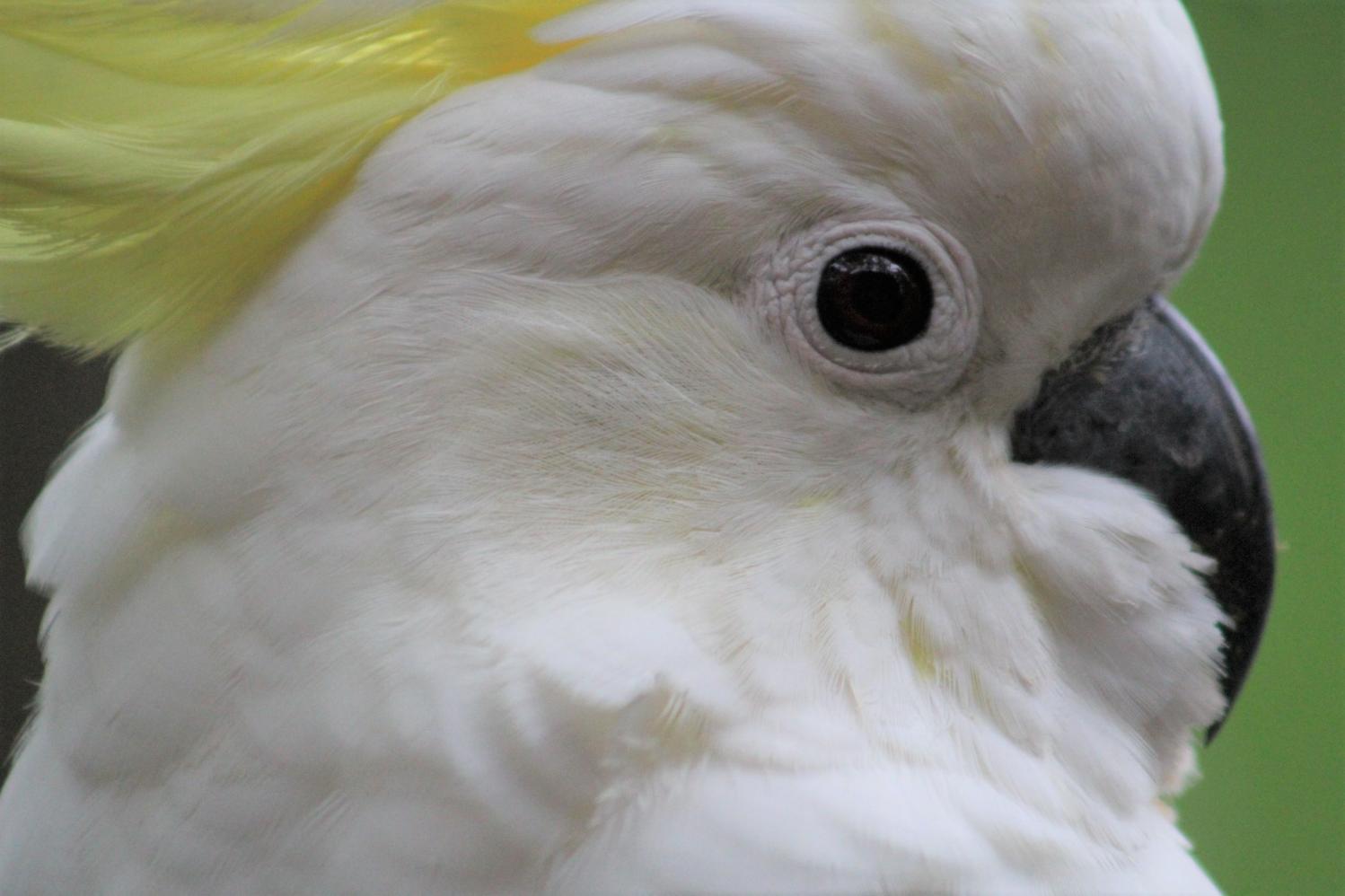
COVID-19 Is A “Serious Risk” To 80% Of Older Australians
Ageism Is A Global Challenge: UN
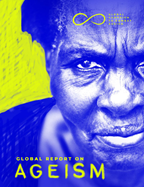 Ageism seeps into many institutions and sectors of society including those providing health and social care, in the workplace, media and the legal system. Healthcare rationing based solely on age is widespread. A systematic review in 2020 showed that in 85 per cent of 149 studies, age determined who received certain medical procedures or treatments.
Ageism seeps into many institutions and sectors of society including those providing health and social care, in the workplace, media and the legal system. Healthcare rationing based solely on age is widespread. A systematic review in 2020 showed that in 85 per cent of 149 studies, age determined who received certain medical procedures or treatments.'A lot of us can relate to struggling to keep on top of everything.' This is what mature-age students need from online higher education

“I completed high school 20 years ago and wanted a ‘little break’ before furthering my study. That ‘little break’ was extended as my family grew. Life happened, and I never quite found the right time to keep my promise to myself to go to uni – until now!”
“This is my first teaching period in uni. I’m 36 years old. I live with my wife and two very active kids. When I’m not being a chef, cleaner and taxi driver (you know the list), I’m working as a learning support officer at our local school. I haven’t written an academic essay in over 15 years!”
These are common introductions of my mature-age students. They often share their family backgrounds, nervousness, excitement and responsibilities they have to juggle as they begin their uni journey. In sharing, they “feel a sense of solidarity seeing others post about their concerns”, as one student put it.

Students in general say a critical issue in the shift to online higher education has been a lack of adequate support, interaction and engagement with academic staff and peers.
More than 430,000 students are aged 25 years and older. That’s 39.1% of the total domestic higher education enrolment, and mature-age students account for 22% of first-year undergraduates.
Mature-age, online students are identified as the most vulnerable to not completing their degree. That happens to about 43% of them compared to 30% of those aged 20 to 24 and 21% for students who enrol straight out of school.
Given the inconsistent completion outcomes for mature-age students compared to younger and on-campus students, a different approach is needed. This means universities must take account of the particular needs and circumstances of mature-age students.
“I think a lot of us can relate to the idea of struggling to keep on top of everything.”
Who Are These Students?
“Mature age” refers to adults who enter their course based on work experience or who have not studied recently. They are more likely to have responsibility for others and be in the paid workforce.
Growing numbers of students are entering fully online higher education. And students 25 years and older are more strongly represented in online studies than face-to-face studies.
A 2019 study of mature-age learners highlighted the following challenges of studying online:
uncertainty in abilities leading to a “narrative of disadvantage” and a feeling of stepping into a space where they feel they do not belong
first-year, mature-age students consider withdrawing from their studies at higher rates
enrolment in university may be rooted in previous negative educational experiences – traditionally, the status quo in higher education has not served students at the margins.

Online Teaching Compounds Existing Weaknesses
In the shift to online, many education providers are making the same mistakes by continuing with impersonal teaching methods. Students aged 25 and over rate engagement as the least satisfactory aspect of their online courses.
Active engagement tends to drop off as the teaching period progresses. (The proxy measures of “engagement” are active presence and involved participation.)
Further, education has commonly had an emphasis on subordination. Cue the “domineering teacher” portrayed by antagonist Terence Fletcher in the 2014 film Whiplash. One-way information transmission and an expectation of passive knowledge acquisition have overshadowed relationships between teaching staff and students.
The challenge, then, is to start off in a way that develops a culture of trust, collegiality, openness and contribution.
‘It Resonates!’ Recognising Experiences And Skills
Mature-age students are starting online higher education with a variety of aptitudes, knowledge, opinions and values. These backgrounds affect how students engage with and construe information. The online experience should encourage connection, active participation and critical thinking.
The language of education is shifting to incorporate students as “stakeholders”, “co-constructors” and “active participants”. Such terms have a powerful effect.
In 1930, psychologist and educational reformer John Dewey advocated for empowering learners by honouring their lived experiences and capabilities. Reforms of the 1960s and ‘70s began shifting education toward autonomy, allowing for reflection, independence and flexibility. More recent geopolitical movements, driven by social media, are, once again, prompting an upturn in education that emphasises discussion, openness and independent thought.
It’s essential that these themes be re-created in today’s digital learning environments.
“You made me feel like I am not alone in this. I was anxious and afraid that I won’t be able to keep up.”
Emerging from the 2019 study of mature-age students were several key recommendations:
understand and value the circumstances and experiences of this cohort
communication and personal contact are vital
embed timely, proactive support.
In such environments, educators must be given the time to get to know their students’ situations and experiences. They can then reach out to support them. In essence, Dewey argued for educators to meet learners where they are, wherever that may be.
“I have felt I was always able to contact you and receive helpful advice. It means a lot – especially for newcomers like me!”
These suggestions are in line with the findings and recommendations of the recent Macklin Review of post-secondary education and training in Victoria. Times of growth and uncertainty call for greater adaptability, empathy and innovation. This will feed into student retention, progression and ultimately an undergraduate qualification.
To government and institutions: online education, and of mature-age students in particular, must be approached differently. Education can only act as the great social equaliser if the growing cohort of mature-age students are engaged and supported to reach their academic goals.
To current and emerging mature-age learners: well done to you! You are seen and being heard.![]()
Ameena Leah Payne, eLearning Advisor, Swinburne University of Technology
This article is republished from The Conversation under a Creative Commons license. Read the original article.
Warringah - Pittwater Headquarters Rural Fire Brigade Life Membership
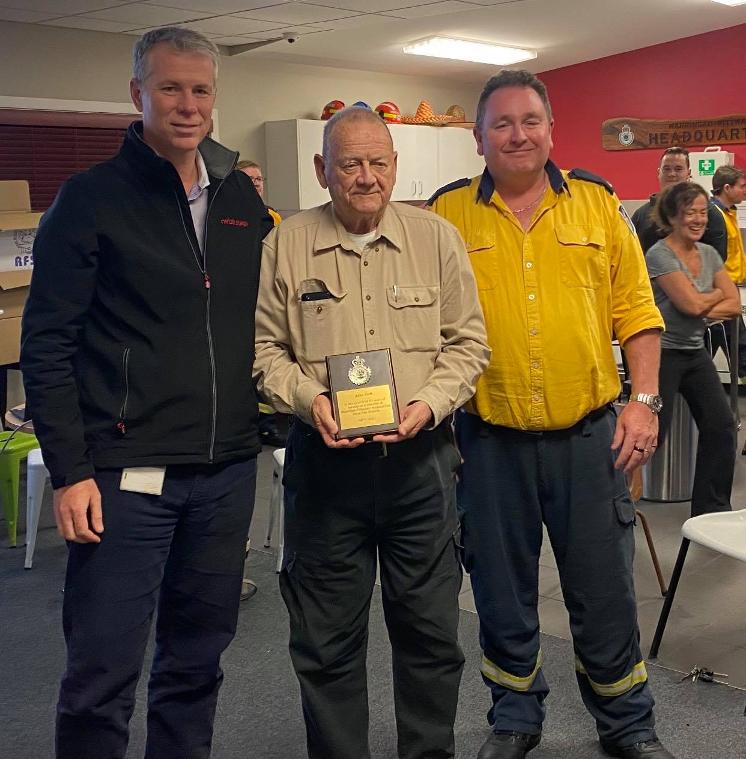
Assistance To Pay Your Aged Care Costs
- in residential or respite care
- getting a home care package.
- you’ve completed a calculation of your cost of care
- you have assets valued less than the current threshold
- you haven’t made gifts over the limits.
Sleep Maximises Vaccine Effectiveness
- choose light, rather than heavy meals in the evening
- keep your bedroom dark, cool and quiet
- avoid bright light in the evening – especially light from phones and devices – and make sure you get enough sunlight in the morning
- exercise during the day
- avoiding cigarettes, caffeine, and alcohol.
WHO Global Report On Ageism Right At Home In Australia
Viewpoint On Sydney
Aged Care Respite Services Bolstered For Culturally Diverse Groups
Phantom Of The Opera Coming To Opera House: Tickets On Sale In April
AvPals 2021
World Frog Day Heralds Bumper Season For Local Frogs
This World Frog Day (Saturday March 20) it’s worth celebrating a bumper Spring and Summer for frogs. And now, with all this rain, you can still hear them croaking from every front yard or nearby creek
Doctor Joanne Ocock, Project Officer with the National Parks and Wildlife Service said native frogs have a range of strategies to deal with dry and wet cycles.
“All the frogs in our area need water to lay eggs and allow tadpoles to develop into new frogs, but not all have the same strategy for surviving when the water starts to dry up.
“There is not one secret formula for surviving as a frog in the Central West and North West Plains, it is inevitable that the dry will happen and they all approach it in different ways.
“Frogs like the barking marsh frog or salmon-striped frog, lose water through their skin quickly so need to stay close to damp areas. They survive dry times by sheltering near remaining waterholes or creeks, down muddy cracks and in the middle of wetland reeds and rushes.
“Tree frogs are the ones people see more often around the house, like the Peron’s tree frog or green tree frog. These frogs have a slightly different skin type so don’t lose water as easily. They also make sure to shelter in places with low wind exposure and high humidity, like a drainpipe. This means they can roam further from water and survive for long periods until the rains come again.
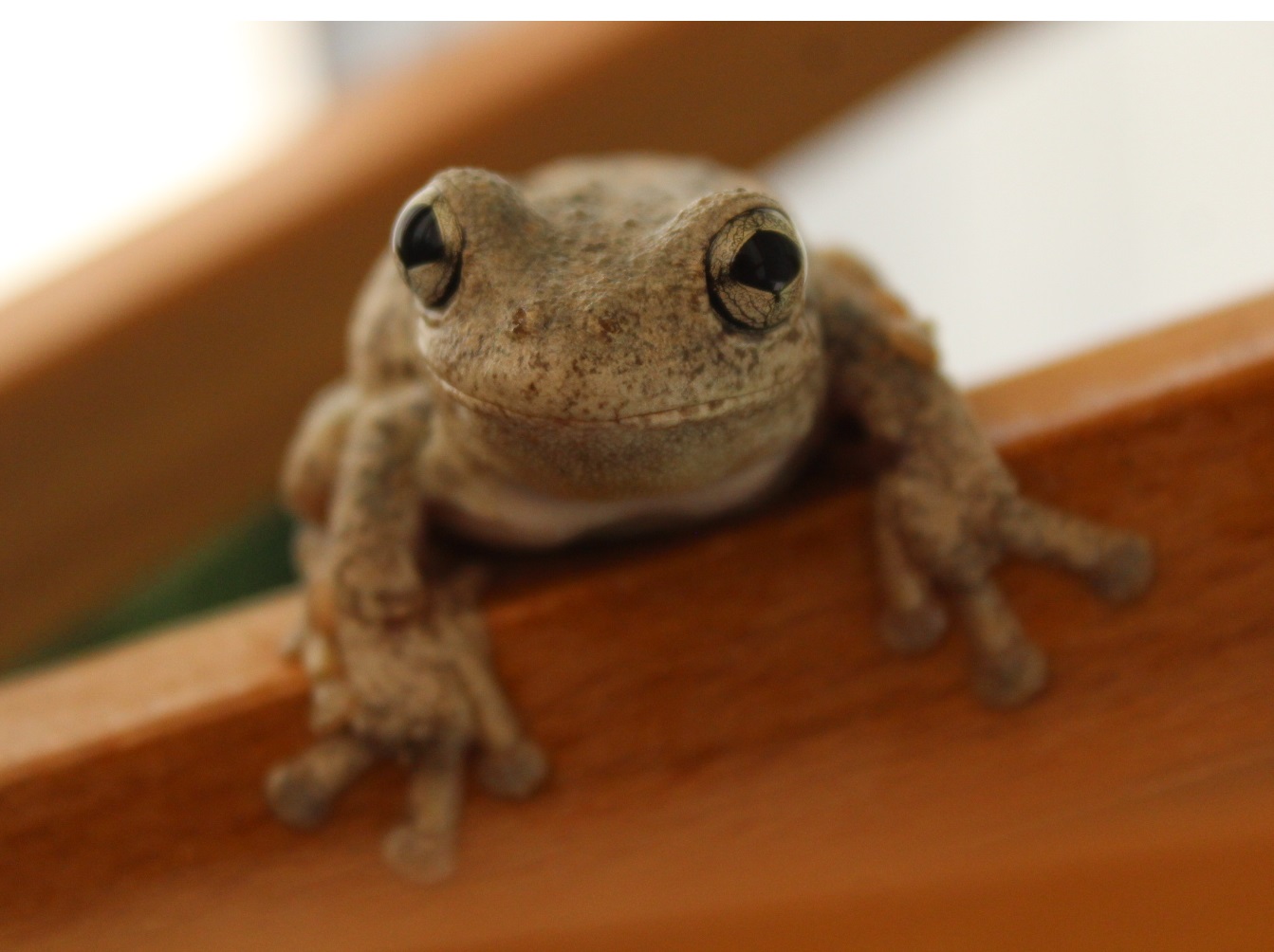
“But the most extreme strategy is employed by the frogs who burrow underground and make a cocoon from layers of their own skin!
“Frogs like the water-holding frog and striped burrowing frog, then wait out the dry for up to two years in a type of hibernation called aestivation when all bodily functions virtually shut down. Once they sense the rains have returned, the frog will eat the cocoon and dig its way back out, ready to soak up some water have a feed and get back to business. Until it dries out again.
“The Central West and North West Plains are somewhat unique in the high numbers of each type of frog occurring here. This is due to the range of habitats from creeks and streams, rivers, lakes, wetlands and temporarily flooded depressions, providing perfect habitat for all sorts of frogs.
“Get out and explore your local national park. Stop and listen for frogs, especially at dusk. You’ll hear a different chorus from those at your back window and will start to appreciate the variety of frogs in your local area,” Dr Ocock said.
Not quite sure what you are hearing? The Australian Museum runs a fantastic identification app https://www.frogid.net.au/
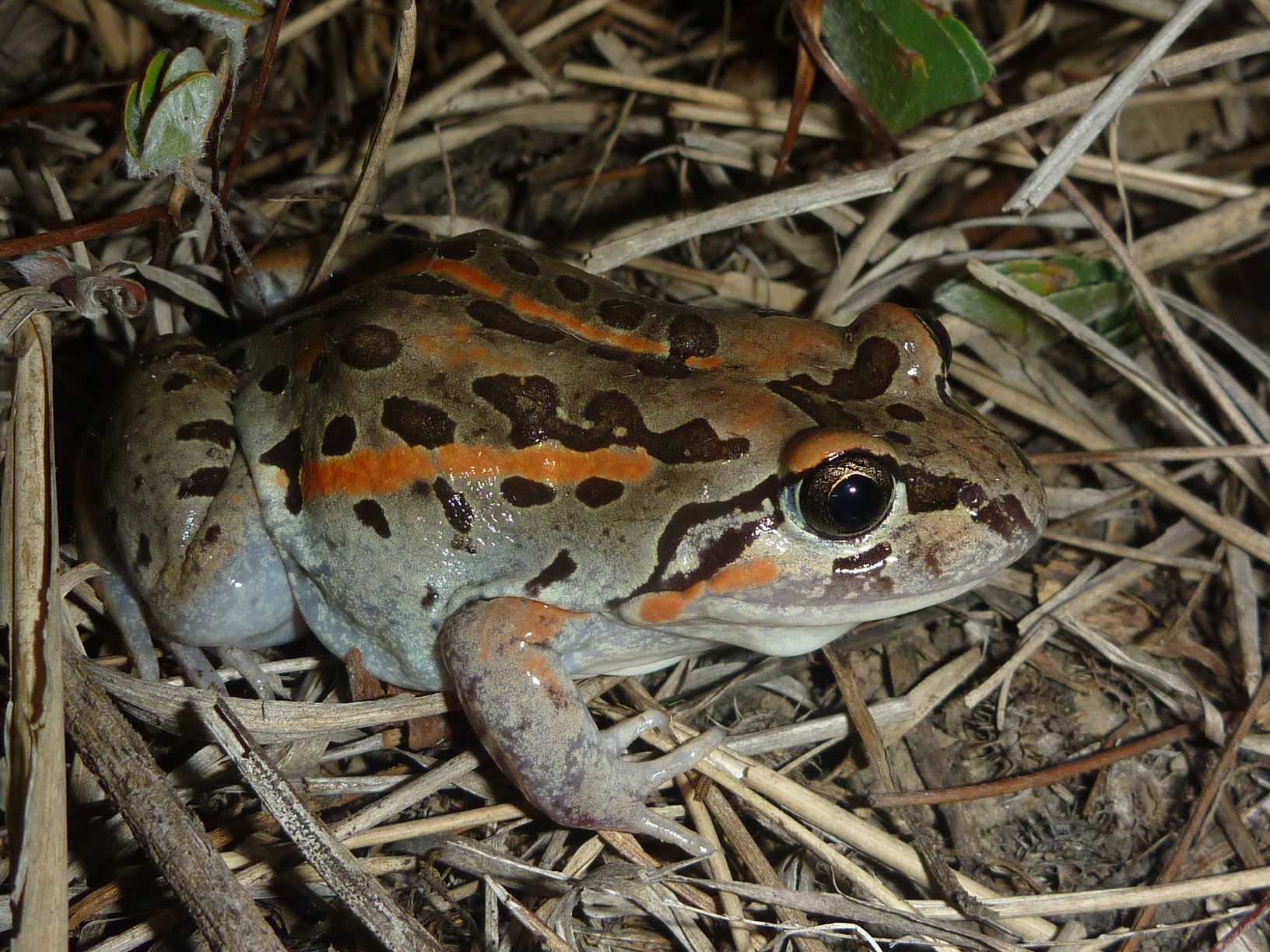
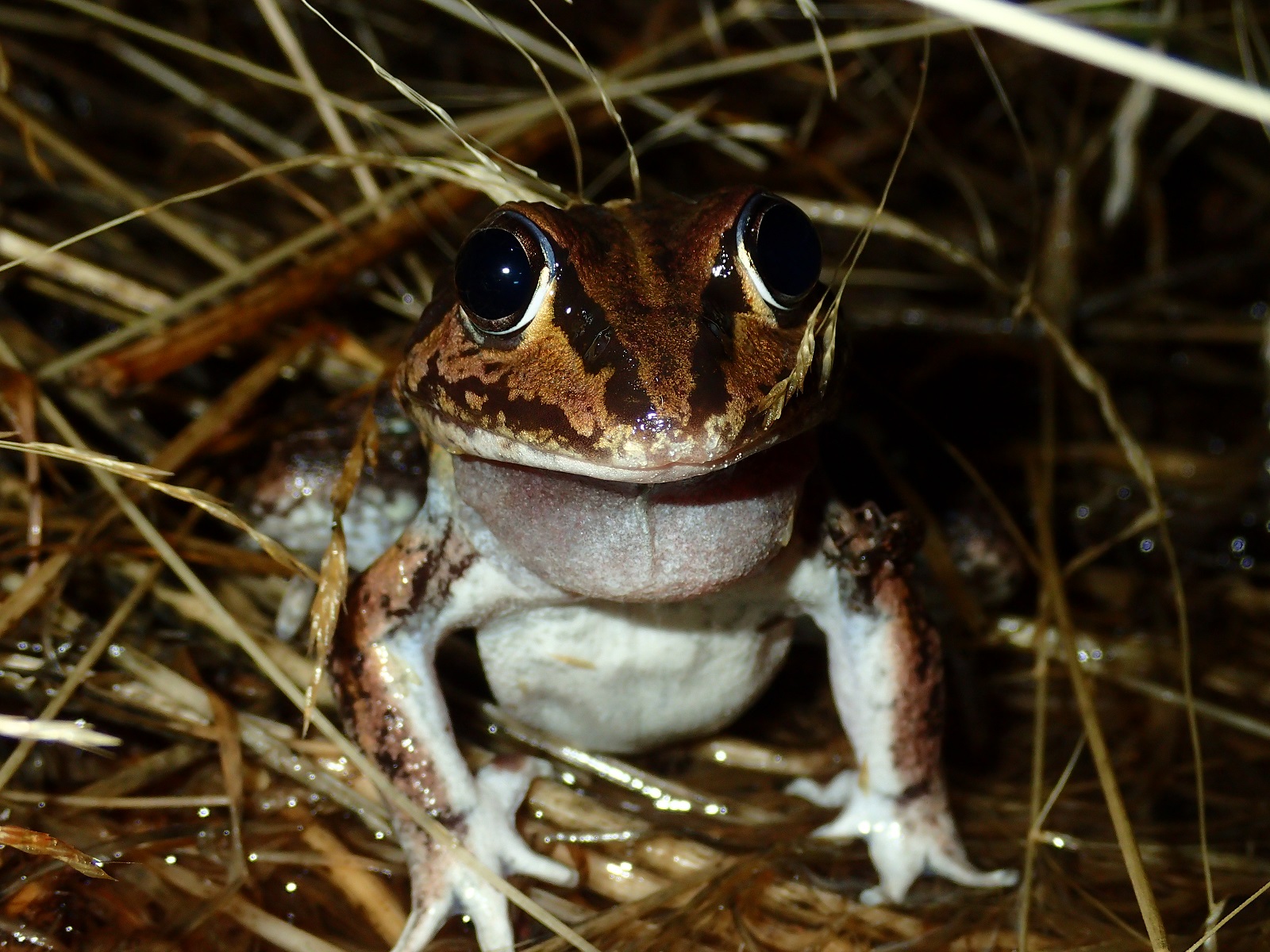
Images: Litoria caerulea Green tree frog, Limnodynastes salmini Salmon-striped frog by and Striped burrowing frog Litoria alboguttata - all by Dr. Ocock Perons Tree frog by A J Guesdon
Royal Easter Show 2021 Showcases A Whole World Of Animals
Have you seen all the great animals you can visit at this year's Royal Easter Show? This (apart from show bags and fairy floss) was always my favourite part of each year's show. I managed to get some tickets for my nieces and their cousins a bit over a week ago now - they like all the rides (and the show bags) - but they also love animals and even collect toy animals.
One of my favourite animal displays are the horses. Did you know that the Sydney Royal Horse Show is the largest of its kind attracting over 5,500 entries exhibiting the most prestigious horses in Australia and New Zealand?
There's a competitive event every day of the Show with classes including: Breeds, Hacks, Light and Heavy Harness, Showjumping, Campdraft, Polo, Rodeo, Pony Club, Tentpegging and Heavy Horse Obstacle Vaulting. You can see that every day of the Royal Easter Show in the big stadium and in the arena. Youngsters are getting involved in the Youth Polocrosse this year too. Originating in NSW in 1939, Polocrosse is an action-packed team sport enjoyed by all age groups. This year Junior Polocrosse teams will compete in four exhibition matches, combining the skills of polo with the speed of lacrosse. Using long-handled racquets, the aim is to scoop up the ball and get it into the goal. With only three players on the field for each team, the pace is fast.

Visiting the Pet Pavilion is pretty amazing too as it 'shows' you all the animals people keep as pets - everything from mice to birds and even frogs can be seen, however, it's the puppies and kittens we love.
For those who don't spend time on a farm there's the 10 Shake Farmyard Nursery. Here you will find 10 Shake Farmyard Nursery - an open-plan indoor paddock with over 500 free-range animals you can pat. Here you'll see playful ducklings on their waterslide, piglets, geese, donkeys and much more or maybe have a go at feeding the friendly chickens, sheep and goats that come to visit you.
If you want to find out more about being on a farm you can visit the Junior Farm Hands. Here you can grind grain, dig for vegetables and move animals around your farm. RAS Junior Farm Hands activities give little ones the opportunity to try their hand as a farmer and even take a turn in the tractor - don't leave the Food Farm without collecting your very own tractor licence!
Follow the link to download your Junior Farm Hands Activity booklet.
While finding out all about farming you may want to pop into the District Exhibits - this is like a mini-tour through our very own countryside. These spectacular constructions of vegetables, fruit and other produce are one of the highlights of The Sydney Royal Easter Show. These giant displays are a cooperative work by growers that reflect the diversity and excellence of their regional produce. Each consists of more than 10,000 pieces of fresh produce from five agricultural districts throughout NSW and South East Queensland.
Kids Street is designed for tiny tots to pre-teens, with a recharge spot for mum and dad too, featuring a selection of carnival games, hot food, coffee, and a specially marked pram parking zone. Located at GIANTS Stadium Concourse, all rides are available for only 4 coupons each (yes, I got them some rides coupons too - saves waiting around, we hope!).

But, let's get to the showbags - did you know these began over 100 years ago as 'sample' bags?
Originating at the Sydney Royal Easter Show sometime between 1909 and 1914, possibly by kiddie-favourites Gravox, the bags were originally given away by brands hoping to launch their wares by providing free samples of products. Food samples were handed out, and these were to evolve into 'sample bags'. By the late 1920s (1927), as the cost of producing bags became too much for companies, they began being sold.
So - what's good value or just great fun this year?
There's some great samples in the lollies department of course - we like getting Bertie Beetles at the RAS as you often can't get them elsewhere. They have a good deal this year with 3 bags for $8.00, while stocks last. What’s included:
1x Bertie Beetle Red Showbag $2.90
1x Bertie Beetle Blue Showbag $4.00
1x Bertie Beetle Platinum Showbag $9.60

But the best deal is always the Ag Bag - Inside the Home and Lifestyle Pavilion, while available. This one is $25 but you get around $80 worth of stuff in it and after visiting the Farm, this one may appeal as it's filled with Australian made products. What's more, the RASF Ag Bag is a fundraising bag - All proceeds go back to rural & regional community projects. Australian-made contents donated by Australian-owned companies. For more information on the work of the RASF visit www.rasf.org.au
What's included in 2021:
1x SunRice Microwave Brown Rice 250g $2.50
1x SunRice Brown Rice Chips (assorted Flavours) 150g $5.00
1x Selector Magazine 300g $8.50
1x Manildra - The Healthy Baker Flour 1kg $3.00
1x Manildra - Recipe Booklet $6.00
1x Manildra - "Stay Safe" Hand Sanitizer 50ml $6.00
1x Freedom Foods - Australia's Own Barista Almond Milk 1lr $4.50
1x Rinoldi - Vetta Pasta 500g $2.25
1x Kurrajong Kitchen - Lavosh Original Poppy & Sesame Seed Bites 100g $3.00
1x Carman's Kitchen - Brownie Cholc Aussie Oat Bar $0.84
1x Maxiblock - Kinder Sunscreen Lotion SPF50 100 g + Flyer $10.95
1x Karma Rub - Liquid Magnesium Rub 2.5ml x 4 & Liquid Night Cream 10ml x 1 Sachets $5.00
1x Slim Secrets - Protein Choc Fudge Brownie 100g $3.80
1x Royston Petrie Seeds - Spinach N.Z. Warrigal Greens $3.50
1x NSW Landcare - Everlasting Daisy Seeds Sticks $2.50
1x Seasol - Seaweed Concertrate Sachet 45g $1.00
1x Oz-Pet - Litter Scooper $5.00
1x Albury Enviro Calico Bag $5.00
1x "I Love Aussie Farmers" Sticker $0.60
1x "I Love Australia Made" Sticker $1.00
1x CanAssist Brochure & tea bags $0.06
1x RAMPH Mental Health Brochure
1x Birdsnest Voucher - get $20 off when you spend $75 or more online
1x Rich Glen Olive Estate Voucher - get a free Poppy's Favourite Dressing ($10) when you spend $60 or more online
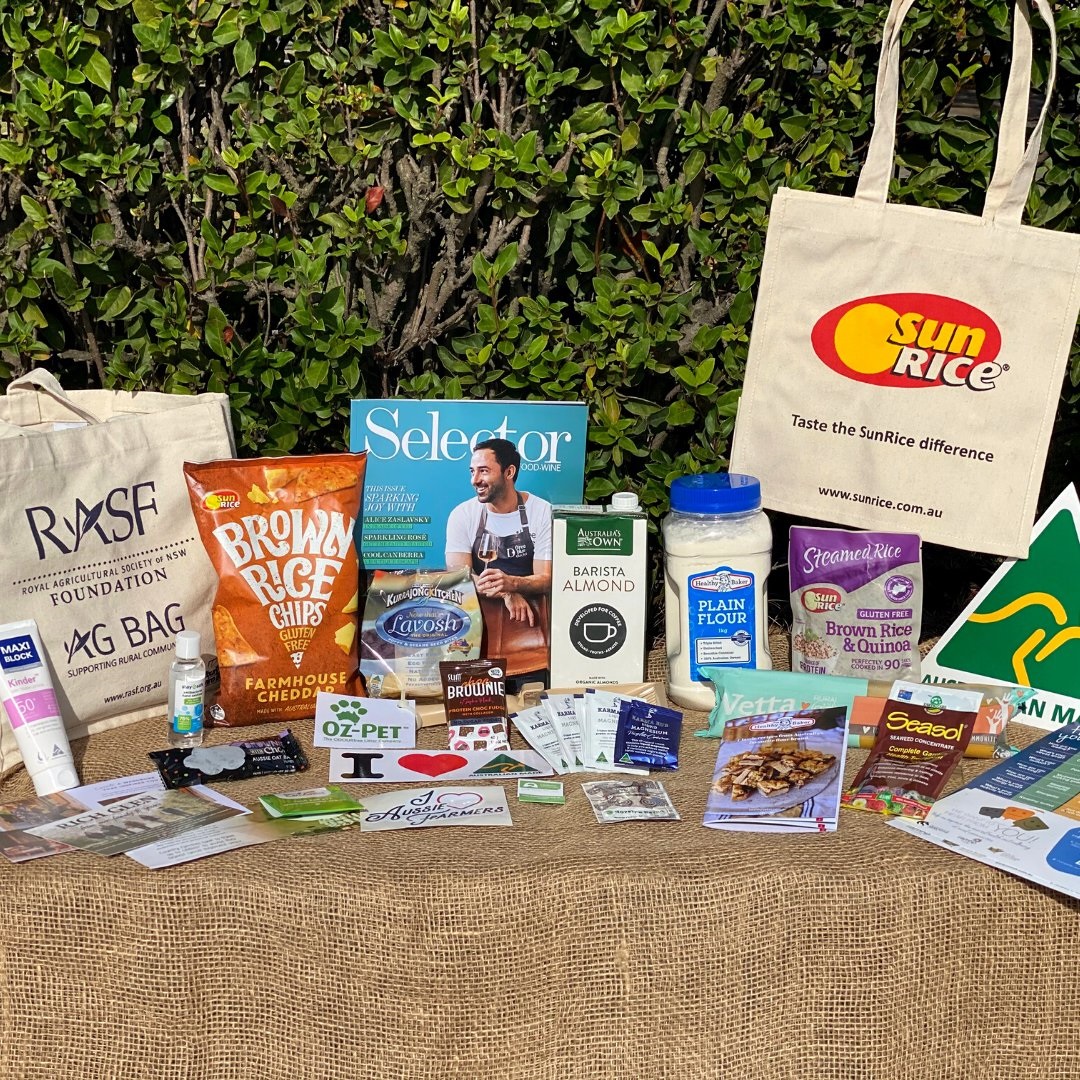
Ok, so that one may not interest you as much as the ones for youngsters, BUT, isn't it great to see and know how many different foods and products are made right here?
We were looking at the 2021 Sydney Royal Easter Show Prizes for cheeses, just announced, and that too is a great insight into what wonderful tastes come from right here, where you live. I can tell you, having spent some time visiting other places far from Australia, nothing compares to the quality and great clean tastes we have here.
Apart from the lollies bags there's some good value for boys and girls in other bags, if you really really are sure you want or need one of these and don't already have all of this at home already. The Voltron show bag, until they all go, looks good for those who are fans of Voltron.
Voltron - $20
Stand Numbers: BAG004, BAG009, BAG011, BAG014, BAG015, #18, #20, #21
What’s included:
1x Voltron Backpack $24.95
1x Voltron Cap $12.95
1x Voltron Drink Bottle $8.95
1x Voltron Sticker Patches $2.95
1x Voltron Playing Cards $4.95
1x Voltron Badges $4.95
1x Voltron Tote Bag $3.95
1x Voltron Lanyard $7.95
1x Voltron Flag $9.95
Total Retail Value: $81.55

Another good value one, which may appeal to little girls, is the Unicorn show bag.
Unicorn $30
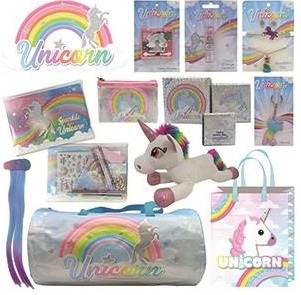 Stand Numbers: BAG004, BAG009, BAG011, BAG014, BAG015, #18, #20, #21
Stand Numbers: BAG004, BAG009, BAG011, BAG014, BAG015, #18, #20, #21
What’s included:
1x Unicorn Duffle Bag $19.95
1x Unicorn Coin Purse $4.95
1x Unicorn Hair Extension $4.95
1x Unicorn Jewellery Set $9.95
1x Unicorn Stationery Set $7.95
1x Unicorn Keychain $2.95
1x Unicorn Body Glitter $7.95
1x Unicorn Tote Bag $4.95
1x Unicorn Lipstick $3.95
1x Unicorn Trinket Boxes $6.95
1x Unicorn Stuffed Toy $9.95
Total Retail Value: $84.45
If you do get to go to the Show this year I do hope you will spend some time looking at the farm exhibits - this is one of the few opportunities city kids get to see what life is like on the land and the show itself is all about the country coming to the city, that's where it all began - as the Agricultural Society of New South Wales in July 1822 which means that next year, this great 'show' will be 200 years old.

Curious Kids: why do elephants have tusks?
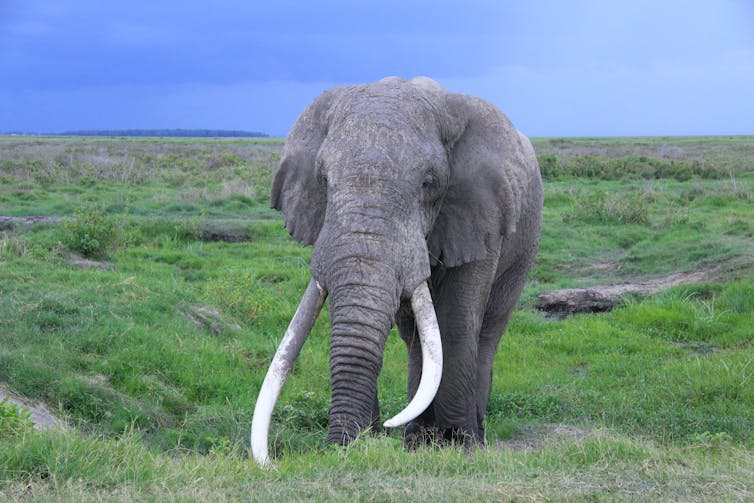
Why do elephants have tusks and we have hair? From Valentina, 6 years old, London
Elephant tusks are actually teeth. They are elongated incisors. We have incisors too – they’re the teeth at the front of our mouths, which we use for biting food. In elephants, these incisors continue to grow throughout their lives, extending from deep within their upper jaw.
The tusks are one of the most noticeable features of elephants, along with their massive body size and long trunk (one of the most amazing and versatile appendages in the animal world – but that is another story). In African elephants both males and females have tusks, while in Asian elephants only the males do.
While our incisors are used only for biting food, elephants use theirs for a whole range of activities, from digging holes and stripping bark from trees to fighting. They’ll even rest a weary trunk upon their tusks.
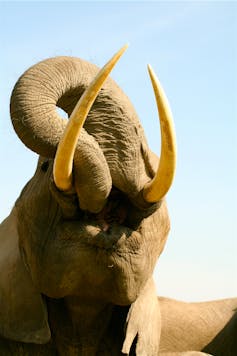
Generally speaking, male elephants use their impressive size to intimidate rivals and impress females. Size is so important in attracting mates that adult males have evolved to be twice as large as adult females, reaching a whopping seven metric tonnes. This is the weight of four family cars – with passengers. As part of the package, male elephant tusks are often five to seven times as large as those of adult females.
Some of the largest tusks ever recorded belonged to an old elephant called Ahmed, who lived in Kenya until the ripe old age of 65. His tusks were 3m in length and weighed 67kg each. That is 5kg more than the average weight of an adult human. Ahmed’s tusks were so big that it was rumoured he had to walk backwards uphill – a great story, but unlikely to be true.
Thanks to protection from the president of Kenya at the time, Ahmed got to live out his life in full, dying of old age in 1974. Sadly this is not the case for many elephants.
The Cost Of Ivory
Humans have long been attracted to the beautiful tusks of elephants. Ivory remains one of the most highly prized materials in the natural world. Unfortunately, this demand has led to the deaths of thousands of elephants across Africa, because the only way that humans can get hold of the elephant’s tusks is by killing them. Those targeted are often the oldest and largest animals – because they have the biggest and therefore most valuable tusks.
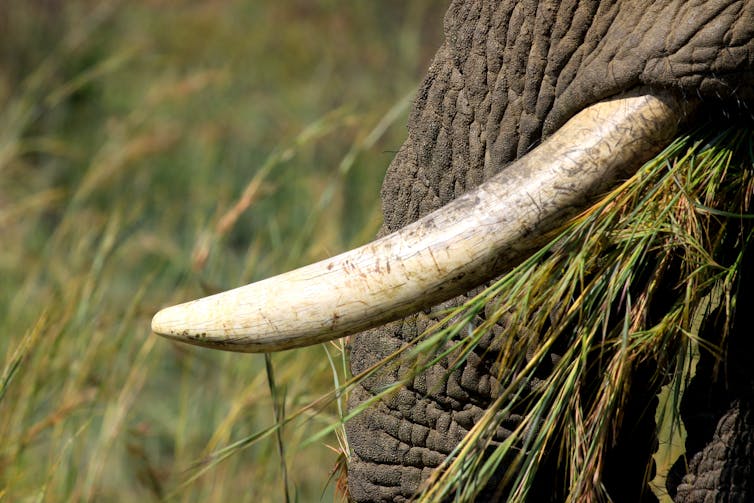
This is not only tragic for individual animals, but also for the wider elephant population, as the oldest and wisest elephants play a key leadership role in elephant society. In fact, we conducted experiments showing that the oldest elephant matriarchs – the female leaders of the family groups – were much better than younger matriarchs at distinguishing more dangerous male lions from female lions using just the sound of their roars.
The killing of elephants for ivory has actually resulted in elephants having smaller tusks now than they did just a few decades ago (a 2015 study noted a 21%-37% decline). Plus, particularly in the areas where illegal killing has been most common, there is a huge increase in the number of elephants that don’t have any tusks at all. In a normal population you might expect two or three out of every hundred elephants to be tuskless, but in one population in Mozambique this has reached 32%.
Now, these elephants are likely to be at an advantage as they are much less likely to be targeted by poachers. A greater chance of surviving and breeding might explain why these tuskless animals have become more common in the population. (Studies are underway) to determine whether that is the case. What we don’t know is how not having tusks affects the day-to-day lives of these elephants when it comes to feeding and interacting with others in the population.
The good news, however, is that when protected and given space to roam, elephant populations can flourish. There are many excellent conservation projects across Africa and Asia working hard to ensure that elephants – and their tusks – are a part of the natural world for many years to come.
Indeed, by greatly reducing the number of elephants killed for their ivory, we can protect remaining populations, and potentially halt, or even reverse, the decline in tusk size. Who knows, maybe there is a young elephant in Africa who is destined to one day rival Ahmed and his mighty tusks.
As For Hair …
Interestingly, elephants and humans both have hair. In fact, all mammals have hair at some point in their lives, even whales and dolphins. It is just present in differing amounts, which generally depends on how useful it is to the animal for keeping warm.
Elephants for example, have a very sparse covering of wiry hair across their bodies, which is only noticeable from very close up. Compare this to sea otters, which have some of the most densely packed hair in the mammal world: 130,000 hairs per sq cm.
The human head, by comparison, has between 124-200 hairs per sq cm. For sea otters, the value of that dense fur is to keep them warm in chilly seawater. Elephants commonly face the opposite challenge of needing to stay cool in hot environments, and therefore have very little hair.![]()
Graeme Shannon, Lecturer in Zoology, Bangor University
This article is republished from The Conversation under a Creative Commons license. Read the original article.
Curious Kids: how do freezers work?
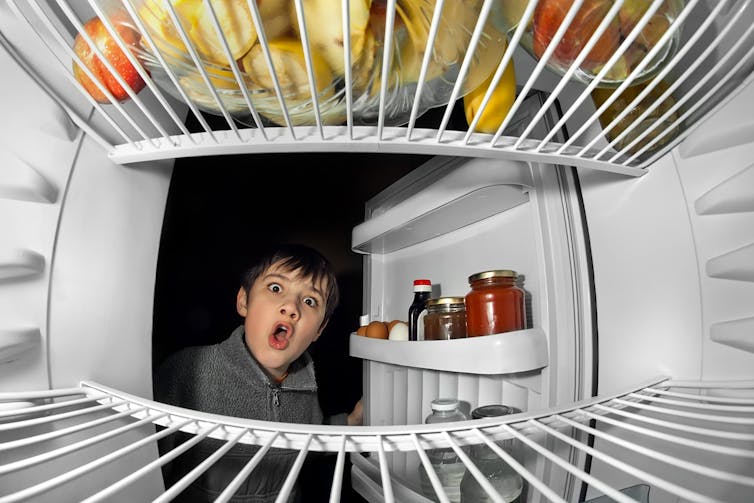
How does the freezer work? — Leon, aged 4
Hi Leon,
That’s a great question! But freezers are a bit tricky to explain, so we’ll need to talk about a few other things first.
Everything you can touch and feel (like air, water, rocks and mice) is made of tiny balls called atoms. When atoms join up into small groups moving around together, they are called molecules. Atoms and molecules are too small to see without very powerful microscopes.
Solids, Liquids And Gases
Most things come in three phases: solid, liquid or gas. Think of ice, water and steam. If a gas is not too hot, we can also call it vapour. (There are other phases too, but let’s ignore them for today.)
In solids (like ice), atoms or molecules are tightly stuck together and can barely move. They are usually lined up in neat rows called crystals. In liquids (like water) atoms or molecules are loosely stuck close together, but can move around. In a gas (like steam), atoms or molecules are far apart and free to float away from each other.
Most gases, including air, are made of small molecules. Some gases (like the helium inside floating party balloons) are made of single atoms moving around on their own.

If I heat up a solid, the atoms or molecules start to bounce a little bit, but they still stay stuck in their neat rows. Now, if I add an extra burst of heat, the solid turns into liquid. This means the atoms and molecules bounce around so hard they start to move around, breaking up those neat rows. Although the atoms can now flow around, they still stay very close together. This is what’s happening if you put an ice block in a bowl and watch it slowly melt into water.
To turn a liquid into a gas (or vapour), the atoms and molecules must break away completely from their neighbours. This takes another extra burst of heat to give the atoms and molecules a kick to rip them away from their sticky neighbours and float away. (Scientists call this extra burst of heat latent heat.)
This is what happens when you put water into a kettle, turn on the heat, and watch the steam floating out of the spout.
These atoms or molecules carry that extra burst of heat away with them when they float away. This is why your face feels cooler if the wind turns your sweat into vapour and floats away from your face.
Read more: Curious Kids: Why can some cups go in the microwave and some not?
OK. Now let’s try it backwards. If you take enough heat out of a vapour (like steam), it will turn back into a liquid (like water). Whenever this happens, the vapour brings the extra burst of heat back into the liquid.
Now, finally, I can explain how your freezer works.
How The Freezer Works… At Last!
Hidden inside the walls of your freezer is a curly metal tube called a cooling pipe. It is full of a special liquid that evaporates easily.
The cooling pipe is connected to a pump that sucks in vapour from the cooling pipe. The sucking makes more liquid turn to vapour, and when that happens it takes some heat out of the freezer. Just like sweat floating away cools your face down, this vapour floating away makes the inside of the freezer cool down.

Next, the pump takes vapour from the cooling pipe and squeezes it into another curly pipe on the outside of the back of the fridge. When the pump squeezes the vapour, it pushes the molecules closer together so they start to stick together and turn into a liquid again.
When the gas turns back into a liquid, it gives off the latent heat energy it took from the freezer. So the pipe on the back of the fridge gets warm, and the heat escapes into the air in your kitchen.
Read more: Curious Kids: how does heat travel through space if space is a vacuum?
In other words, the pump moves heat from inside your freezer and lets it go into your kitchen, making the freezer colder and your kitchen warmer. If you feel the back and sides of your fridge, they should feel a bit warm. That’s the heat that used to be inside your freezer!
After releasing its heat energy, the liquid leaks through a little skinny pipe back into the cooling pipe where it started. Then the sucking from the pump turns it into gas again, and the whole cycle repeats over and over. And that’s what keeps your freezer cold.
Hello, curious kids! Do you have a question you’d like an expert to answer? Ask an adult to send your question to curiouskids@theconversation.edu.au![]()
Stephen G Bosi, Senior Lecturer in Physics, University of New England
This article is republished from The Conversation under a Creative Commons license. Read the original article.
'What are you afraid of ScoMo?': Australian women are angry — and the Morrison government needs to listen
Camilla Nelson, University of Notre Dame AustraliaThousands of women are gathering in cities across the country, angry about the allegations of rape, sexual abuse and harassment emerging from our parliaments and schools. They’re also furious with a prime minister who’s said he’s too busy to attend a rally in person to hear these concerns and would prefer a private meeting.
In Sydney, thousands of women gathered in crowds outside the town hall, spilling into the surrounding streets. They were dressed in black, waving placards: “What are you afraid of ScoMo?”, one read. “You will be held accountable,” said another. Another: “We shouldn’t need to do this.”
Lawyers were also conspicuous, some bearing the logos of prominent Sydney firms. “Lawyers for equality” their slogans read, and “We fight fair”.
Men of all ages were also there, together with First Nations sisters and members of non-binary, trans and queer communities.
Mounted police were making their presence felt at the edge of the crowd.
The mood was defiant, with the slow burning anger of women who were determined to fight for the long term. “We will not be silenced,” investigative journalist Jess Hill told the crowd. “The time for silence is over.”
“We’re marching for justice,” said another speaker. “We won’t stop marching until we have justice.”
A Moment To Listen
It shouldn’t be that hard for a prime minister to realise this is a moment to listen.
The powerful words of Grace Tame, Australian of the Year and a child abuse survivor, have been a catalyst for longstanding rage. The rape allegations made by Brittany Higgins demand attention and action. The online petition launched by former Sydney schoolgirl Chanel Contos, which triggered a string of sexual assault allegations against students from elite boys’ schools, underscores the depth of the problem.
NSW police are also investigating allegations women as young as 16 were harassed in MP Craig Kelly’s electorate office by an employee (who denies the allegations and remains in his role at Kelly’s office). Allegations of sexual harassment have also been tabled in the South Australian parliament.
The nation’s first law officer, Attorney-General Christian Porter, faces an allegation he raped a 16-year-old girl more than 30 years ago. He has strongly denied the allegation, but many have continued to call for an open inquiry into the claim.
By refusing to step outside the parliament to answer women’s justified concerns, the prime minister has demonstrated callous indifference. It looks like he is prioritising media management — the risk someone will snap an unflattering photograph as he embarks on his next campaign — above humanity.
Minister for Women Marise Payne drew further attention to the government’s contempt by similarly signalling her intention to remain absent today.
This disregard builds on the prime minister’s already very public refusal to read the words of the woman at the centre of the Christian Porter case. Morrison said he discussed the claims with the accused, “who absolutely rejects these allegations”, and spoke to the Australian Federal Police commissioner and various senior public servants. Having done all that, he told reporters, “there are no matters that require attention”.
In responding this way, the prime minister has generated more of the anger he hoped would disappear.
Last week at his media conference, the attorney-general asked the media to imagine “just for a second” that the allegations are not true. The women gathered at the March 4 Justice are answering that we also have a moral obligation to imagine “just for a second” that they are. What then?
A Systemic Culture Of Sexism
In Australia, up to one in five girls will be sexually asaulted. Of women over 15, one in two report being sexually harassed. The aged care royal commission heard there are 50 sexual assaults a week in the aged care system.
I am no longer surprised to hear disclosures of sexual assault and domestic violence from my students or other women. I am only surprised when a woman claims she hasn’t been.
Workplace sexual harassment particularly affects women in their early 20s when they are too young to have gained access to inner circles occupied by slightly older women – the places where discrete warnings against certain male colleagues are issued, but only whispered for fear of defamation suits.
The wrongness of sexual abuse has only recently – and unevenly – been recognised. But there is a terrifying contradiction between the wrongness of rape and sexual assault and harassment, the sheer prevalence with which it occurs, and the inability for women to obtain redress from the courts via the so-called “rule of law” repeatedly invoked by the prime minister.
This moment is a reckoning well beyond the Christian Porter or Brittany Higgins allegations, or the findings made against former High Court Justice Dyson Heydon by a High Court inquiry.
Ending Canberra’s toxic culture is the rallying point, but women are also taking to the streets because these failures are intrinsically connected to a systemic culture of sexism in law, politics and policy-making.
Last week, a Grattan Institute report revealed women took the brunt of job losses generated by the pandemic. It also confirmed that women experienced a disproportionate share of the burden of unpaid work during lockdown, particularly the burden of home schooling. Female casual workers were also disproportionately excluded from government benefits such as JobSeeker. Meanwhile, plans for family law reform due to be tabled this week are likely to have dramatic impacts for survivors of domestic violence and their children.
The government’s apparent inability to adequately listen or respond to the serious concerns of women suggests a deep, underlying cultural reason for its policy failures.
The gains that older women, and women of my own generation thought we had won, seem to be evaporating. Or perhaps the real problem is that at a cultural level, they were never really won at all. And so the fight begins again.
If this article has raised issues for you, or if you’re concerned about someone you know, please call 1800RESPECT on 1800 737 732 or Lifeline on 13 11 14.![]()
Camilla Nelson, Associate Professor in Media, University of Notre Dame Australia
This article is republished from The Conversation under a Creative Commons license. Read the original article.
New Titles Added To TROVE
- NOTA - News Of The Area (Hawks Nest & Tea Gardens, NSW) 1970-1999
- Nowra Colonist (NSW) 1899-1904
- The Telegraph and Shoalhaven Advertiser (NSW) 1879-1881
- Windsor & Richmond Gazette (NSW) 1888-1961
- Box Hill Reporter (Vic) 1925-1930
- The Reporter (Box Hill, Vic) 1889-1925
- The Brunswick and Coburg Leader (Vic) 1914-1921
- Mildura Telegraph and Darling and Lower Murray Advocate (Vic) 1913-1920
- Dampier Herald (Kununoppin, WA ) 1928 - 1937
- Cathedral Chronicle (Geraldton, WA ) 1931 - 1954
- Corrigin Chronicle and Kunjin-Bullaring Representative (WA) 1925 - 1943
- Weekly Judge (Perth, WA) 1919-1931
New City At Aerotropolis To Be Named Bradfield
Major Milestone For Prince Of Wales Hospital Redevelopment
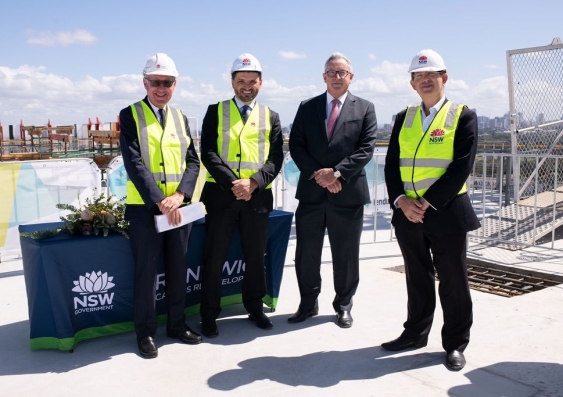
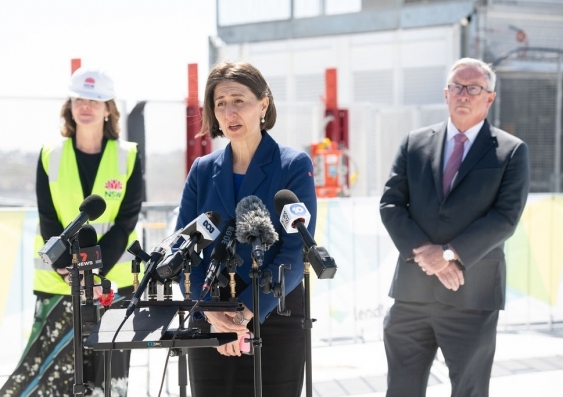
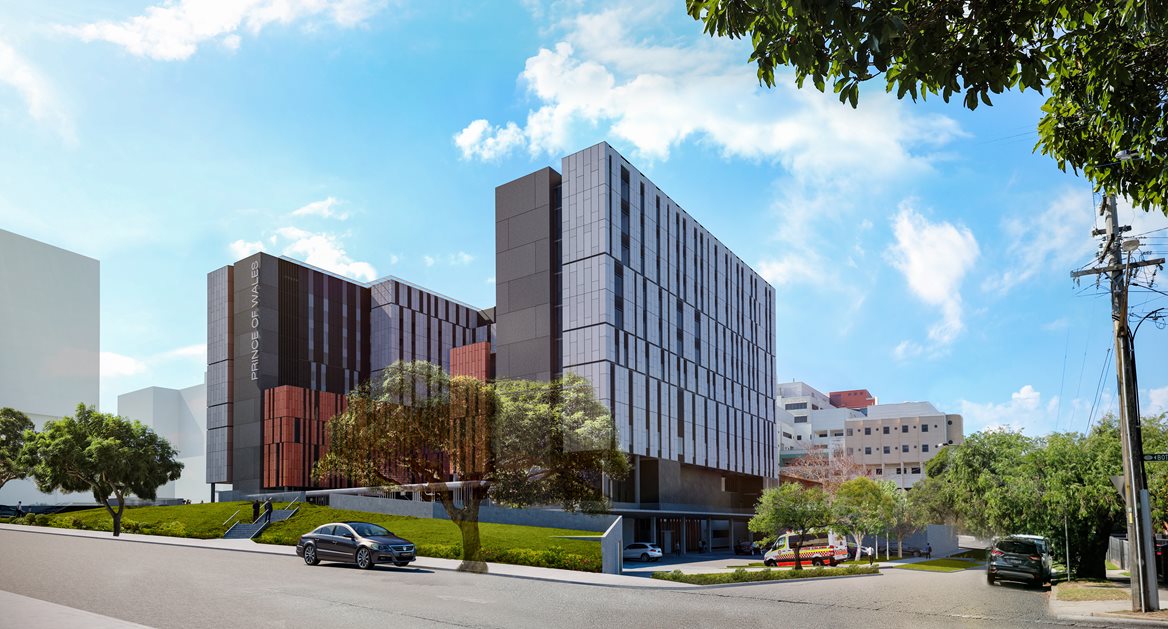
Standard Digital Camera And AI To Monitor Soil Moisture For Affordable Smart Irrigation
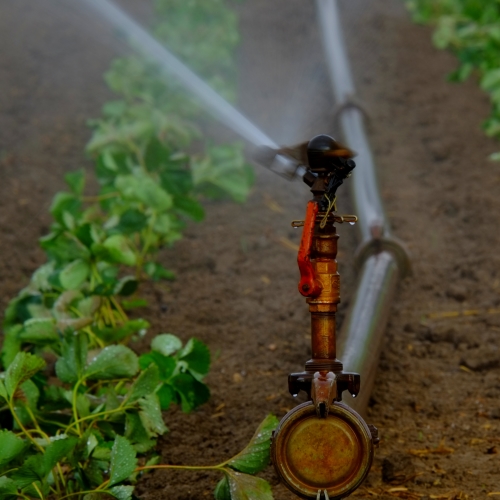 Researchers at UniSA have developed a cost-effective new technique to monitor soil moisture using a standard digital camera and machine learning technology.
Researchers at UniSA have developed a cost-effective new technique to monitor soil moisture using a standard digital camera and machine learning technology. New Lease For Sydney Harbour Trust Sites
- Develop a statement of reasons explaining why it considers the proposal is consistent with the objectives for Harbour Trust sites of public access and amenity, and the conservation of heritage
- Consult with the community on the proposal, and seek advice from its Community Advisory Committee
- Reflect community feedback in the statement of reasons submitted to Parliament.
Punishment For ‘Chip Tube’ Smuggler Of Native Species
First World Report On Hearing Calls For Action On A Hidden Public Health Burden
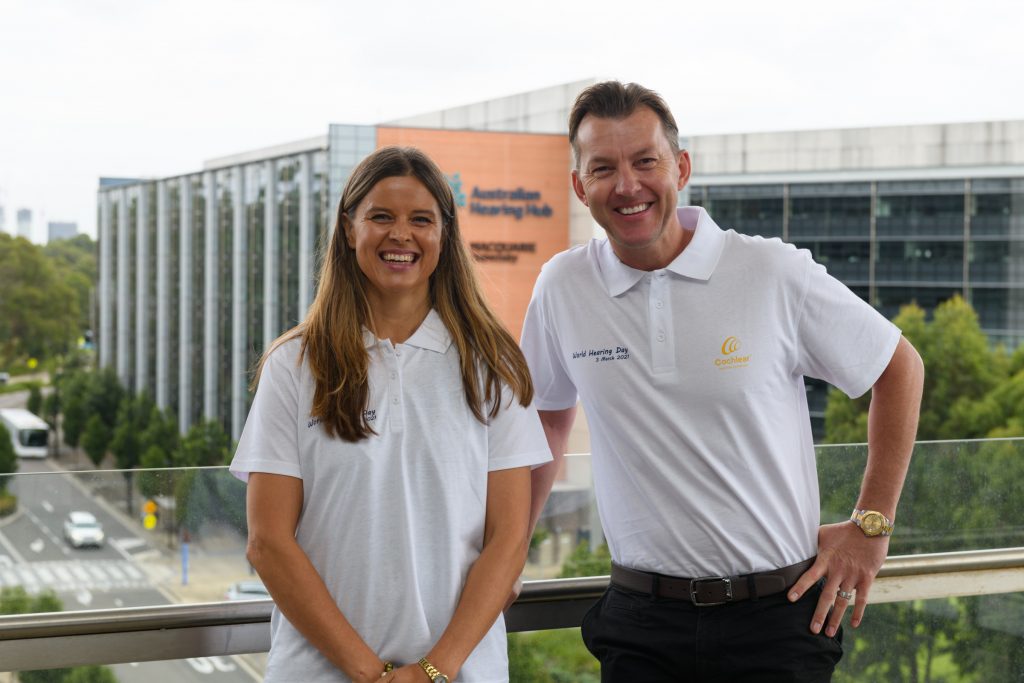
- Audiology Australia
- Aussie Deaf Kids
- Centre of Research Excellence in Ear and Hearing health of Aboriginal and Torres Strait Islander Children
- Cochlear
- Deafness Forum
- Ear Science Institute
- HEAR (Hearing Education Application Research) Centre at Macquarie University
Devastatingly Pervasive: 1 In 3 Women Globally Experience Violence - Younger Women Among Those Most At Risk: WHO
- Sound gender transformative policies, from policies around childcare to equal pay, and laws that support gender equality,
- A strengthened health system response that ensures access to survivor-centred care and referral to other services as needed,
- School and educational interventions to challenge discriminatory attitudes and beliefs, including comprehensive sexuality education,
- Targeted investment in sustainable and effective evidence-based prevention strategies at local, national, regional and global levels, and
- Strengthening data collection and investing in high quality surveys on violence against women and improving measurement of the different forms of violence experienced by women, including those who are most marginalised.
- Oceania – 51% Melanesia; 41% Micronesia; 39% Polynesia
- Southern Asia - 35%
- Sub-Saharan Africa - 33%
- Northern Africa – 30%
- Western Asia – 29%
- Northern America – 25%
- Australia and New Zealand – 23%
- Latin American and the Caribbean – 25%
- Northern Europe –23%
- South-Eastern Asia – 21%
- Western Europe – 21%
- Eastern Asia – 20%
- Eastern Europe – 20%
- Central Asia – 18%
- Southern Europe – 16%
Disclaimer: These articles are not intended to provide medical advice, diagnosis or treatment. Views expressed here do not necessarily reflect those of Pittwater Online News or its staff.
